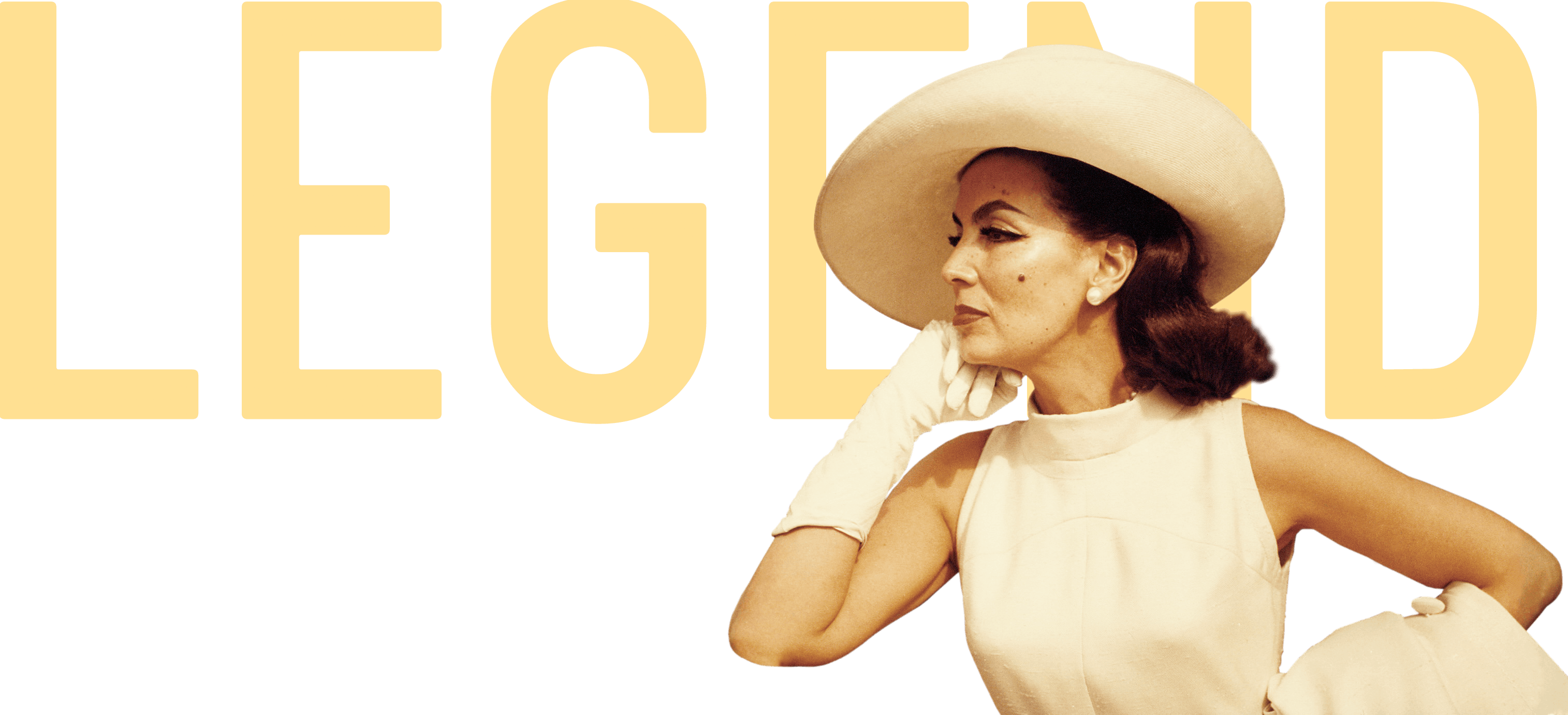
Estate of María Félix shares the interest of the public, specialists and investors to pay a permanent tribute in this space. Our aim is to promote and emphasize the importance of María Félix as a representative icon of Mexican culture, while recognizing the significance of her influence in art collecting, fashion, literature, music and cinematography. Likewise, we to preserve the material heritage of La Doña as a testimony of perseverance, discipline and success, all of which constitute an example of her legacy for Mexico, Latin America and Europe.
Concatenated in chronological order and emphasizing the relevance of the facts, this source offers to all those who consult it important breakthroughs and information about the life of María Félix. Under an historical perspective, this source addresses several aspects of both her private and professional life, as well as their subsequent dissemination processes, and the professionalization of her universal heritage legacy.
The Félix-Güereña marriage had sixteen children, of which twelve survive. María is very fond of her brother Pablo, with whom she also has a great resemblance and whom she would always remember as “a beautiful God”.

In April 8 is born, in Álamos, Sonora, María de los Ángeles. She is the daughter of Félix, of Yaqui origin, and Josefina Güereña, of Basque descent.
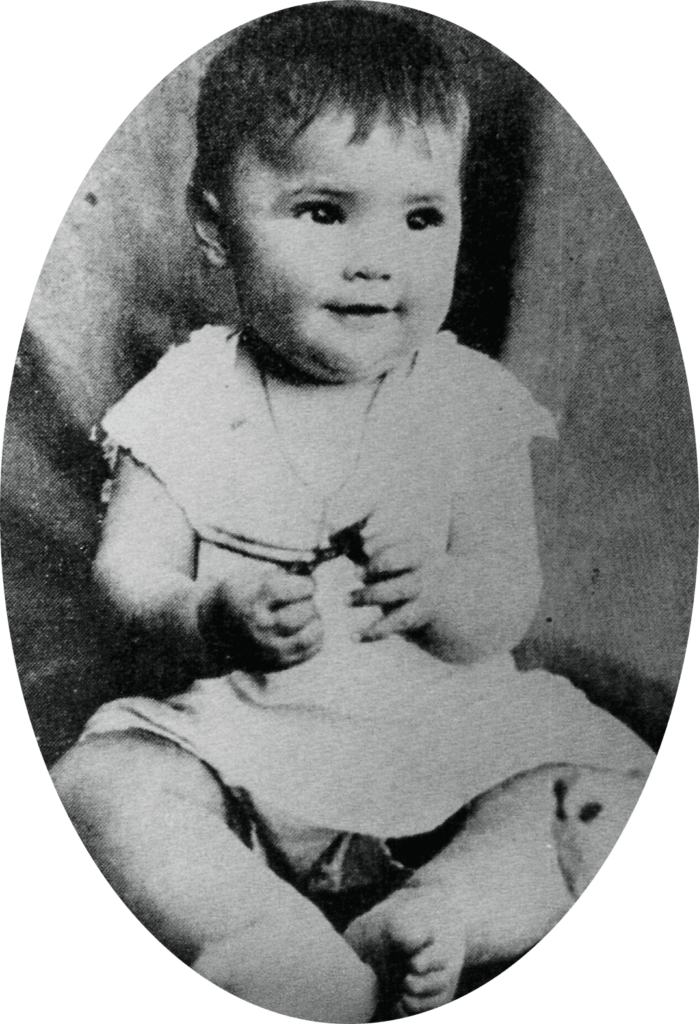
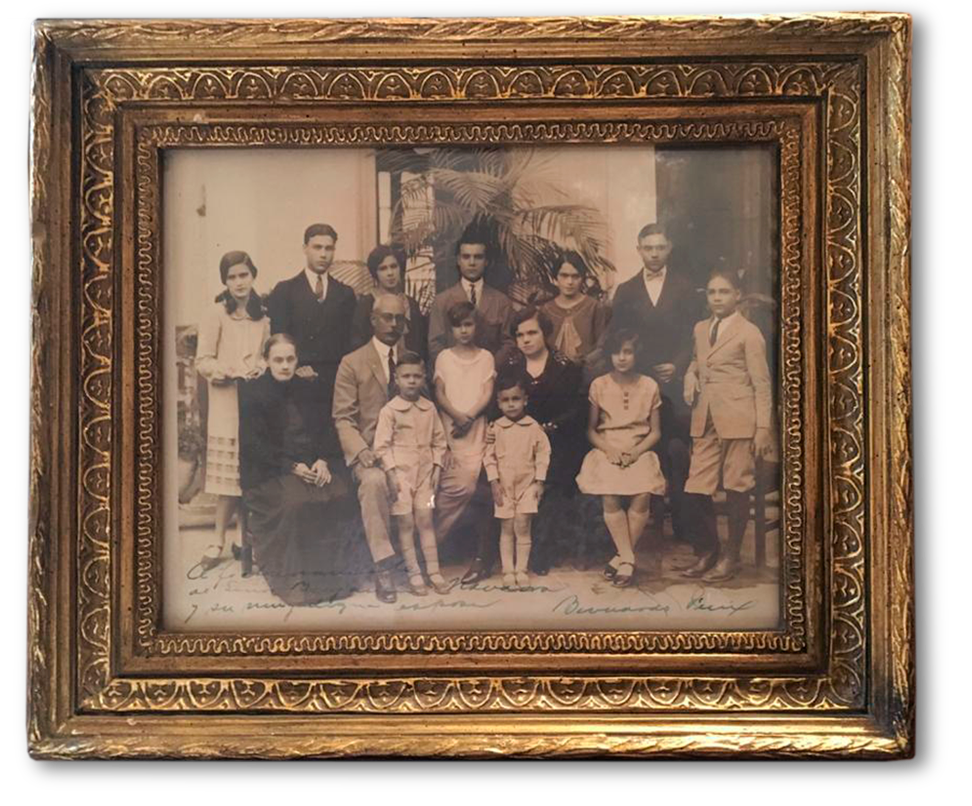
She grows up between her grandfathers’ ranch and the former town of Real de Minas, in Álamos, distant from typical women’s games of the time: even as a little girl, she rides horses with her brothers.
She lives an anecdotal childhood that takes place between sleepwalking and stuttering.
She receives from her brothers a porcelain box from the French creator Jacob Petit, which becomes the first piece of the vast nineteenth-century collection that she would integrate, and her first formal approach to the world of antique collecting.
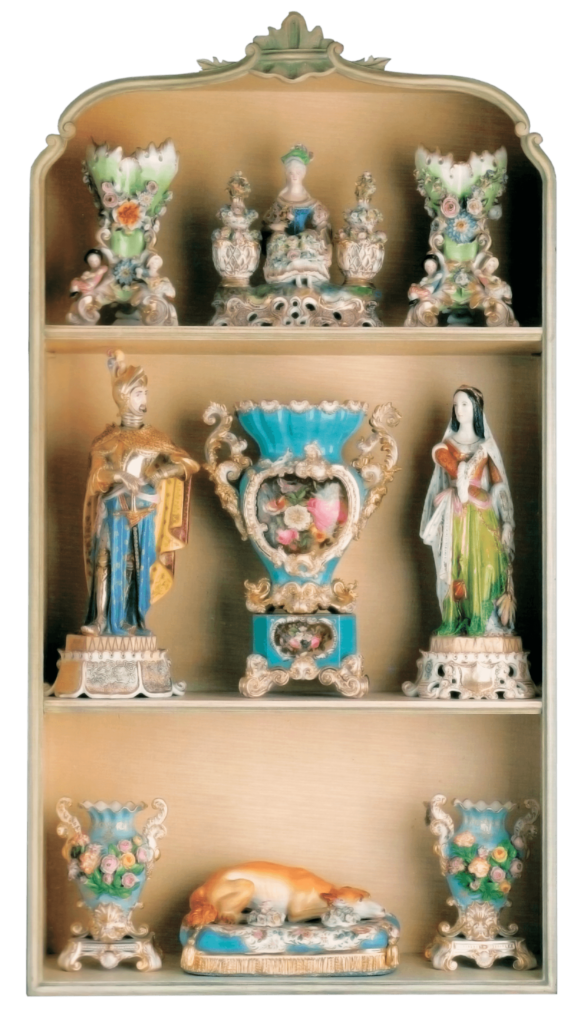
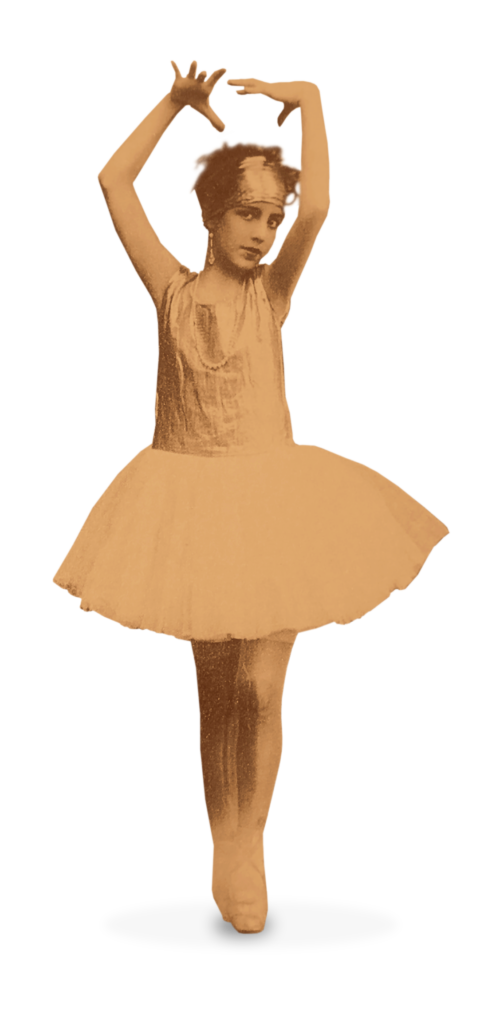
From her mother, she inherits refinement: “The splendor begins in bed,” a phrase that refers to the importance of embellishing the bed with lace, trimmings and frills, and explains the great collection of old textiles with which she would beautify her private life.
She studies both modern and classical dance.
She gets into the habit of reading, with which she complements her studies. Her father’s library encourages in María an interest in Mexican history, literature and the exercise of memory. Decades later, she recovers those books from her brothers and consolidates the three libraries of her houses.
Full of youthful emotions, she feels attracted to one of her school teachers.
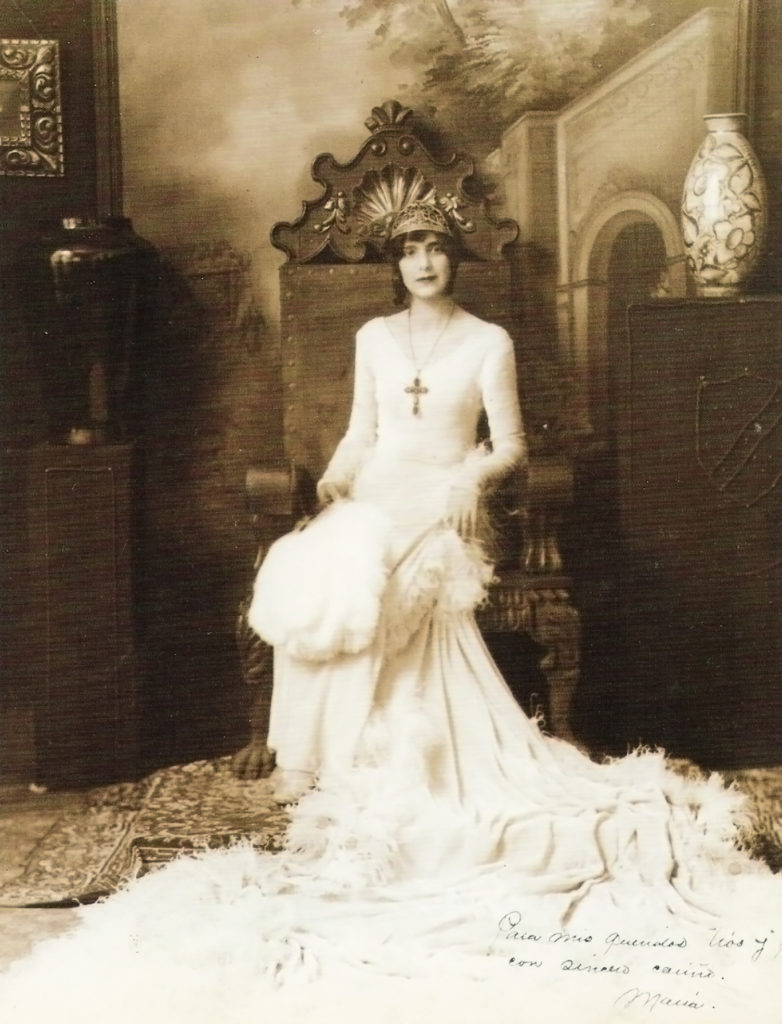
With fifteen years and a refulgent beauty, she is named Queen of the students of the University of Guadalajara.
His father decides to send her brother Pablo to study at the Military College of Mexico City, with which she is separated from her partner in crime and sunshine.

At a costume party, she meets Rafael Corcuera, a wealthy family man with whom she creates a sentimental bond.
During picnic in Chapala she is presented with Enrique Álvarez Alatorre, who soon would be her first husband.

On January 10, without family leave and in search of her freedom from the paternal yoke, she marries in the Metropolitan Tabernacle of Guadalajara with Enrique Álvarez. Their honeymoon trip takes her to Lake Chapala.
The newlyweds rent a modest apartment in downtown Guadalajara. The couple’s economy depends on Enrique’s income as a sales representative of Max Factor beauty products.
The jealousy and infidelities of her husband lead her to remain frequently confined in her home.
Marital life is limited to the darkness of movie theaters where the couple arrives just after the movie has started and withdraws before its end to prevent her beauty from capturing the eyes of other men.
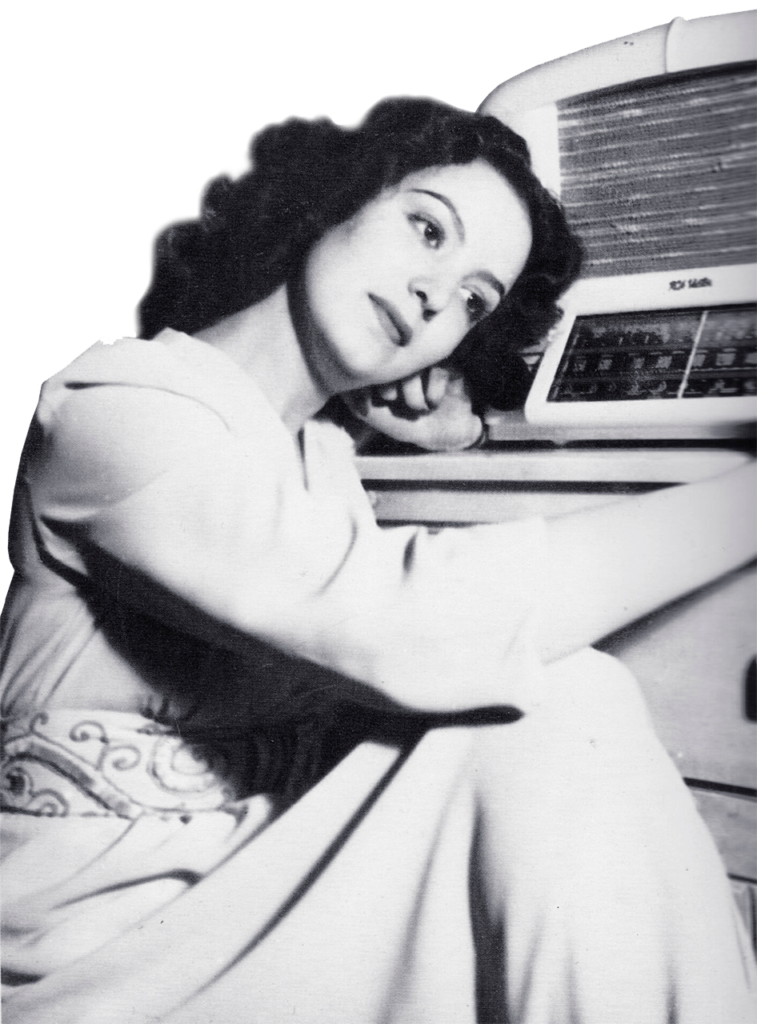
She spends the afternoons listening to Agustín Lara’s Hora íntima (The Intimate Hour) radio talk show on the XEW. While listening, she tells her sisters: “I’m going to get married to that man,” a phrase that reveals her marital discomfort.
On May 6, her son Enrique dies of a heart attack. He would become her faithful companion, friend and partner in crime throughout her life.

Tired of the estrangement with her family and the confinement forced by her husband, she commits adultery with her neighbor Francisco Vázquez Cuellar.
She finds out that her husband suffers from a sexually transmitted disease and ends her relationship with him.
On December 26, she learns that her brother Pablo has committed suicide at the Military College of Mexico City. But she would always claim it was a homicide, and she was right, as recent historical findings support it.

She divorces Enrique Álvarez Alatorre.
The Félix-Güereña family moves to Navojoa, Sonora.
Now in her hometown, she suffers from the social punishment resulting from her divorce.

She takes the subpacific train and moves with her son Enrique to Mexico City.
They live in a guest house on 70 Hamburgo Street.
She works as a receptionist in the office of a plastic surgeon, who calls her Miss Happy.
Her ex-husband decides to take custody of Enrique and takes him to live in Ajijic, Jalisco, under the care of his grandmother Paz Alatorre. María takes this as a personal affront and threatens her husband that someday she will have more money and more power to regain custody of their son.
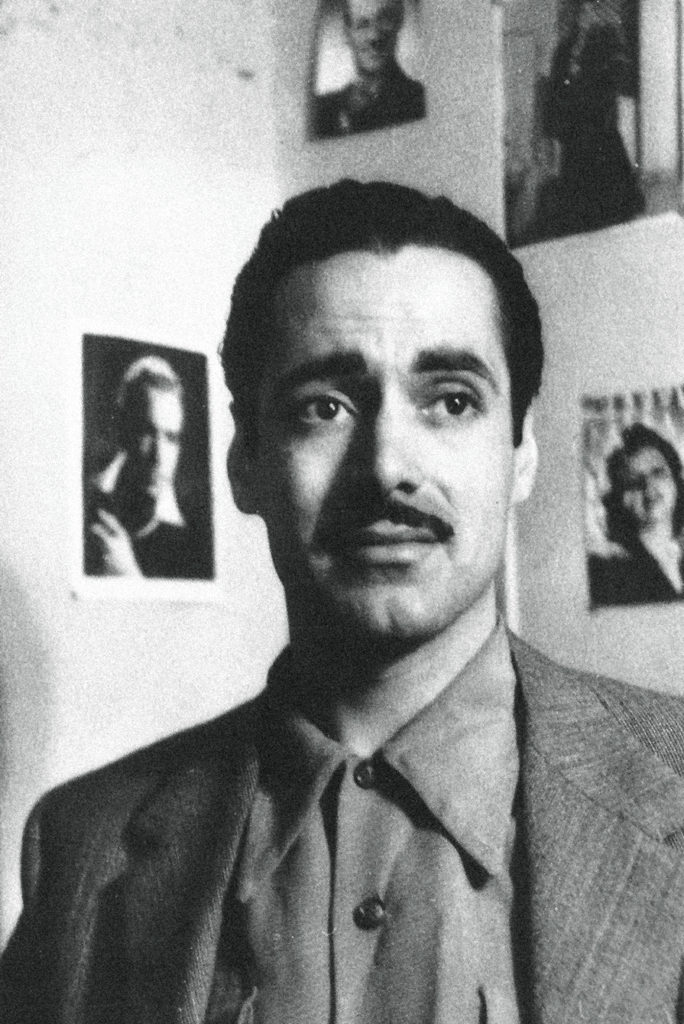
She meets Ernesto Alonso, who gives her silk stockings as a present and takes her to a Spanish-style bullfighting show.
While waiting in the queue of a public telephone on the corner of Paseo de la Reforma and Lafragua streets, she first meets Agustín Lara and, despite the briefness of the encounter, they manage to hold the first of many discussions they would have.
She is window-shopping at an antique boutique on Palma Street when she is approached by Engineer Fernando Palacios, who suggests that she could become a movie star.
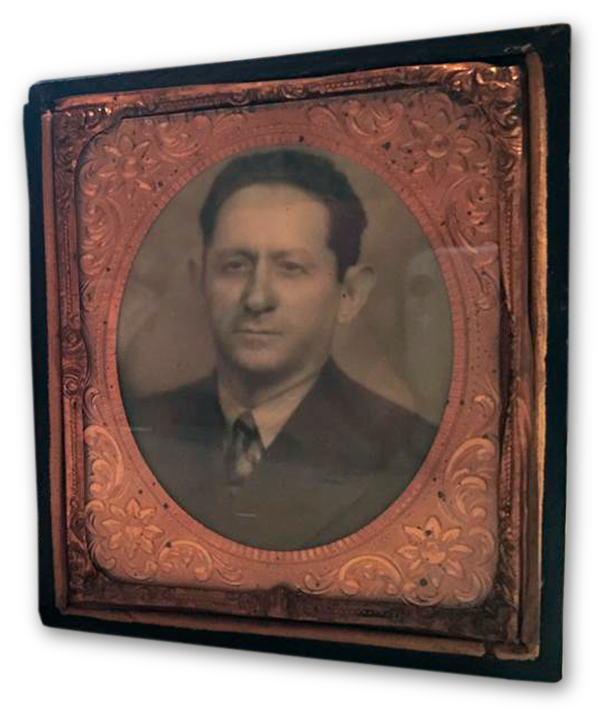
Gabriel Figueroa shoots her first photographic study in 35 mm format.
She is suggested to be artistically named Diana del Mar or Marcia Maris, but she categorically rejects both options.
She joins a work team led by Fernando Palacios to support her film debut with acting, diction and dance classes. The image and costume designs are carried out by Armando Valdés Peza.
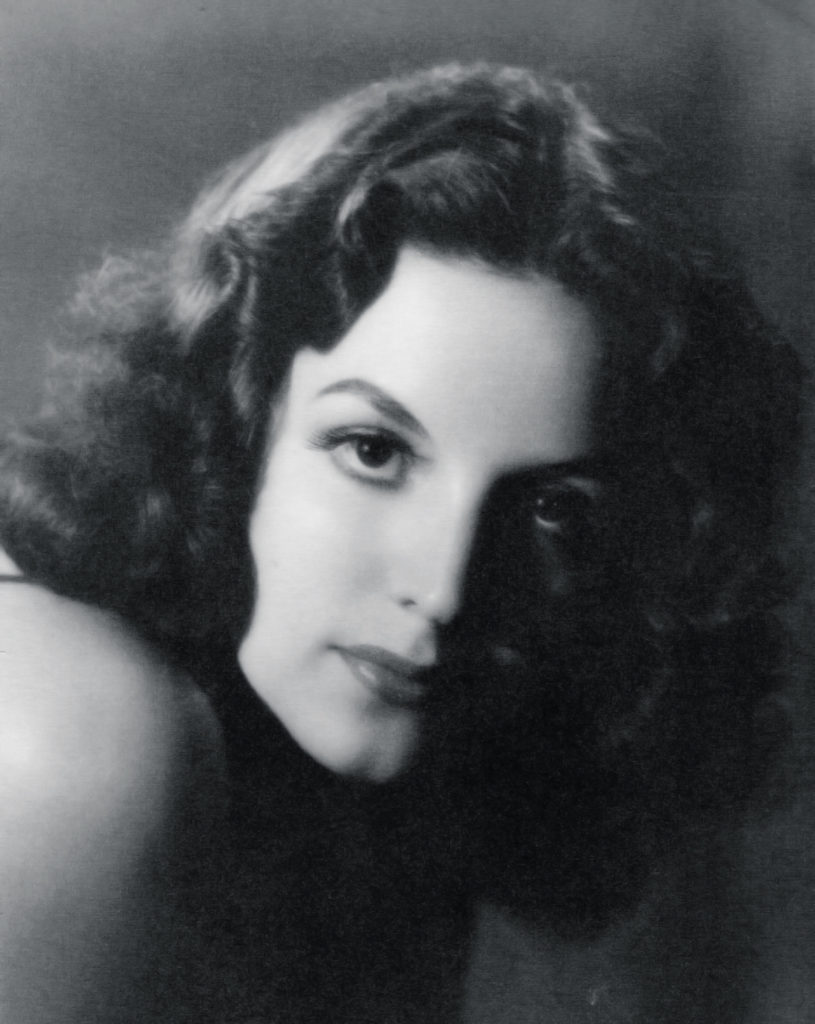
Her first public appearance is in the Black and White dance of Mexico City’s Country Club.
Ernesto Alonso, also a debutant, accompanies her in her first film raids.


Her film career begins with the filming of El peñón de las ánimas (The Rock of Souls) in the role of María Ángela Valdivia.
Rivalry and humiliation are a constant among the protagonists during filming. The disagreement she has with Jorge Negrete would culminate ten years later, in the so-called Wedding of the Century.
During the filming, she meets Raúl Prado, a member of the Trio Calaveras, with whom the press relates her sentimentally, even saying that they had married in secret, something she would always deny.
Her debut leads to family breakdown due to her father’s disagreement with her new career choice.

She starts the filming of her second film, María Eugenia, in which she embodies the archetype that would define many of her roles on the screen: that of an unscrupulous woman oriented to economic and social ascent.
The only shoot in which she can be seen in a bathing suit is filmed; it becomes a phenomenon of censorship, but an object of worship by its fans.
She travels to Los Angeles, California, only to get to know the film industry that never interested her professionally. She meets Greta Garbo.
The favorable circumstances lead her to the role that would boost her professional career and would become a true milestone in history: Doña Bárbara.
Rómulo Gallegos’ Doña Bárbara gets bounded to the Doña, to the point when both names are considered synonyms. Both reality and fiction combine to consolidate in María the identity that takes the world by storm when she walks into a room.
The success Doña Bárbara is instantaneous. All Latin American borders fall under her interpretative strength.
As thanks to Fernando Palacios in the role of Director, she stars in La china poblana (The China Poblana), but she would never be proud of the outcome of the film, which she considered her “beginner’s sin.” On March 24, 1982, the only copies of the movie are lost after the fire at the Cineteca Nacional.

In La mujer sin alma (The Soulless Woman), she is seen for the first time singing, performing the theme Tuya (Yours), but she was lip-synching.
She begins to consolidate her image as a man-eater, as well as that of the Mexican film star with the greatest personality.
At the premiere of Doña Bárbara, Tito Novaro formally introduces her to Agustín Lara. During the weeks of the courtship that came just after, they are seen frequenting the clubs Ciro´s, Salón México, Leda and Esmirna. She begins a relationship with Lara, who writes the first song dedicated to her: Saca los nardos, morena (Take out the tuberoses, brunette).
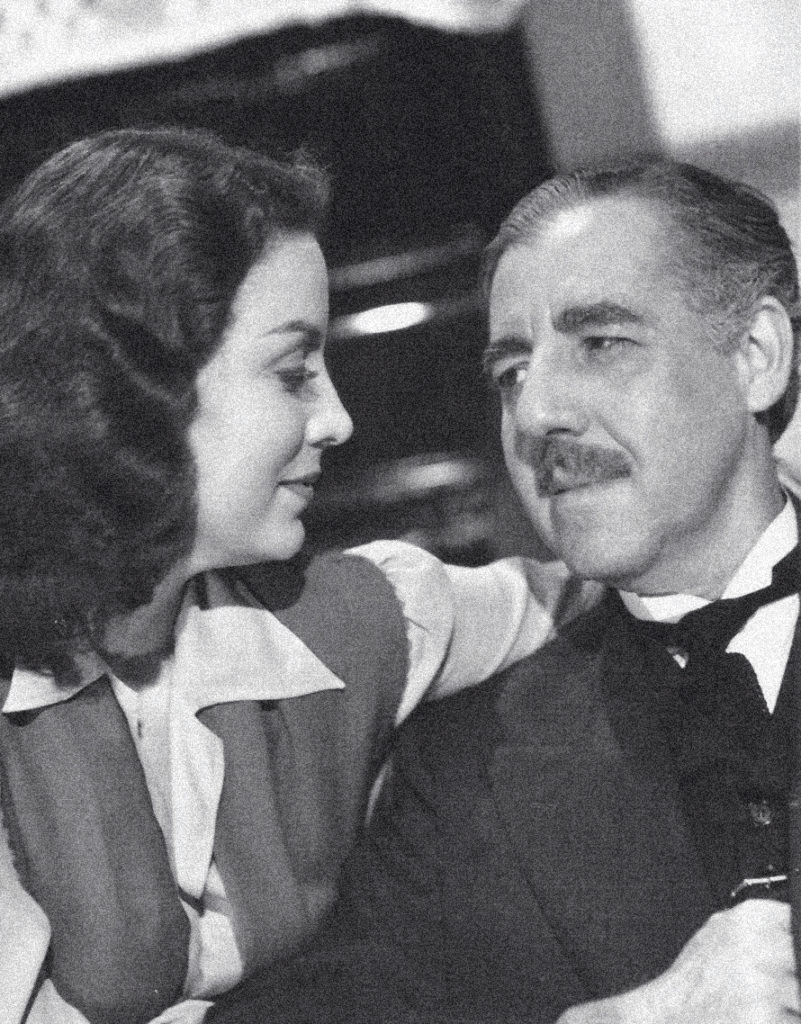
Soon after, she moves to a residence on 37 Galileo Street, where she is entertained by the poet musician with compositions, furs and jewelry.
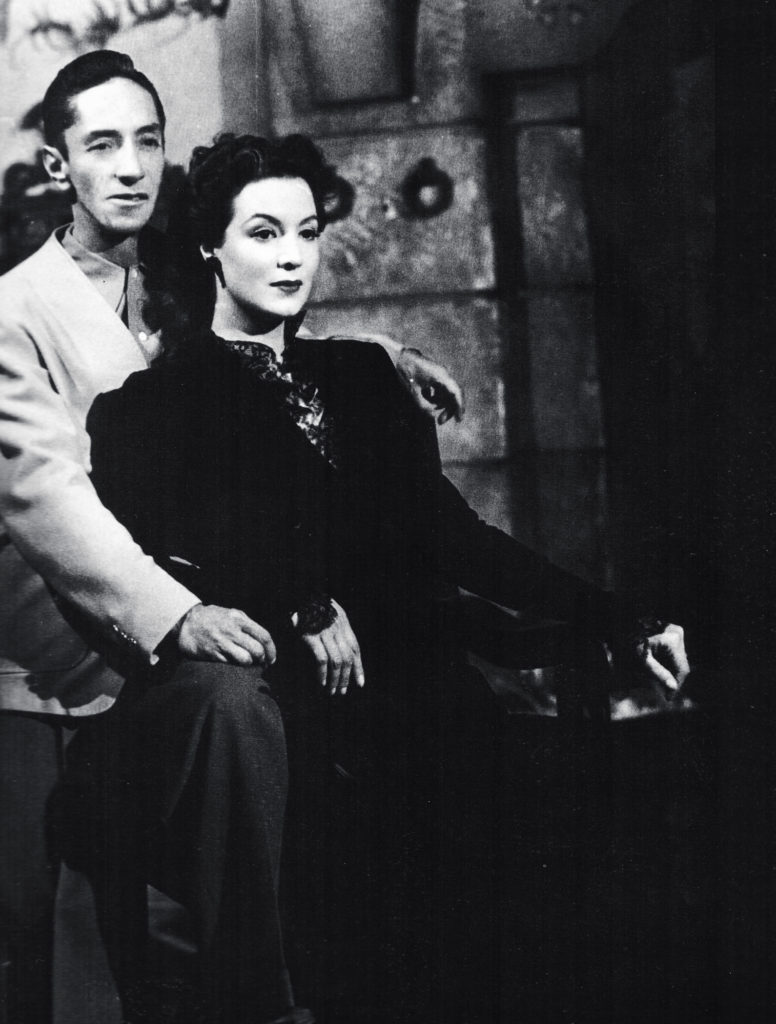
She stars in La monja alférez (The Lieutenant Nun), in which the public has the opportunity to see her dressed as a musketeer named Don Alonso, but also wearing religious habits in the role of Catalina de Erauso.
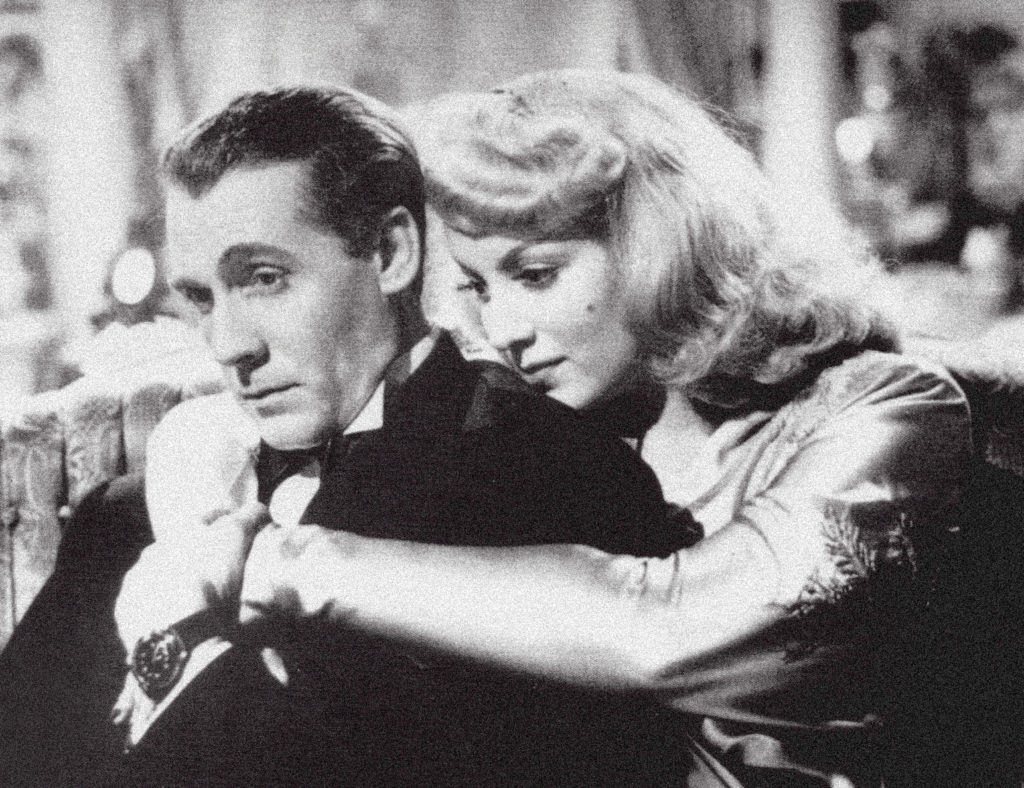
In an attempt to become an international star, she shoots Amok, a film based on the work of the Austrian writer Stefan Zweig. Once again with the Diva in a double role, this film has a twist: one of her characters is blonde –an unfortunate resource that would forever disturb the visual collective memory of the actress.
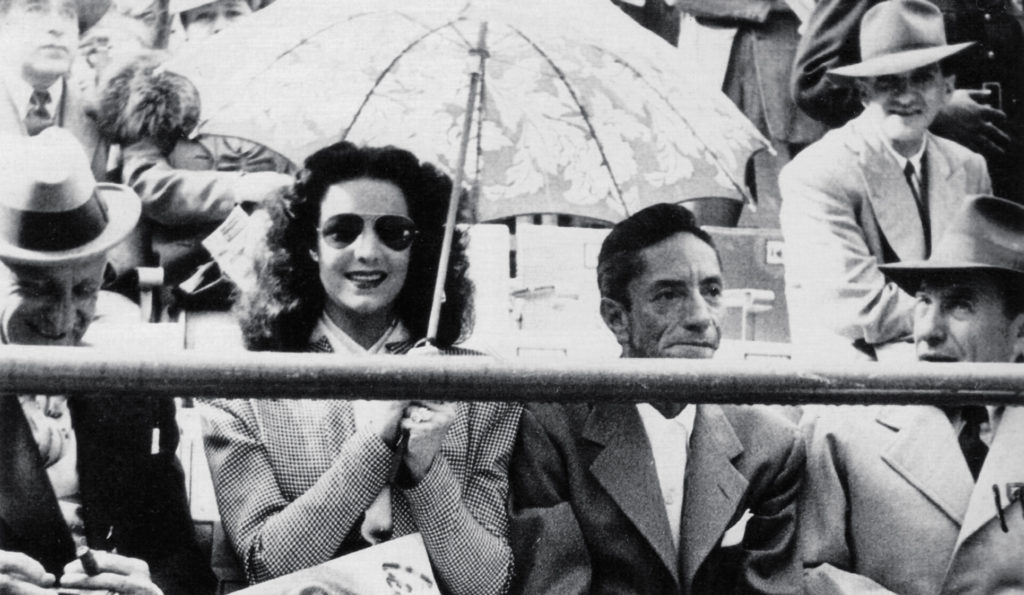
Cabarets and Spanish-style bullfighting shows are frequent stages where she is seen accompanied by Agustín Lara.
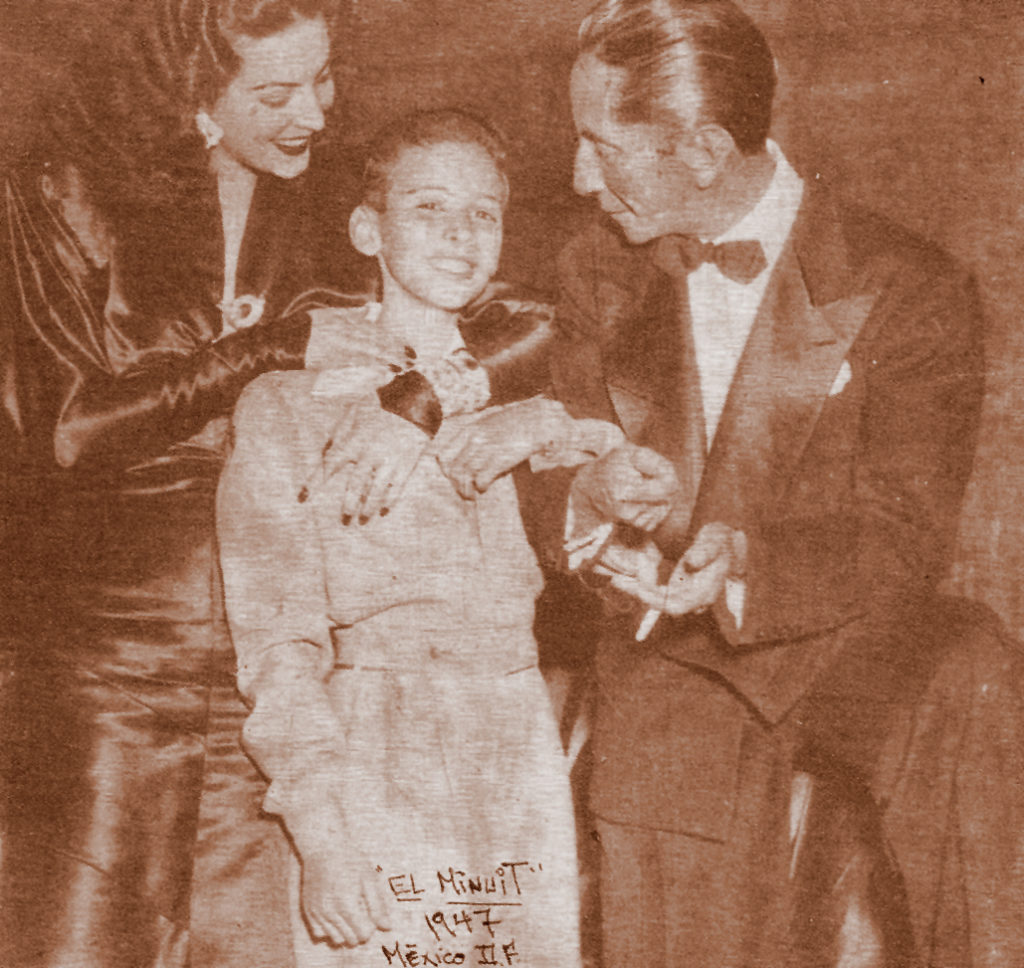
With Lara’s help, she recovers her son Quique (short for Enrique), through an alleged kidnapping.
She becomes a cult movie star. Film director Julio Bracho is determined to film a cultured movie. The screenplay of El monje blanco (The White Monk) is based on the verses of Eduardo Marquina and Javier Villaurrutia, thus requiring her greatest effort to learn by heart all dialogues and overcome her stuttering.
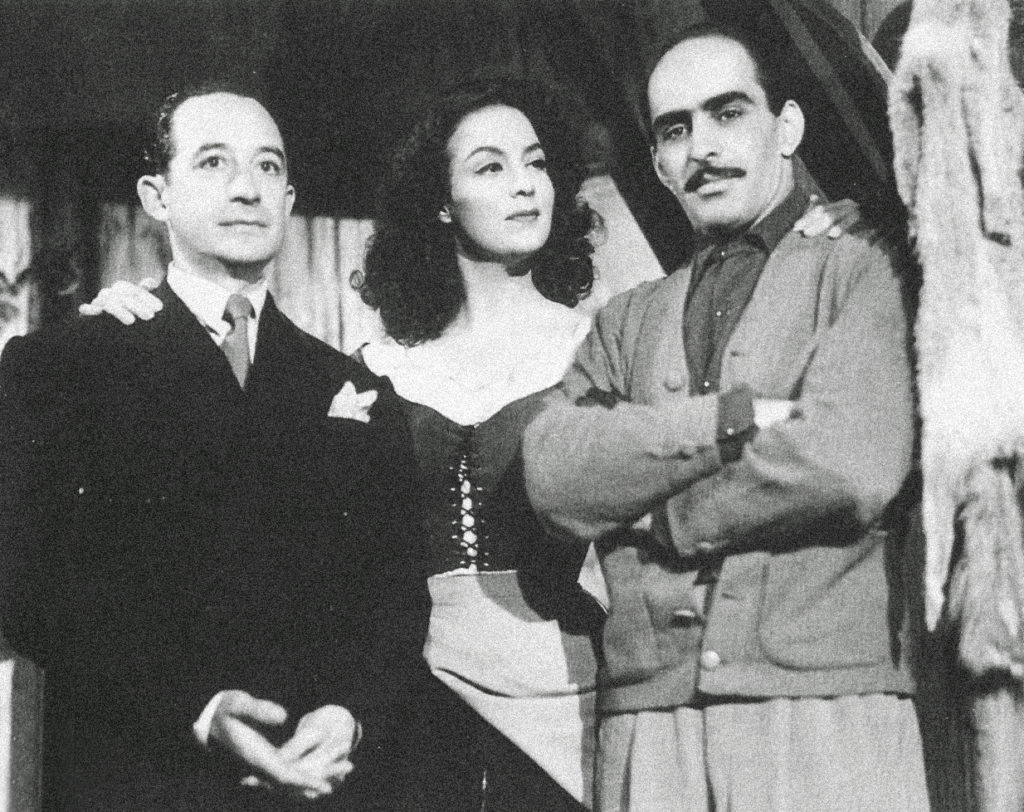
By the time Antonio Momplet films Vértigo (Dizziness), where she stars, she is a culminated movie star capable of directing her directors, establishing alliances with journalists and reaping praise from film critics.
Her success and fame allow her to position herself at the top of the payroll, way ahead of any other Mexican actor or actress, while nurturing an audience that worships her work.
It is worth no notice that, contrary to the media oblivion in which her contemporary actresses fall, the life of the Diva is the center of attention.
On December 24, she marries Agustín Lara at her home, in the neighborhood of Polanco.

During their honeymoon at the Papagayos Hotel in Acapulco, Lara gives her as a gift a song that would become her eternal hymn: María Bonita.
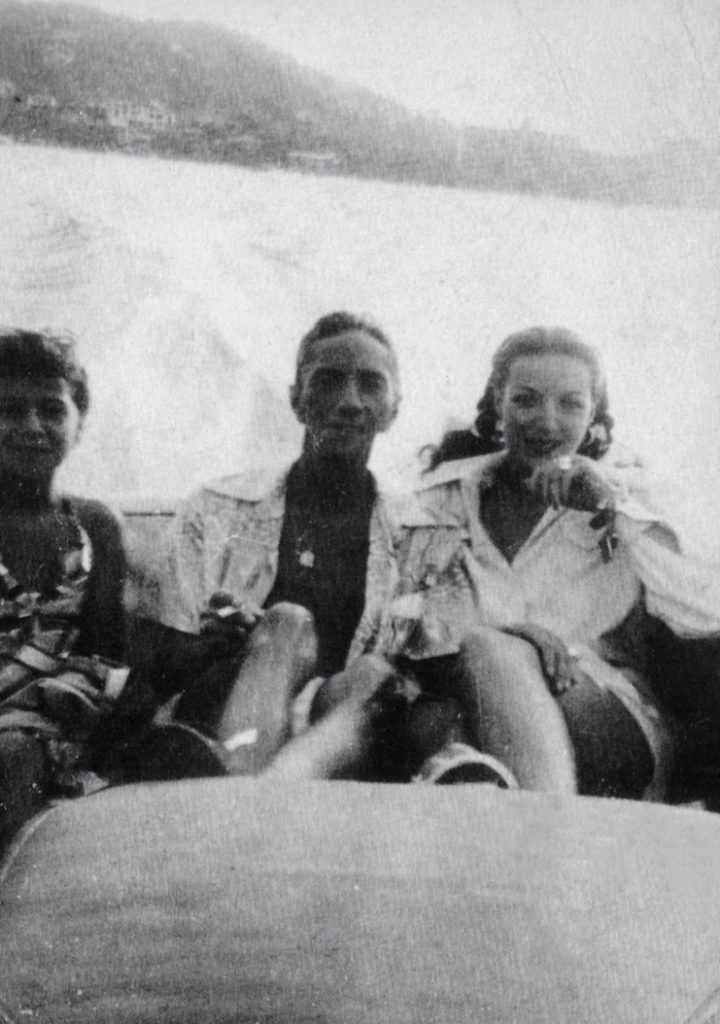
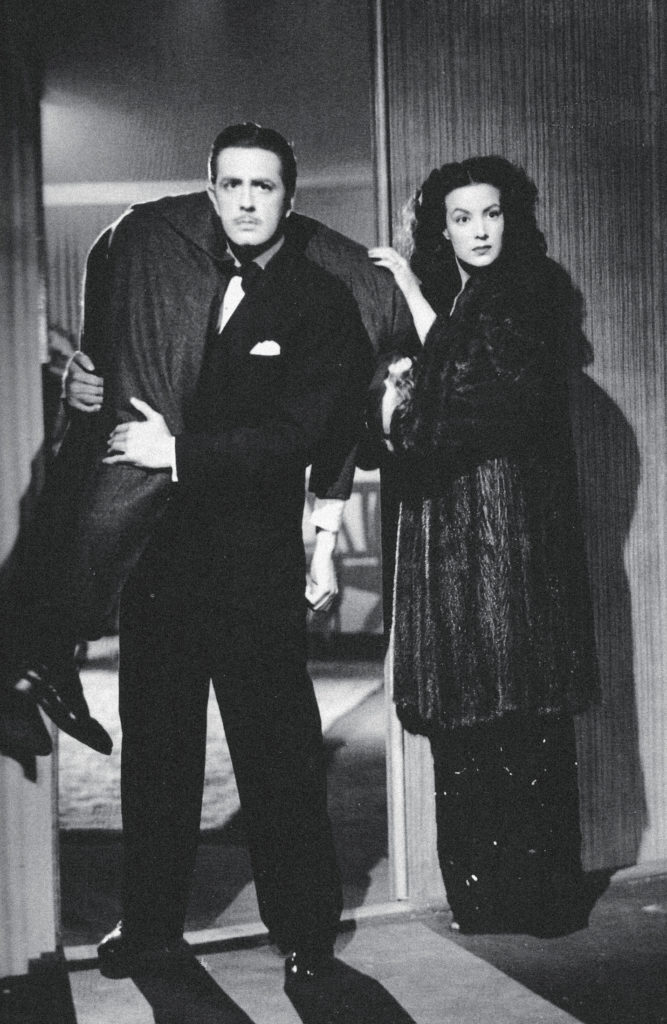
The character of Diana de Arellano, the leading role in La devoradora (The Devourer), is added to the list of her roles as a man-eater, thanks to which she capitalizes on success and consolidates the already emerging myth of being a dazzlingly perverse woman –a myth that will persist throughout all her life.
The public does not seem to perceive her performances as acting, but rather as a reflection of her own personality.
The difference between reality and fiction is getting smaller and smaller, to which is added a specialized critique in which a route is marked: La Doña becomes a man-eater without a soul. The Soulless Woman, the man-eater Doña Bárbara and The Devourer are all combined to consolidate the image of a heartless woman.

In the film La Mujer de todos (Everyone’s Woman), she performs with Ernesto Alonso, who has a short role as her suicide lover. Dressed in an iconic dress, the actress develops a sequence that would be recorded in the history of Mexican cinema by portraying the coldness and despotism of the main character.
ERNESTO: My father knows everything and I am lost. I do not know what to do!
MARÍA: Go home and ask for forgiveness.
ERNESTO: I don’t know how to ask for forgiveness.
MARÍA: Then learn how.
ERNESTO: What about our love? María, I can barely believe you are coming to this dinner party.
MARÍA: You must learn how to forget, too.
ERNESTO: Is that all you have to tell me?
MARÍA: What else could I tell you?
ERNESTO: A word that helps me live.
MARÍA: Forget me.
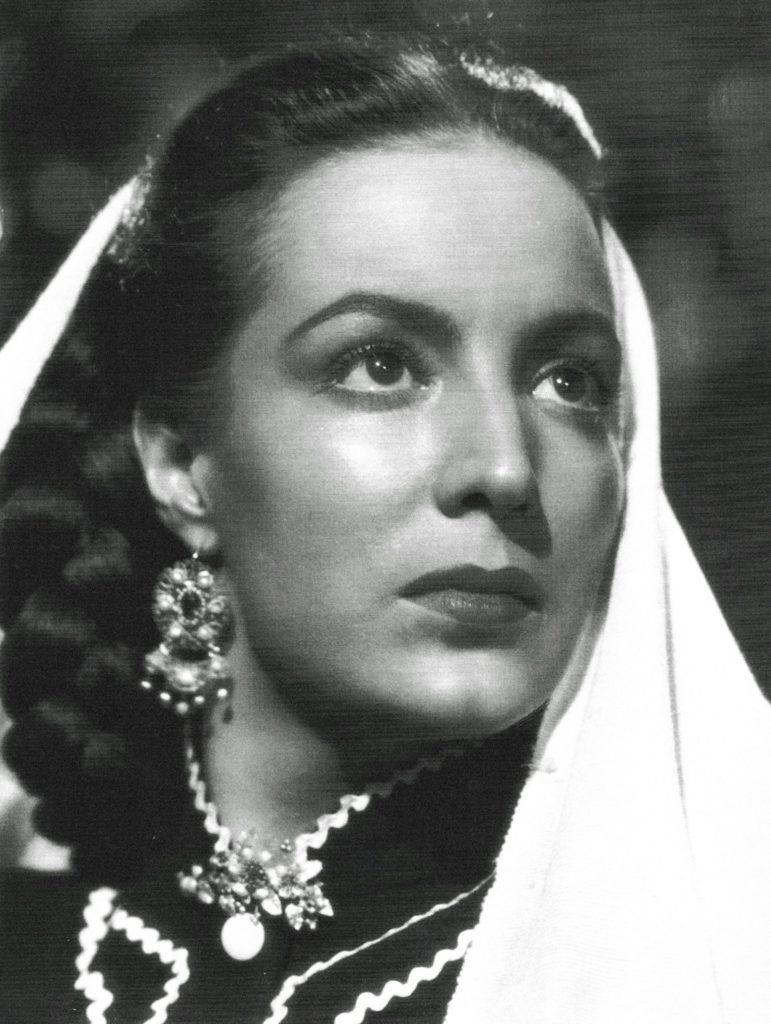
With Enamorada (Enamoured) she imprints a kind of poetic nationalist twist to her career, thanks to which she is recognized by the Mexican Academy of Film Arts and Sciences and earned her several international awards. This film is considered one of the most beautiful in Mexican cinema, thanks to Gabriel Figueroa’s photography, the freshness of the plot, and the María Félix and Pedro Armendáriz enduring portrayal of a passionate couple.
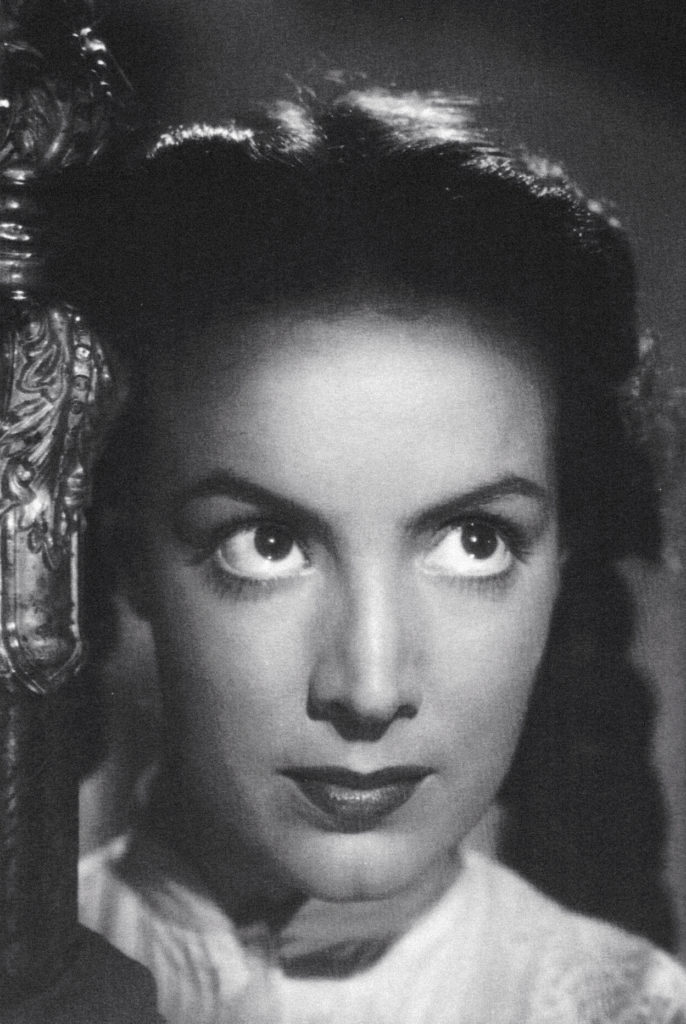
The screenwriter adapts the original screenplay to include a romantic serenade performed by Pedro Armendáriz singing La Malagueña. The beautiful shoot includes a long close up to her eyes and cuts to Pedro, and was one of the most beautiful gifts ever made to her, since it immortalized her beauty. The frame of the shoot that Figueroa chose was so charming and special, that many directors have tried to match it throughout history, although none have succeeded.
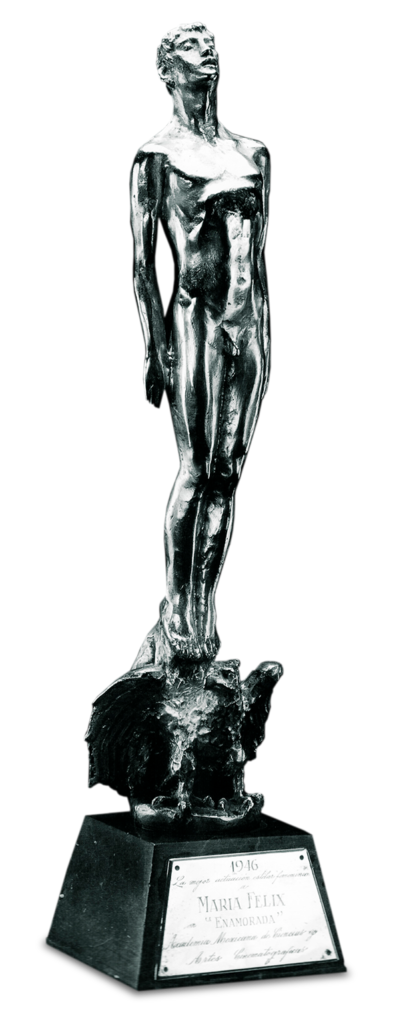
She wins her first Ariel for Best Actress for her stellar performance in the film feature. From now on, her career development would be accompanied by acclaimed people from the film world, such as Emilio El Indio Fernández.
She is now nicknamed María Bonita in addition to La Doña.

She meets politician and businessman Jorge Pasquel, who gives her expensive jewelry and with whom she starts a romantic relationship.
She establishes business relationships with the main European couture houses by importing her wardrobe via New York.
Her passion for ancient objects drives her to become an incipient connoisseur of antiques, a hobby that would become an obsession years later.
Gradually, her acting career gives her international recognition and the possibility of working with acclaimed directors such as Luis Buñuel, Luis Saslavsky and Jean Renoir, among others.
In Que Dios me perdone (May God Forgive Me), she returns to the artificial and international framework to which poetic nationalism subjects her as a consequence of World War II.
Five years after her debut, her interpretative plurality oscillates back and forth between typical Mexican roles and more international ones, going from La diosa arrodillada (The Kneeling Goddess) to Río Escondido (Hidden River); from May God Forgive Me to Maclovia; and from Los héroes están fatigados (Heroes and Sinners) to La Escondida (The Hidden One). The selection of all these movies is driven by the signing of exclusivity agreement and other commitments signed beforehand.
She divorces Agustín Lara. She uses her own financial resources to buy a house in Aristóteles Street, in the neighborhood of Polanco.
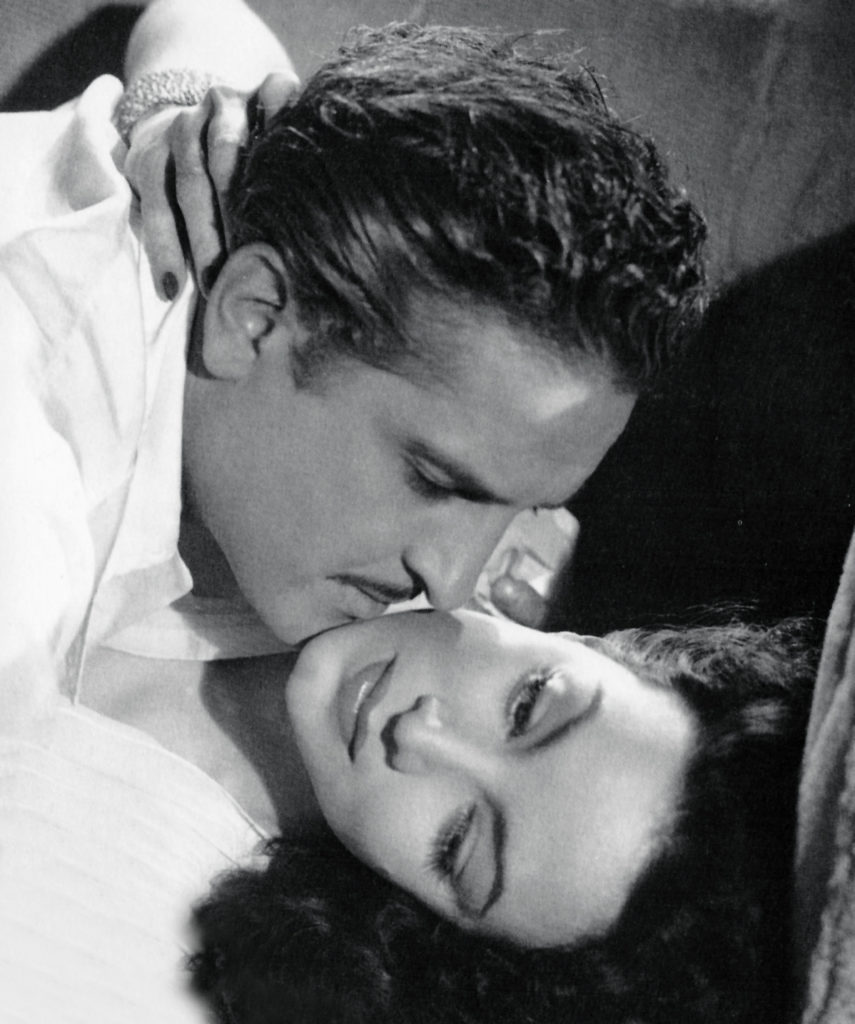
She decides to send her son to study in military academies in Canada and the United States.
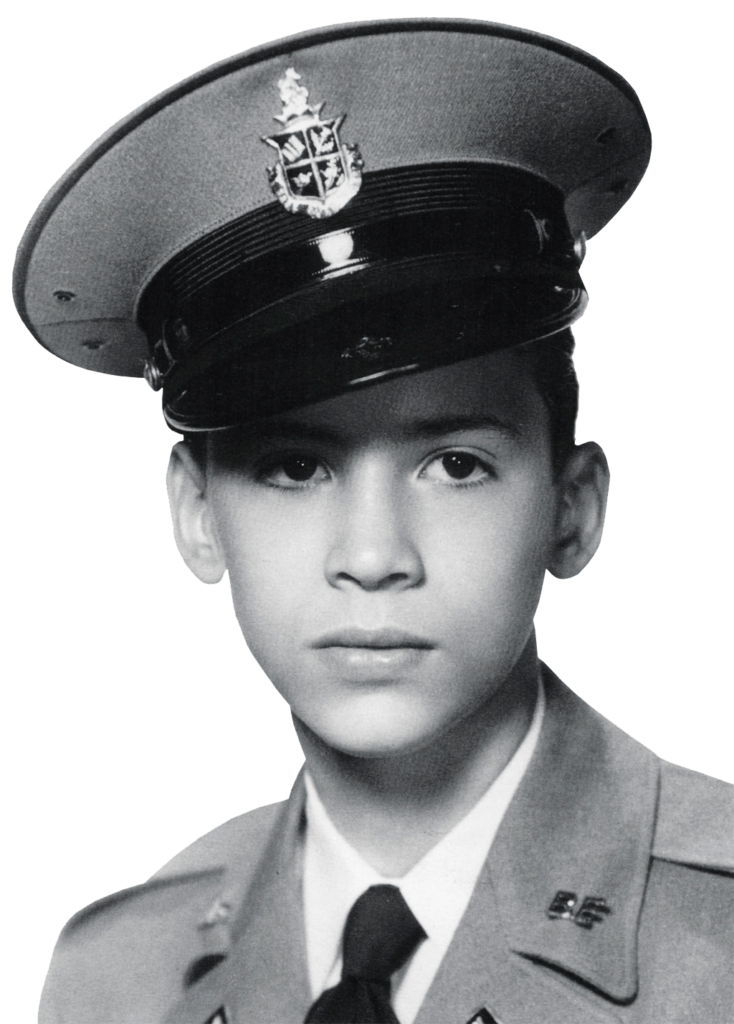
She starts a professional and friendly relationship with the Spanish producer Cesáreo González.


The film feature Río Escondido (Hidden River) earns her a second Ariel for Best Actress for her portrayal of Rosaura Salazar.
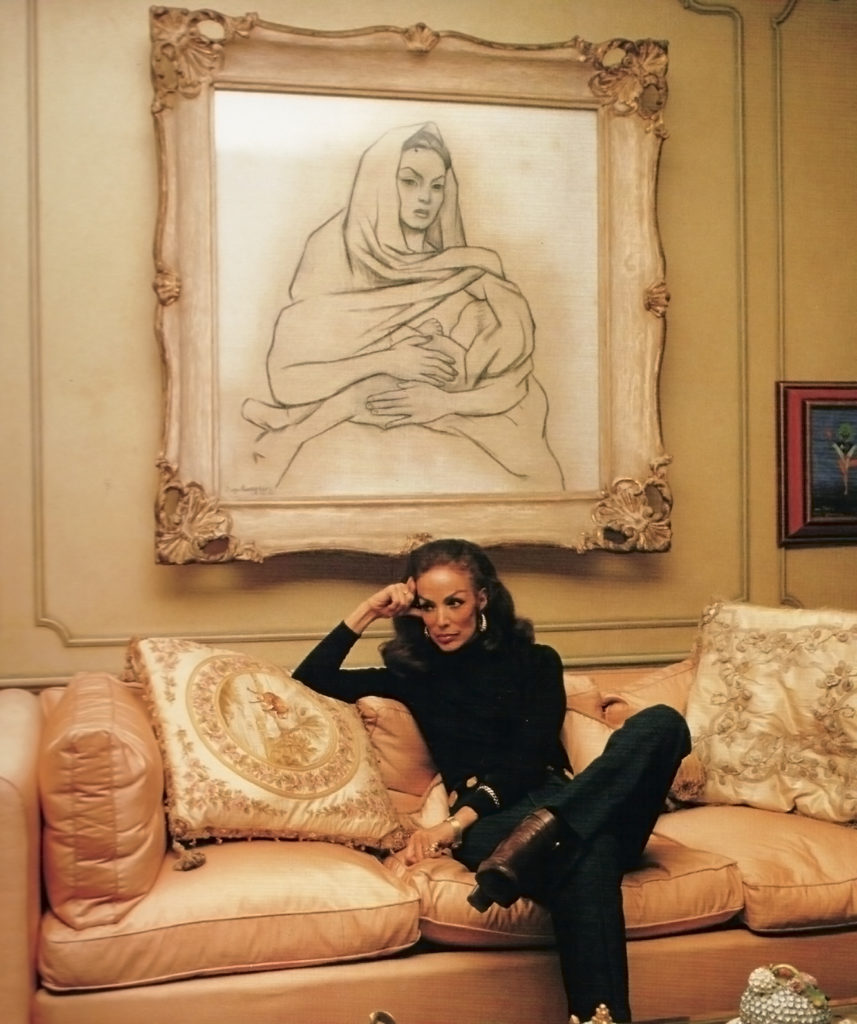
She meets Diego Rivera and poses for him with a child in her arms for the portrait entitled Madre mexicana (Mexican Mother). The Mexican painter gives her the charcoal sketch he makes for the portrait, which she would keep throughout her life, along with a close friendship with him.

Maclovia obtains the international success it lacks in Mexico. During filming on Lake Janitzio she is indulged by Jorge Pasquel from his home in Mexico City: he sends private planes with ice to maintain her cool while she is on the set.
Fuelled by jealousy, Agustín Lara draws a gun and tries to shoot her, an event that leads to the irreversible end of their relationship.

The feature film Doña Diabla (The Devil Is a Woman) shows the Diva in yet another man-eater role: an unscrupulous Angela whose rising scale of evilness is proportional to her moral collapse.

After fulfilling her work commitments in Mexico, she travels to Europe in search of an international career. Her first opportunity comes with Mare Nostrum (Our Sea), a film based on the homonymous novel by the Spanish writer Vicente Blasco Ibáñez.

She is consolidated as an international star and stars hobnobbing with the aristocracy of artistic and intellectual talent in Spain, France and Italy.

The Madrid press ties her sentimentally with the bullfighter Luis Miguel Dominguín.
She arrives in Spain with a whole entourage: a hairdresser, a makeup artist, a personal assistant, a seamstress and a dressmaker. Later on, the screenwriter Luis G. Basurto joins her entourage, and with that it begins a memorable come and go of luggage.
She moves into the Ritz Hotel in Madrid, but later on she moves to the Palace Hotel.
Agustín Lara writes for her the lyrics of the chotis Madrid, which are nothing but a love letter from afar.
Her success as femme fatale on the Mexican screen continues in the old continent thanks to the film feature Una mujer cualquiera (Just Any Woman).
The public that enthrones her succumbs to the tradition dictated by decency and, in a cathartic phenomenon, gets trapped in the double moral standards of hating and adore her.
In Spain, she imposes changes in the scripts of the films she stars so as to give more brightness to her roles. To achieve this, she counts with the unconditional support of her producer, admirer and friend Cesáreo González, as well with the boldness of her faithful costume designer Armando Valdés Peza, who tailors stunning garments and hats for the actress.
While the Spanish press welcomes her with care and dedication, the Mexican press makes her a favorite target for critics. Her professional work is constantly vilified and slandered; tabloids qualify her as an assassin, opportunist and bad woman who brings to life the sinister nature of her characters.
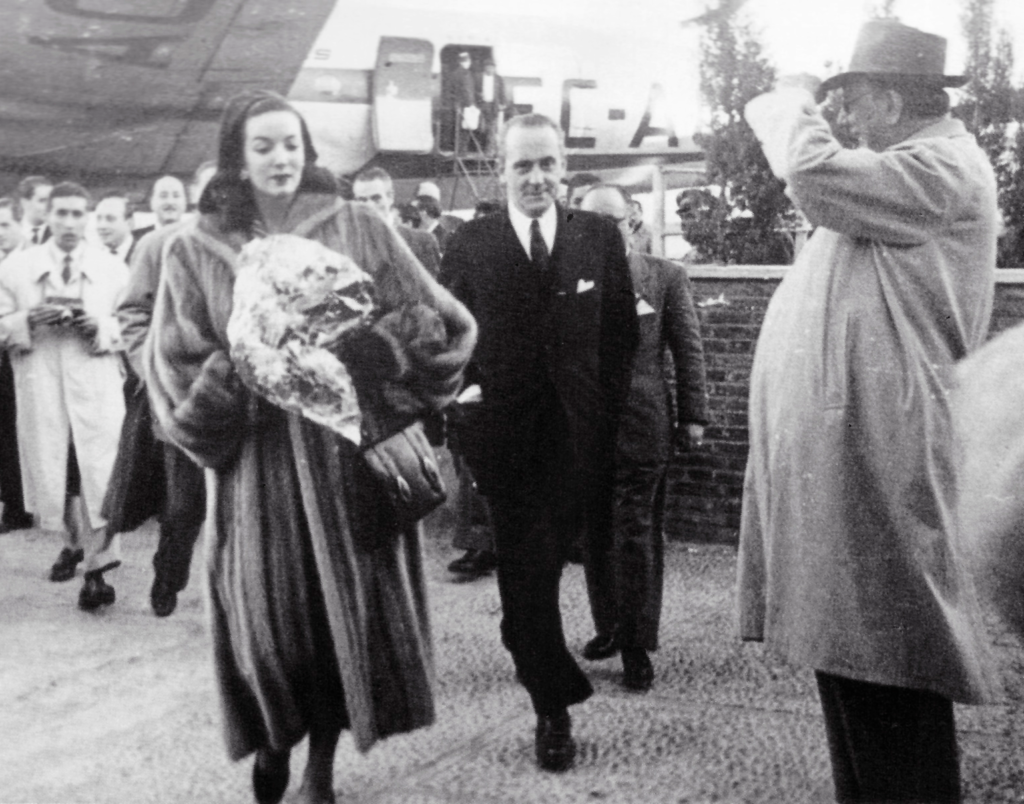
Since she is part of the intellectual elite, her detractors find her ex officio defenders in the powerful voices of Diego Rivera, Efraín Huerta and Renato Leduc.

She is involved in a major scandal following the death of Rebeca Uribe, her personal assistant.
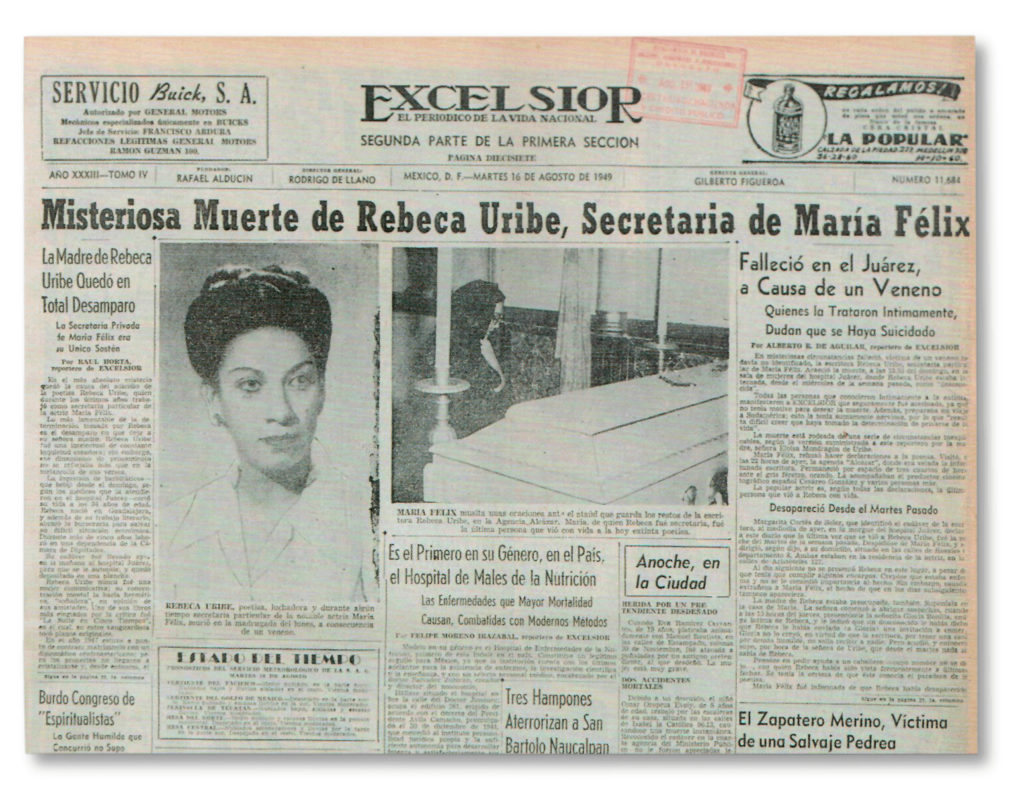
She is awarded her second Ariel for Best Actress for her leading role in Hidden River.

A portrait of her painted by Diego Rivera that suggests she posed nude, causes big excitement.
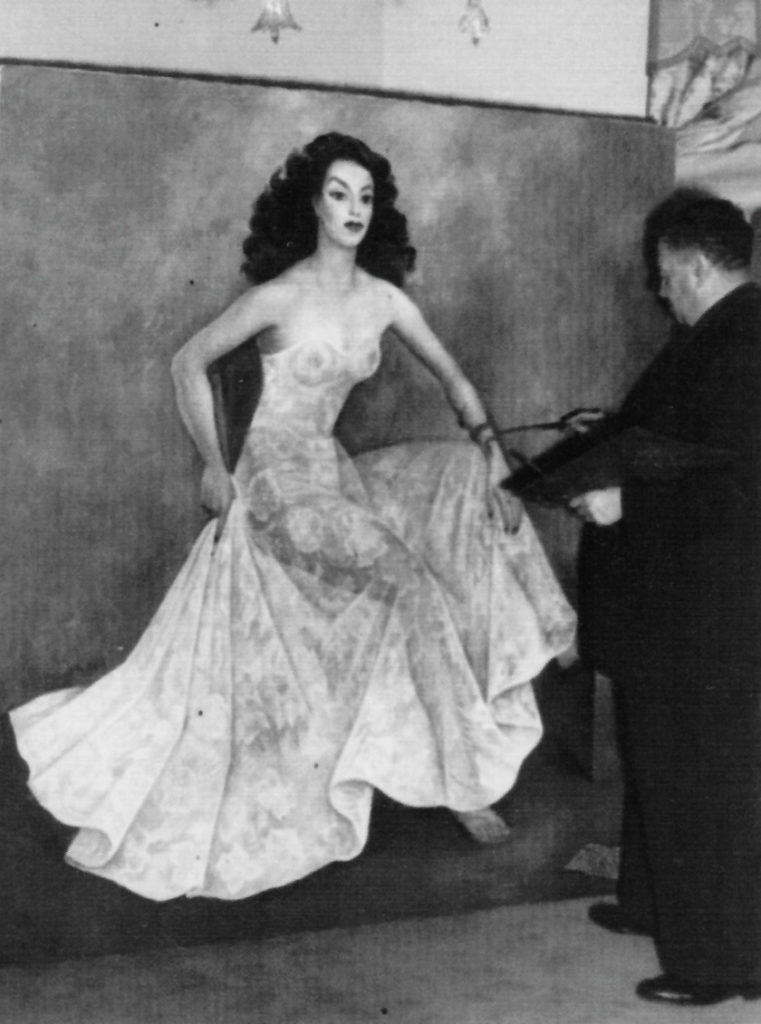
On October 26, she visits Cuba for the first time, where she is handed the Keys of the City of Havana and is named Guest of Honor. People crowds surround her everywhere she goes.

Her image is immortalized in a sculpture under the name of La noche del sábado (Saturday Night). She finds in the European chisels the pretext for a plot full of aesthetic splendor, lavishness, aristocracy and obeisance. Myth and reality merge and Imperia’s voice seemed to be her own:
“To do something big in life we have to destroy reality; set aside the ghosts that block our way. Follow, as the only reality, the path of our dreams towards the ideal, where souls fly on their Saturday night, some towards evil, to lose themselves in it as spirits of darkness; others towards good, to live eternally as spirits of light and love.”
She meets King Farouk of Egypt, who courts her and gives her a tiara that once belonged to Nefertiti.
She wins a third Ariel for her role in The Devil Is a Woman.
In La corona negra (The Black Crown), acting alongside Rossano Brazzi and Vittorio Gassman, she plays the role of a character immersed into a detective plot with tones of a psychological thriller, product of the brilliant mind of the French poet Jean Cocteau.
While filming in Morocco, Jean Cocteau coins two phrases that would inspire and accompany her throughout all her life: María Félix is a crazy woman who believes herself to be María Félix, and María is so beautiful that it hurts. It is said that they ate human flesh at a banquet offered by the Sheikh of Chefchaouen.
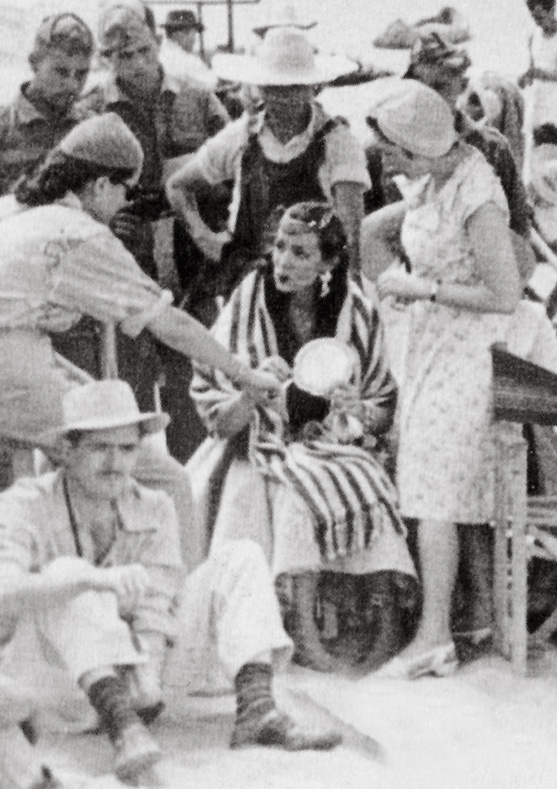
Her success in Spain takes her to the Italian peninsula, where she acts under the direction of Carmine Gallone at the Cinecittà studios in Rome, as the protagonist of the film that became back then the most expensive one of Italian cinema: Messalina. She is again faced with a role capable of nurturing her black legend: that of the greatest depraved libertine in history.
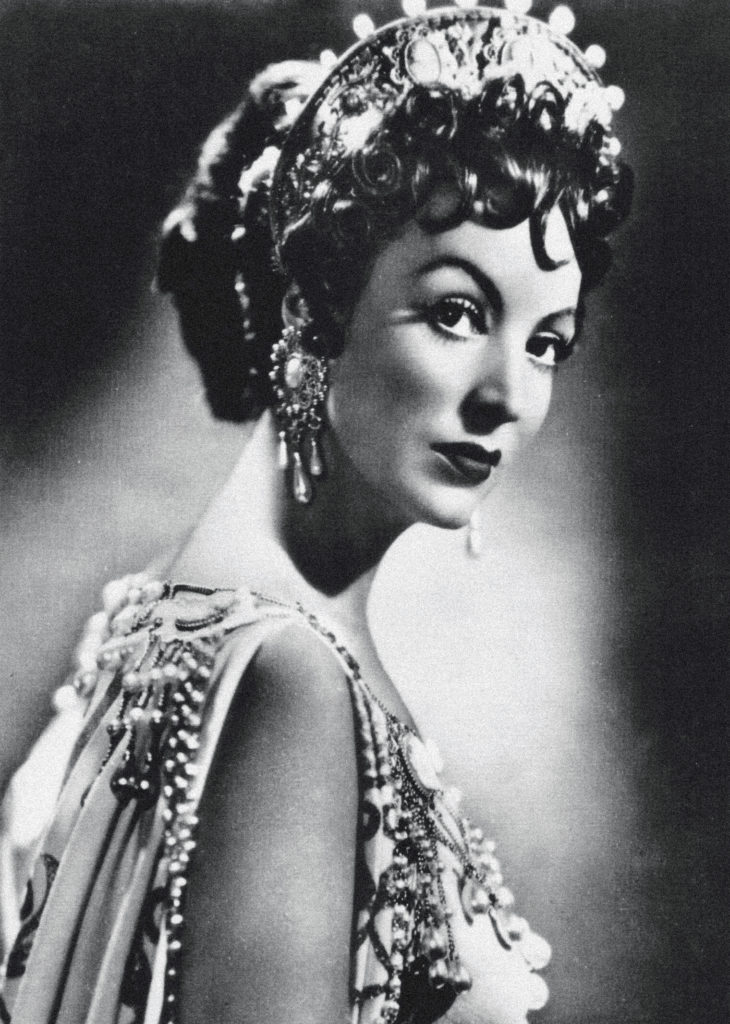
She moves to Italy for work purposes and combines her professional life with pleasure trips to Mexico. During her stay in Italy she learns the news of her father’s death, but she cannot attend the funeral due to her work schedule.
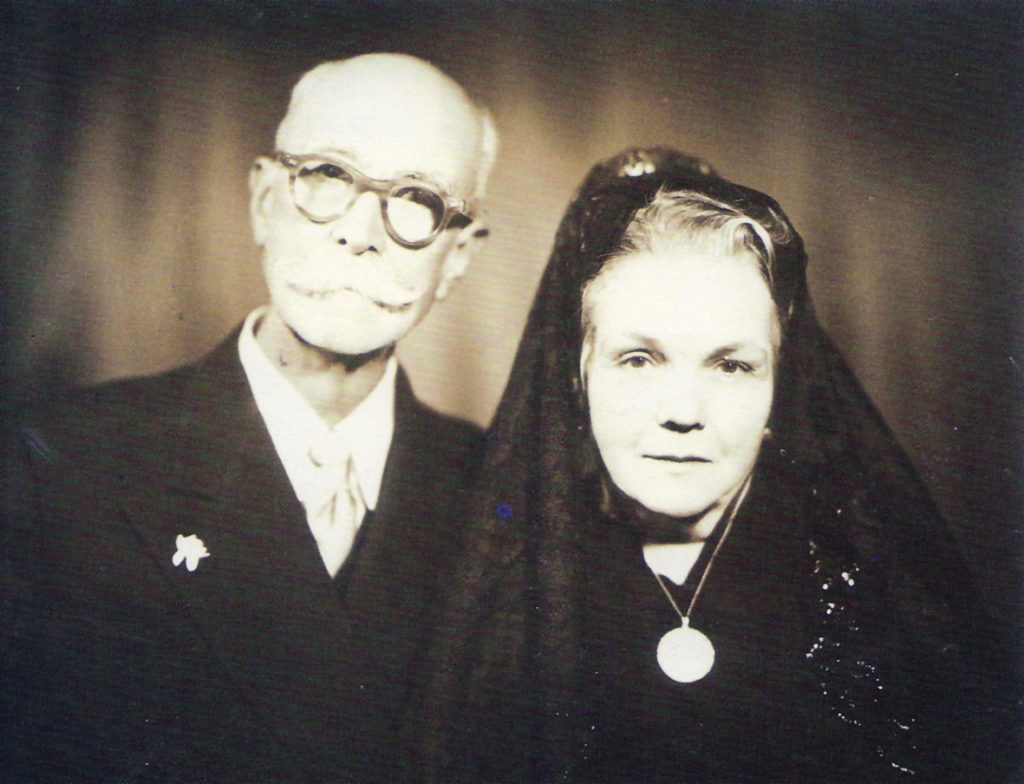
Italian newspaper notes allow to see her embodying her role as Mexican actress as the main character in Mario Sequi’s Hechizo trágico (Tragic Spell), alongside Rossano Brazzi. She convinces the director to include a rather strange scene only for her to be seen in a luxurious and exclusive tailor-made Christian Dior gown.
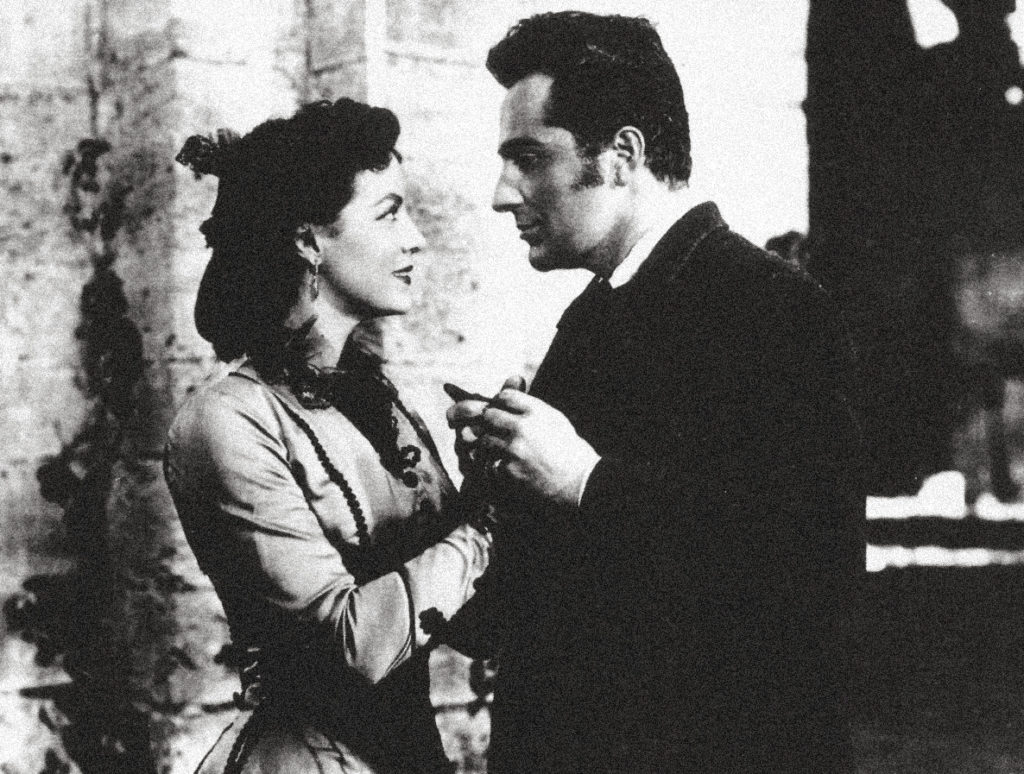
She holds a private meeting with Pope Pius XII.
She becomes an ambassador of Mexican culture by integrating textile and silver pieces made by Mexican artisans into her wardrobe, which appear in the films she stars in and in her European public appearances
Mexican cinema is immersed in a period of crisis attributable to her absence from 1948 to 1952.

Between films, she travels through Europe with her son Quique.
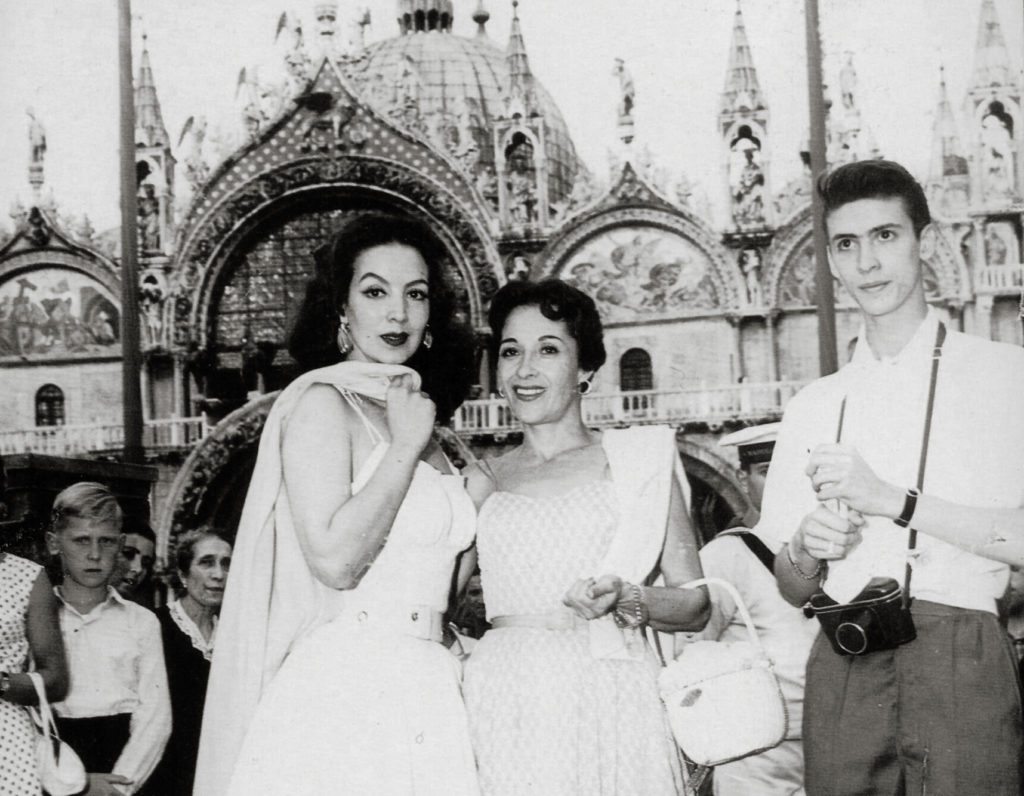
Far from the vulgar Mexican tabloids, she lives great experiences alongside leading actors, famous directors and superb intellectuals.
With the money she earns in Europe, she buys the old Catipoato estate in the Tlalpan neighborhood, in Mexico City. Diego Rivera gives her rattlesnakes for her fruit gardens.

She leaves Italy in the ocean liner Giulio Cesare and goes to Argentina after a brief stopover in Brazil.
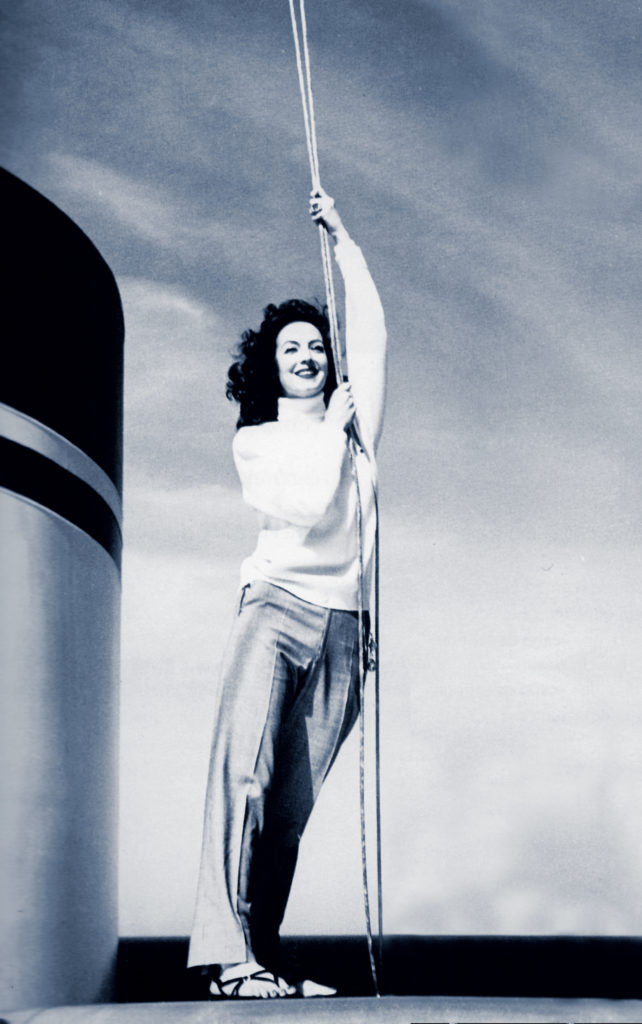
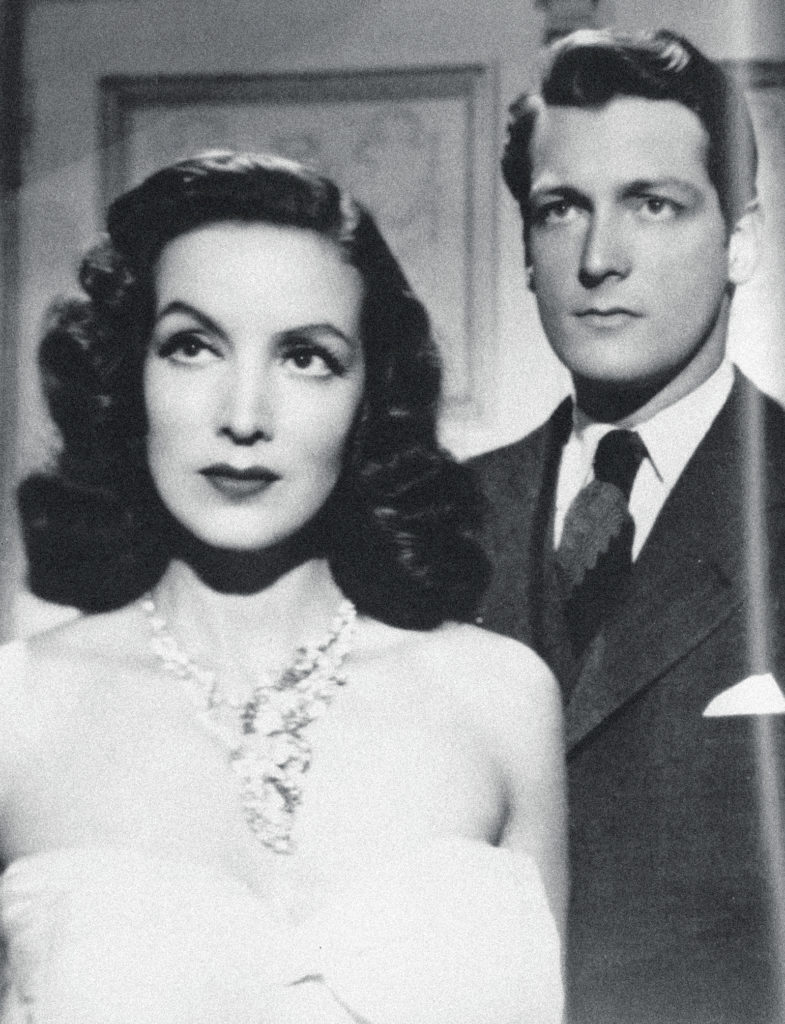
It is time for South America to pay tribute to her beauty. She now lives in Buenos Aires, and it is in this city where she stars in her only contribution to Argentinian cinema, under the direction of Luis César Amadori.
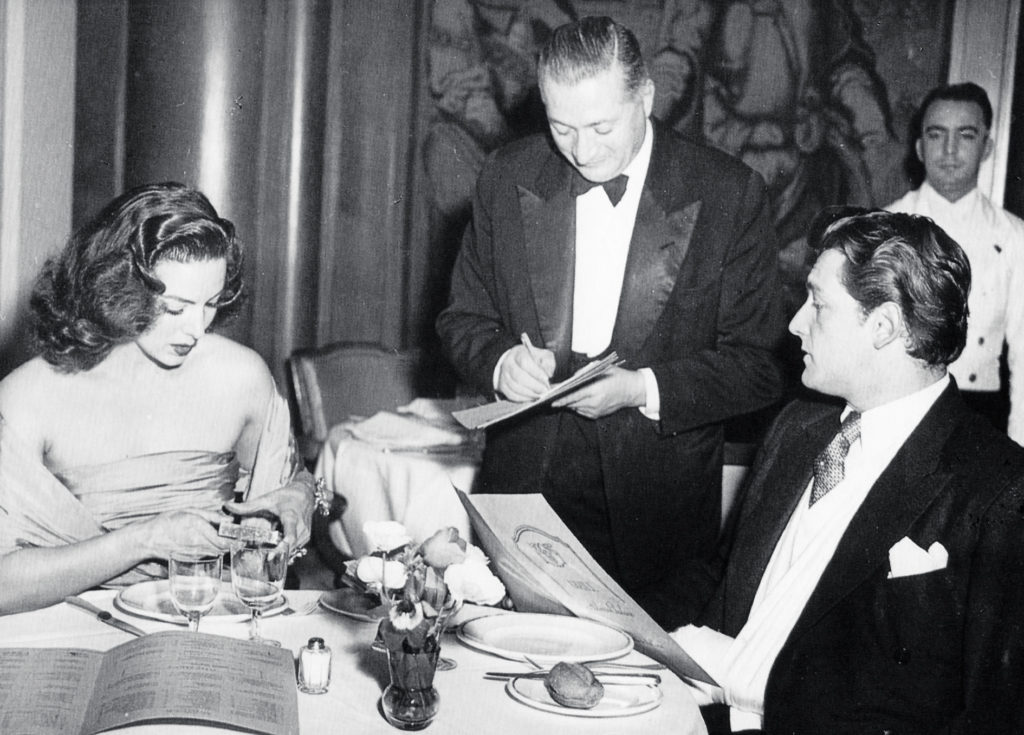
La pasión desnuda (Naked Passion) becomes a blockbuster, and leads her to announce her engagement with her fiancé, actor Carlos Thompson, only to break it off a few days before the wedding.
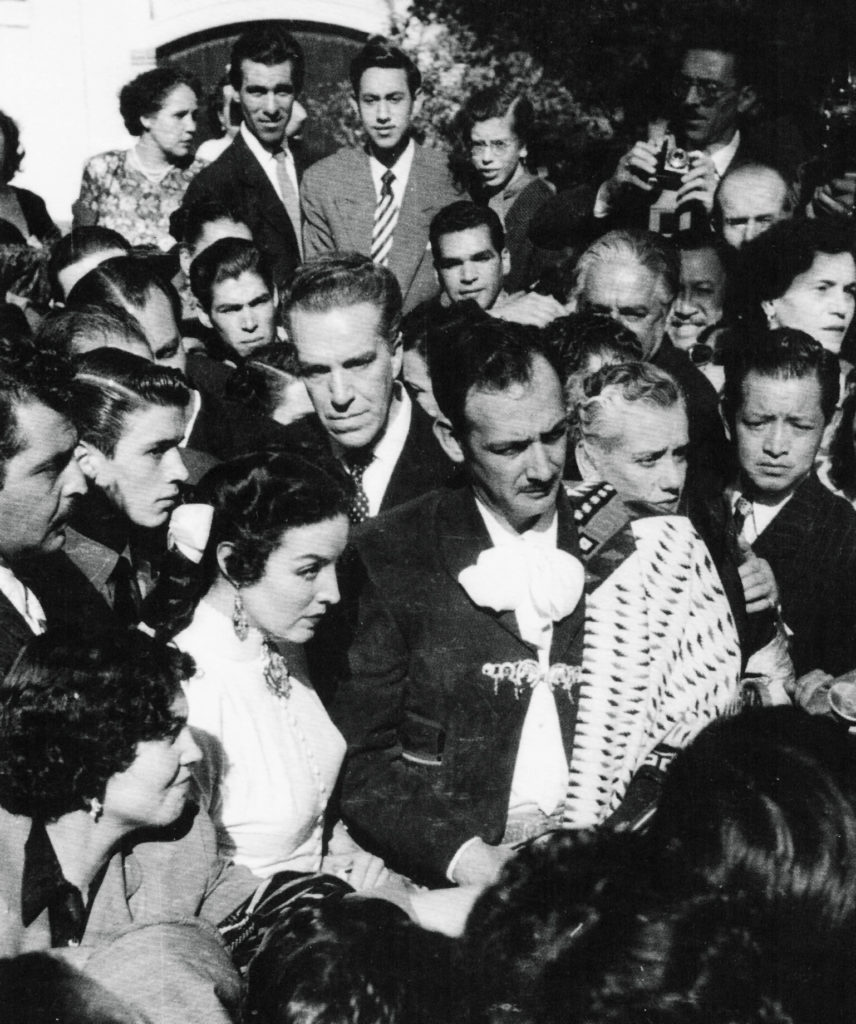
On October18, she marries Jorge Negrete at her Catipoato state in Mexico City. The marriage ceremony is instantly called The Wedding of the Century, and broadcasted by radio throughout Latin America.
With Camelia, she returns to Mexico where she has not worked since 1949. She gets paid four hundred thousand pesos. The producer Cesáreo González justifies the scandalous figure by mentioning that her presence guarantees a profitable business.
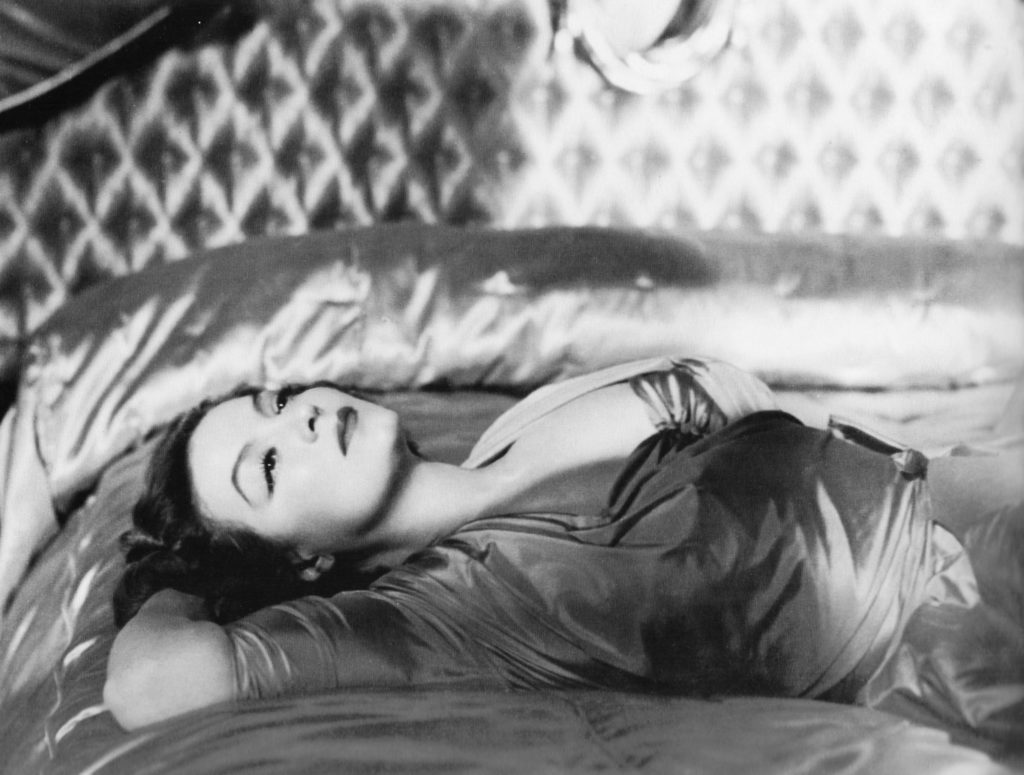
The feature film El Rapto (The Rapture), is filmed in the Fortress House owned by El Indio Fernández, in the Coyoacán neighborhood. The film premiered in April 1954, after the death of Jorge Negrete, leading actor in the movie.
She lives enjoying the splendor of her manor estate in the neighborhood of Tlalpan. She enjoys the fame and power that her successes in Europe and South America have given her.

Negrete, at the head of the National Association of Actors, is constantly touring abroad. Surprisingly, on December 5 he dies in Los Angeles, California.
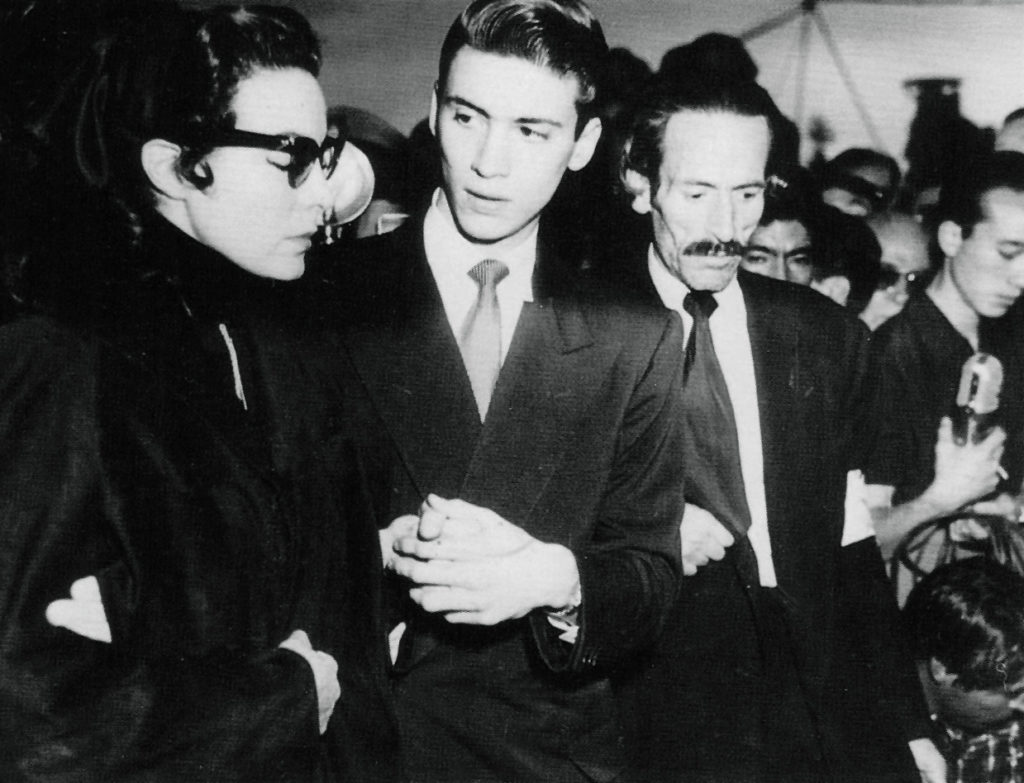
A conflict is unleashed regarding the emerald necklace, the late actor’s wedding gift. The legal arguments will last for eight years until finally Alex Berger, by then her husband, pays the necklace to the Negrete family.
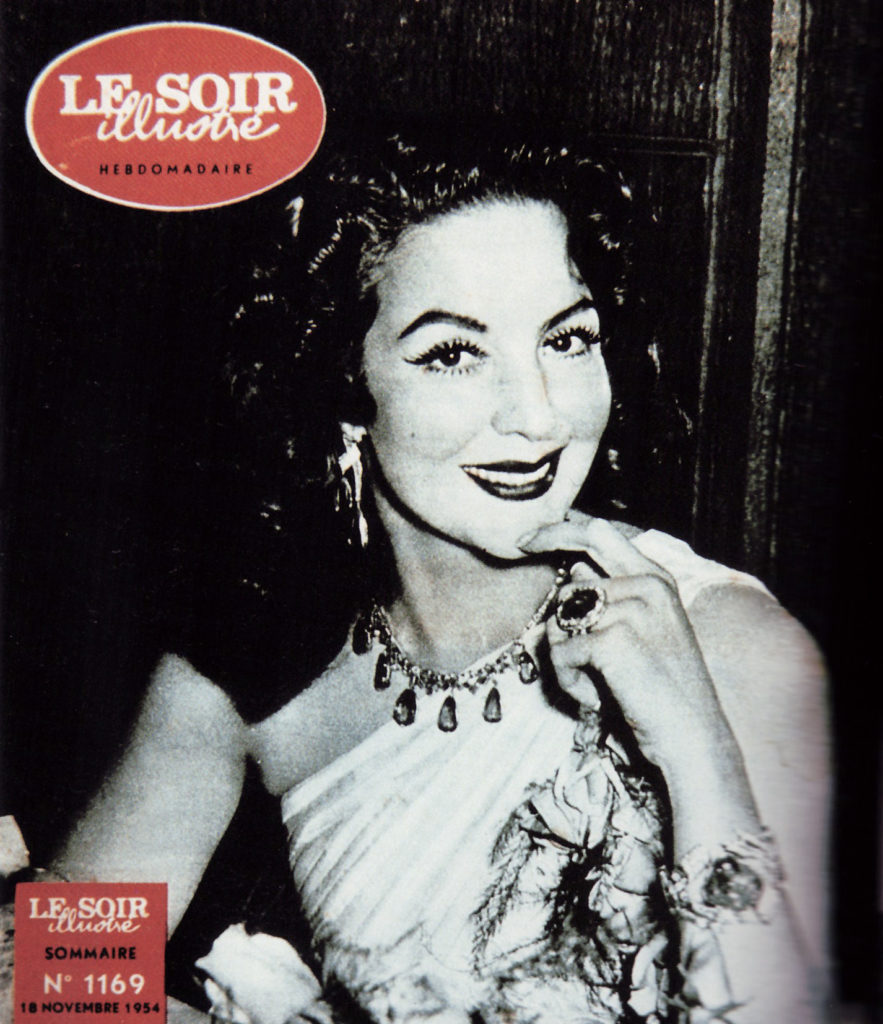

She goes to France and plays the leading role in the biographical movie about the Spanish vedette Carolina Otero. The plot of La bella Otero (The Beautiful Otero) takes place in beautiful scenarios in which the displays of costumes, jewelry and decorations make her internationally recognized figure shine. She can be seen dancing, as well as singing and acting in French.
The celluloid film captures a complete artist with a wide range of acting and technical resources.
In Mexico, she is denied the recognition she deserves and her name is permanently linked to the scandal.

During her nights in Paris, she can be seen frequently with Jean Genet, Max Ernst, Balthus, Salvador Dalí, Jean-Paul Sartre and Picasso.

In French Cancan, the sea of conflict between two dancers surpasses fiction and causes her to have to physically defend herself against a blow she receives from Françoise Arnoul during filming.
Despite the censorship, she begins to show more of her sheltered anatomy in cinematic sequences of exotic dances in international films.
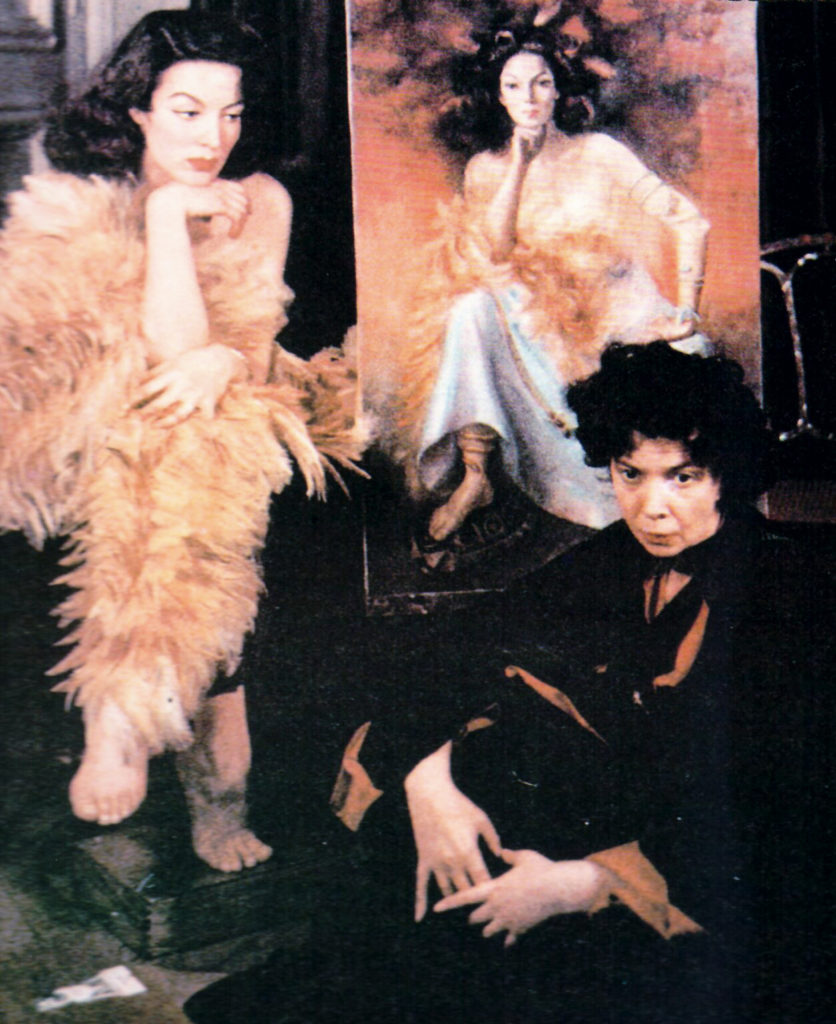
The French intellectual openness and avant-garde movement embrace her steps, while the pictorial artistic world succumbs to her beauty. Leonor Fini paints her first portrait of La Doña.
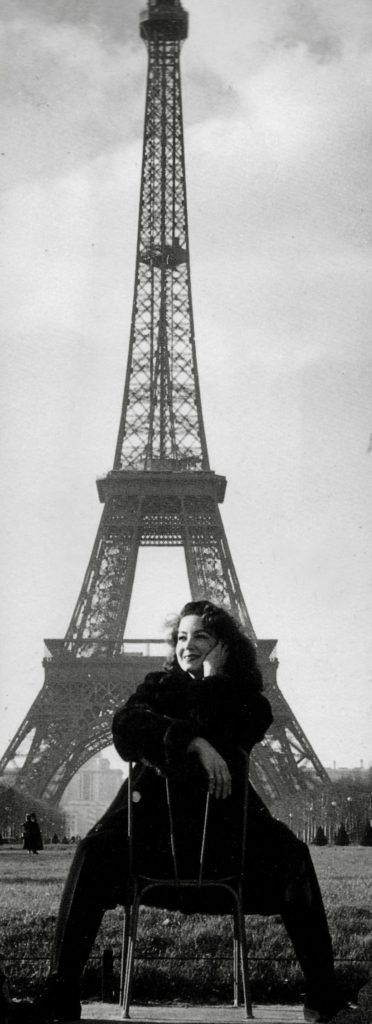
The romance she establishes with the City of Light would lead her, a couple of years later, to adopt France as a second homeland, a country where she was always recognized and valued.
She starts a romantic relationship with Jean Cau, a disciple of Sartre.
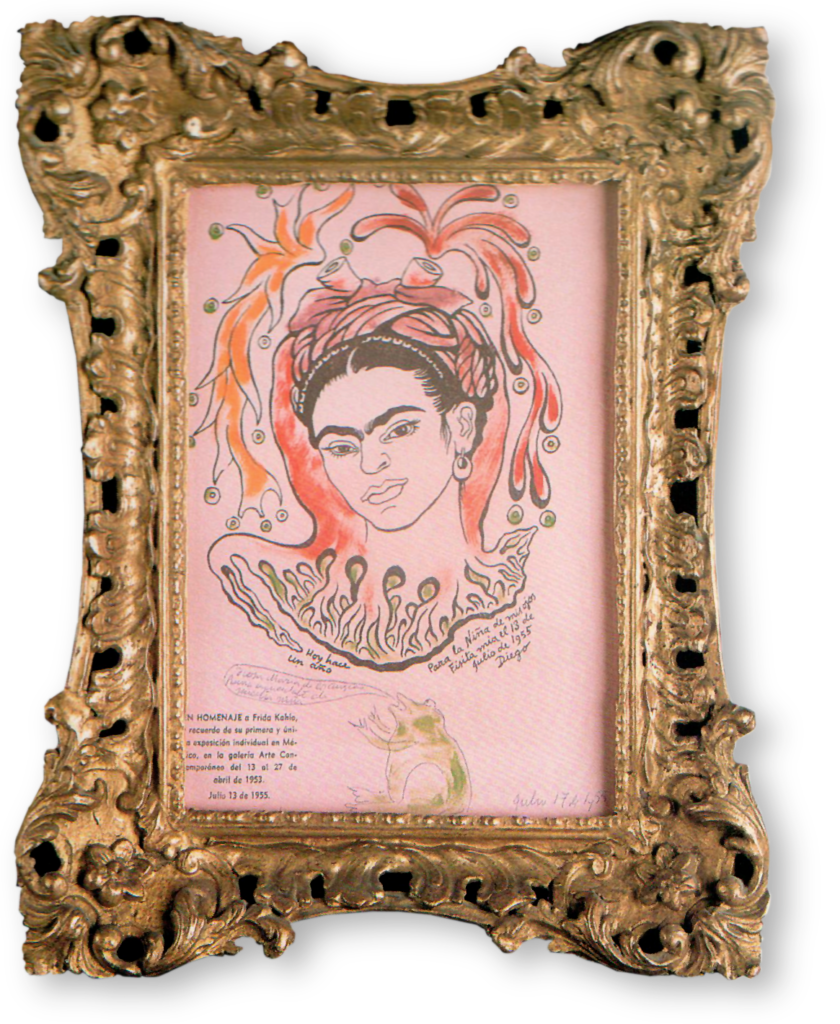
Her dear friend, the painter Frida Kahlo, dies.
In Los héroes están fatigados (Heroes and Sinners), her beauty stands out in a scene where her back appears partially naked, in addition to a few more erotic sequences. Her highly developed aesthetic sense drives her to include in the wardrobe of the main character Manuella several pieces manufactured by Mexican goldsmiths: bracelets, necklaces, rings and hoop and dangling earrings that would be immortalized along with her image.
During a violent scene in which Yves Montand slaps her, one of her earrings snaps into a Yves ring and tears her earlobe apart.

She is interviewed by Enrique Santiesteban for Cuban Television.
Professionally, she dominates the international scene. In June, she visits Cuba for the second time, performing in theaters, cabarets and on television.
She asks the president of Cuba, Prío Socarrás, the acquittal of a man sentenced to death. The president grants her the favor.
She returns to Mexico with vast experience and a noticeable European imprint on her behavior, thinking and dressing.
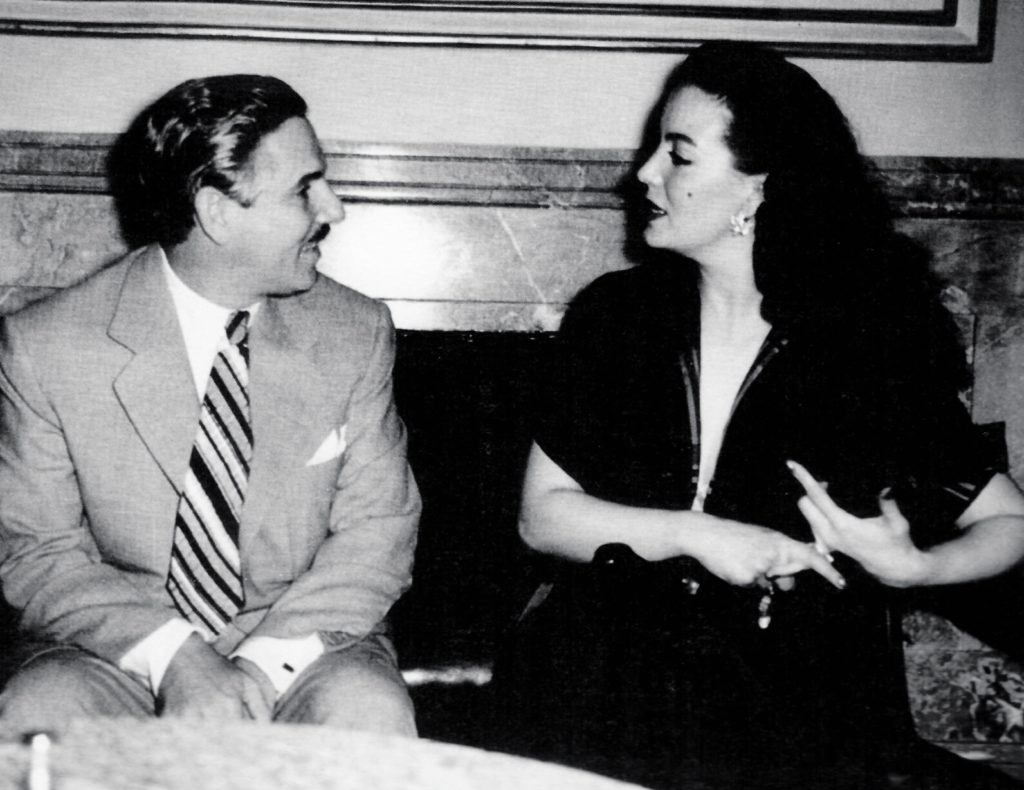
By the time she shoots La Escondida (The Hidden One), she has become the most dreamed sex symbol of both women and men.
On May 10, her eternal fan Jorge Pasquel dies in a plane crash.
The Mexican press ties her sentimentally with Diego Rivera.
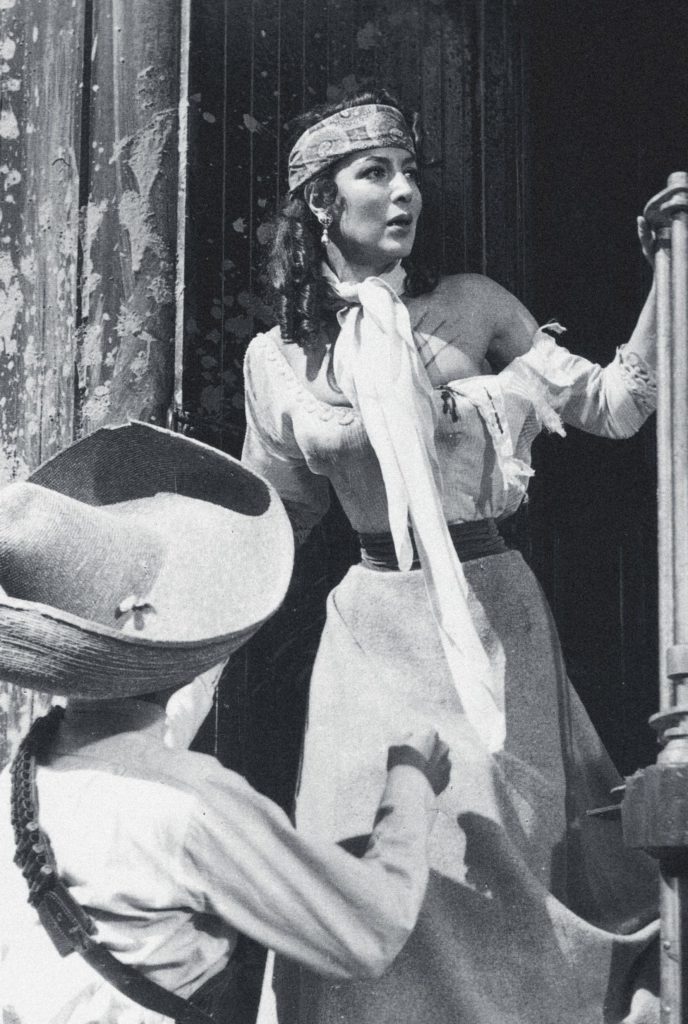
She plays a small part in Canasta de cuentos mexicanos (Collection of Mexican Stories). The film is a success because it fulfills the masculine fantasy of seeing her dominated by a man. But these sexist concessions on the big screen do not seem to matter to La Doña, as long as she can continue doing what she pleases in her private life.
She takes advantage of the time she spends both in Mexico and in Europe to travel for pleasure, but without abandoning her career: she is still the highest-paid star of Mexican cinema.
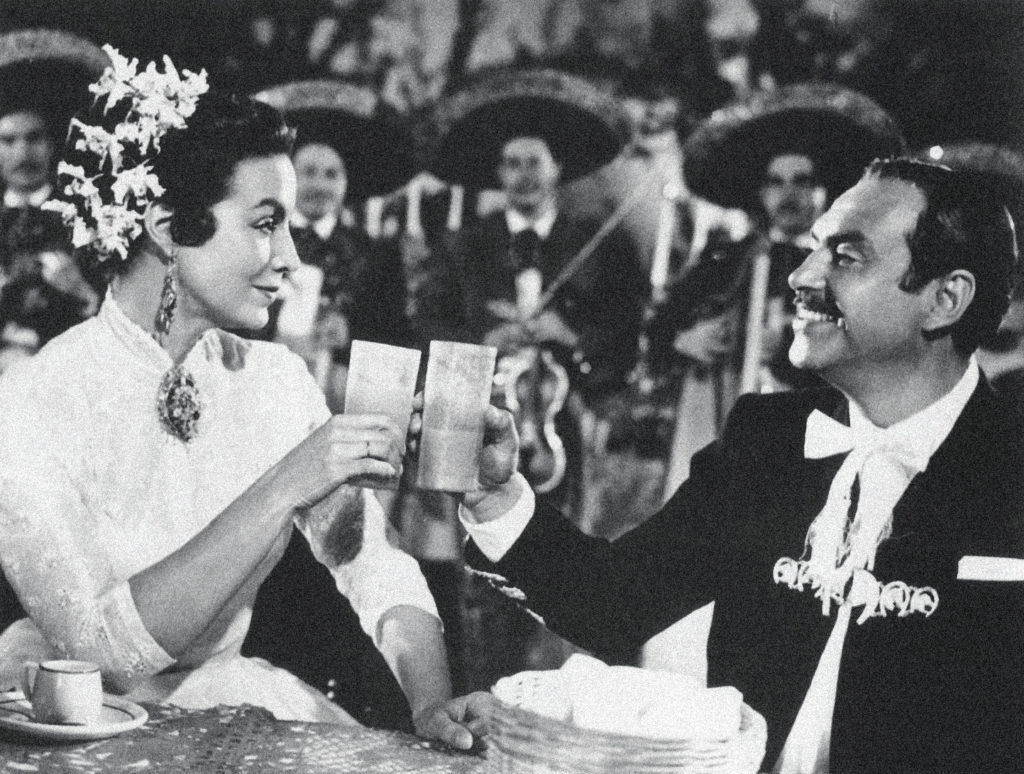
On September 27, she starts an international tour of South America along with Andrés Soler, with whom she puts on a comic show. In Ecuador she conquers Guayaquil and, a week later, Quito.

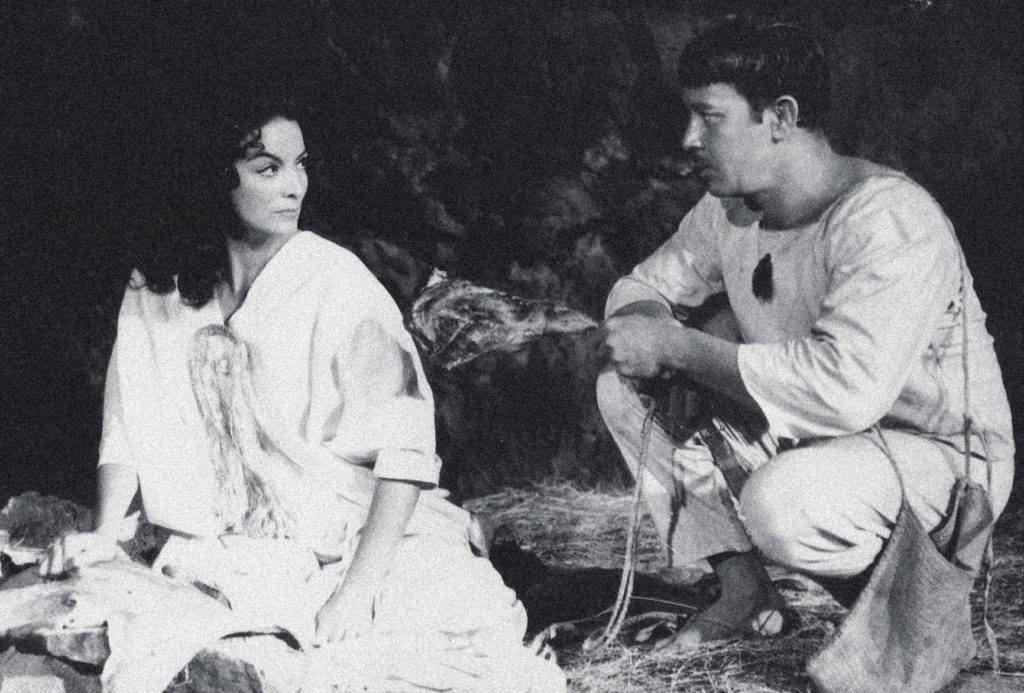
In Tizoc, her beauty again fills the screen and, no matter the highly unfortunate screenplay, her portrayal of the leading part is overwhelming. Since she starred in the film even though it was of no interest for her, she is promised a part in Juana Gallo, with Dolores del Río as co-star.
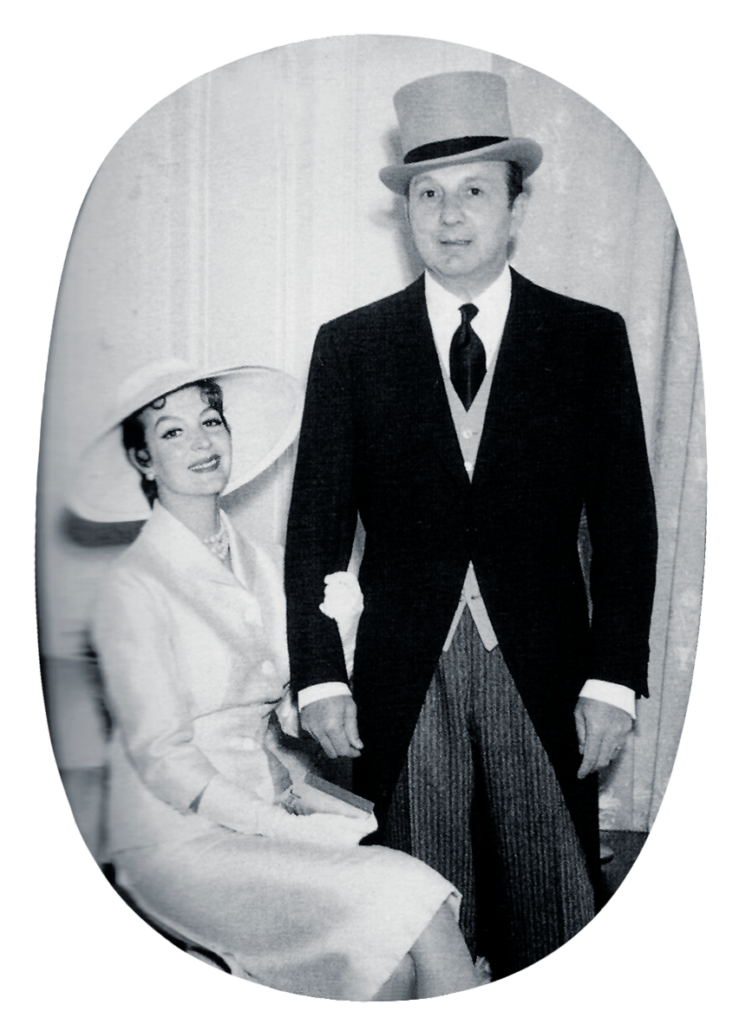
On December 20, she gets married in Courbevoie, in the outskirts of Paris, with the French businessman Alexander Berger.
A new nickname is added to her long list of aliases: Puma.
Based on a novel by Vicente Blasco Ibáñez, Flor de mayo (May Flower) is adapted for the screen with a very different plot. Its filming has hard consequences for her: she has a serious fall and loses her baby from her marriage to Berger. She stars the movie along Jack Palance in both English and Spanish.
To her international career is added the fact that she performed in French, Italian and English, something that none of her contemporary actresses achieves.
She moves with her husband to a house that Berger builds for her, at 610 Hegel Street.
She visits Colombia on an international tour.
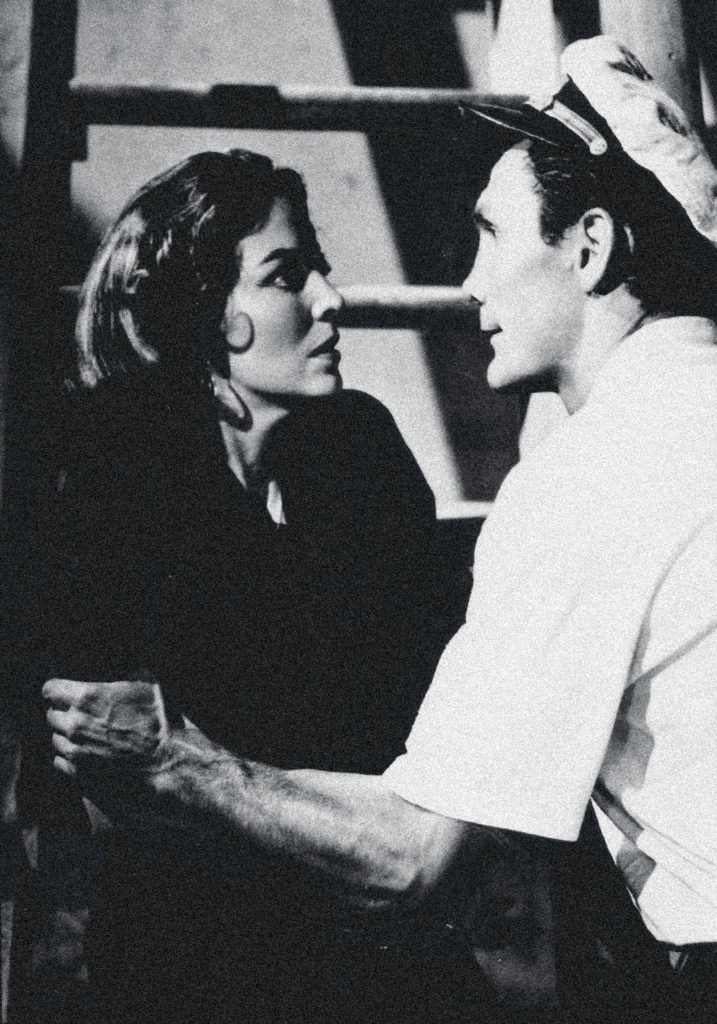
On May 13, Faustina is premiered at the Gran Vía cinema in Madrid. Myth and reality merge into a 43-year-old woman, who looks as young as ever. Her portrayal of the sinister title character in the movie, allows her to incorporate in his statements and interviews the world of magic, sorcery, witches, tarot and evil beings with whom she would later nourish, in her mature age, the story about having gone down to hell and talk to the Devil.
She is interviewed by screenwriter Pierre Cardinal for French television.
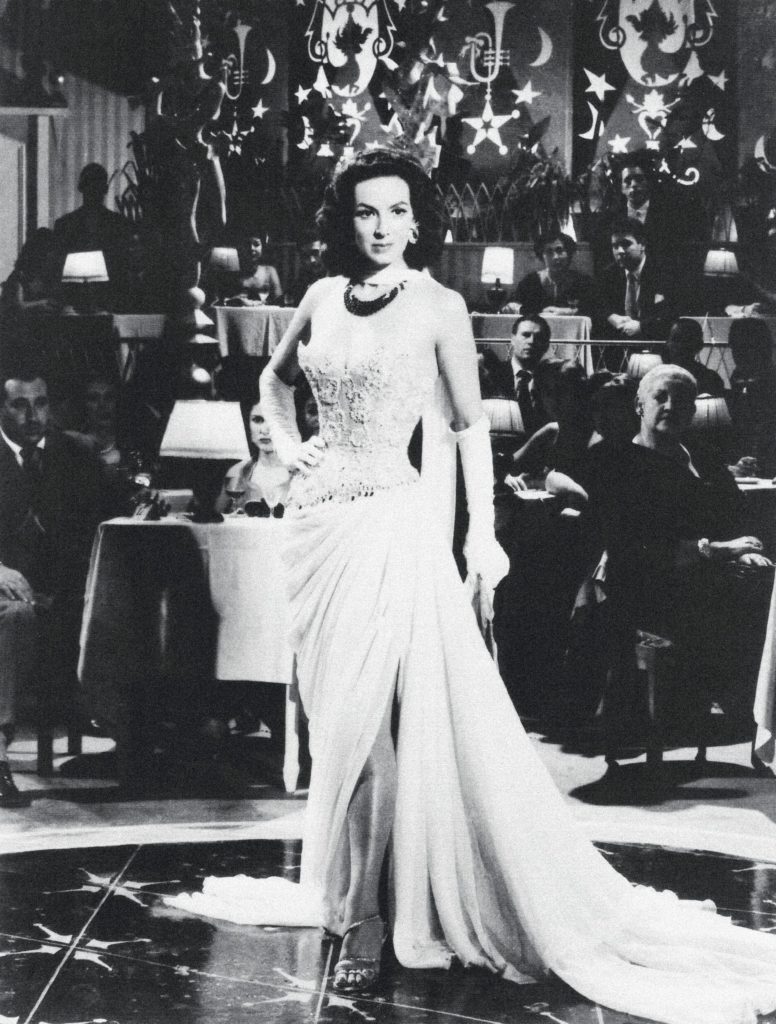
Her close friend and eternal fan, Diego Rivera, dies.
She spends her life between Mexico and France, where she lives in an apartment near the Arc de Triomphe.
An opera lover, she attends with her husband performances by great singers such as María Callas and Anita Cerquetti, among others. She feels very passionate about Wagner’s operas.
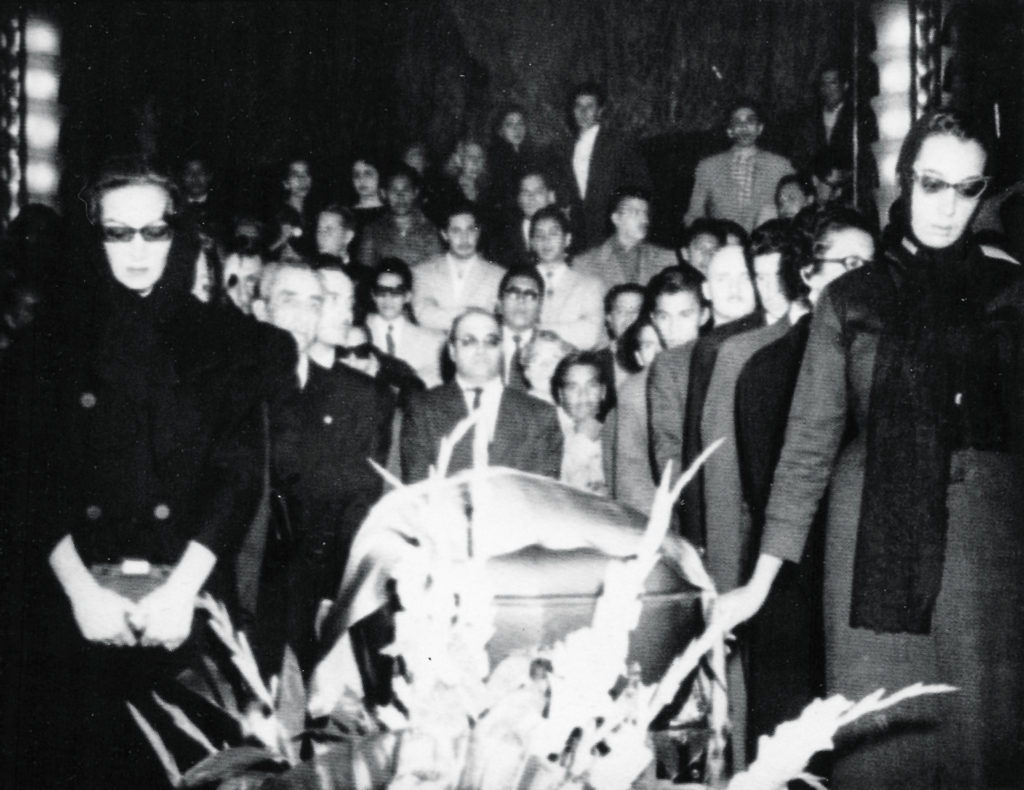
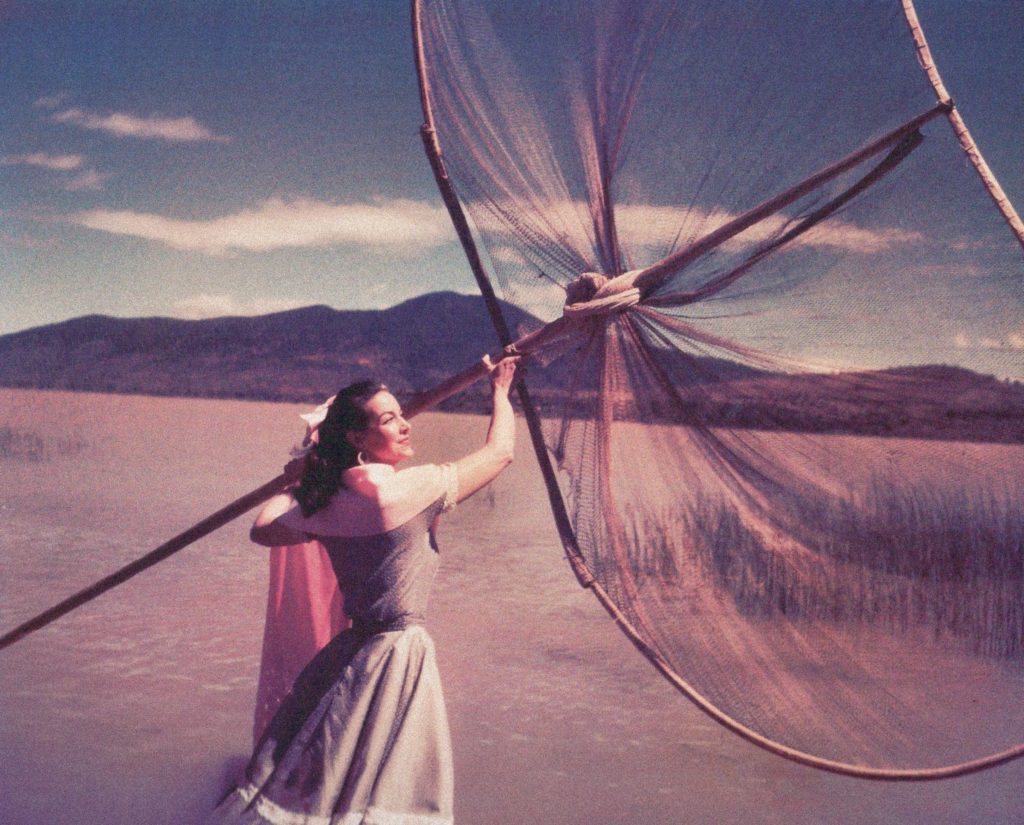
The screenplay by Luis G. Basurto guarantees the success of the film feature Miércoles de Ceniza (Ash Wednesday). The film wins several technical awards in Mexico and is favorably accepted at the VIII Berlin International Film Festival.
The costume designs by Valdés Peza for the main character Mónica in Café Colón are highly elaborated and striking. Among the gowns is the dress La Doña used previously in Everyone’s Woman, now adapted for her new role. Once again, the actress is dressed as a bride, but wearing this wedding dress on stage does not augur death or fatality as it happened in other film sets.
She travels with her husband Alex through France, England and Italy, where she focuses on obtaining artistic pieces for her house in Mexico and her apartment in Paris. The latter is decorated with an avant-garde-oriented aesthetic and follows the design derived from the Bauhaus movement.
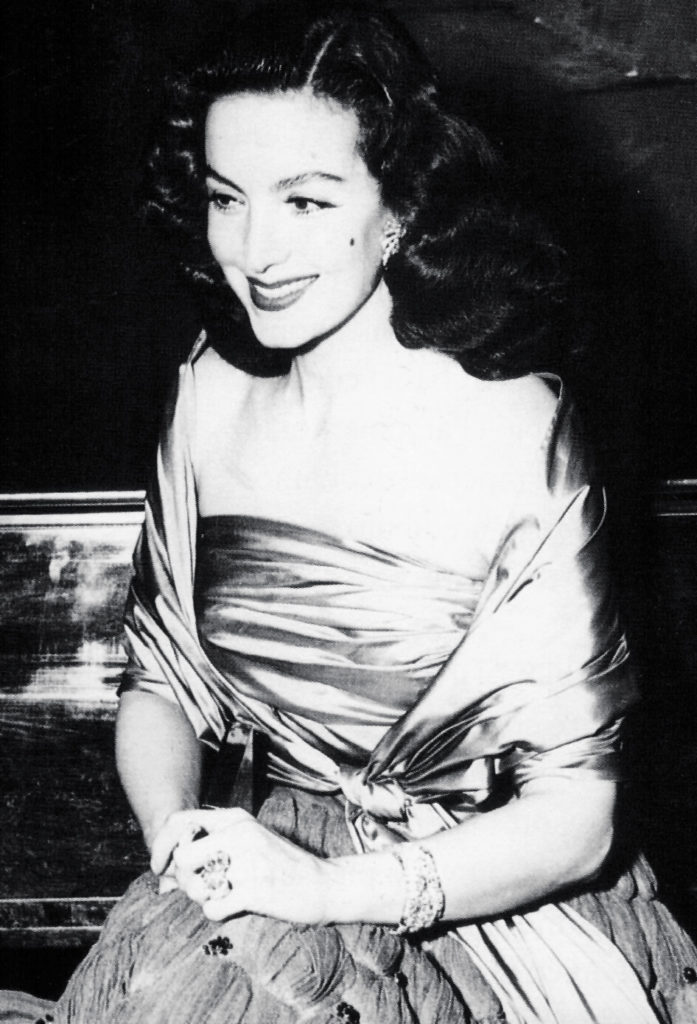
She develops a close relationship with Christian Dior and Hermés of Paris, high-end Houses that catapult her to become an icon of international fashion. The deep love for jewelry is established as the key element of the style imposed by the Mexican actress.
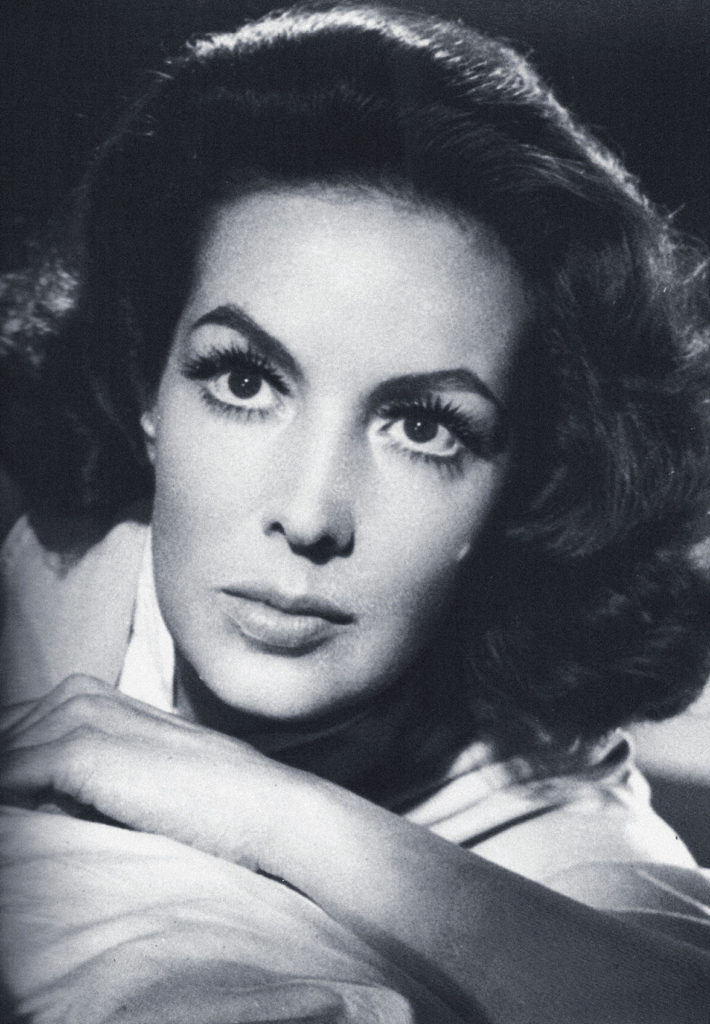
The feature film La estrella vacía (The Empty Star), based on the homonymous novel by Luis Spota, establishes evident parallelisms between the life of the character Olga Lang and her own life. The limits blur when María Félix appears as María Félix in the role of Olga wearing her very own jewelry, gowns and furs tailored by Christian Dior Couture, as well as the wedding dress she wore to marry Alex Berger. Everything Olga does is considered to be part of the real personality of María. The press cannot help to compare both women, real and fictional. But she argues: – Empty? – Who has seen my insides?
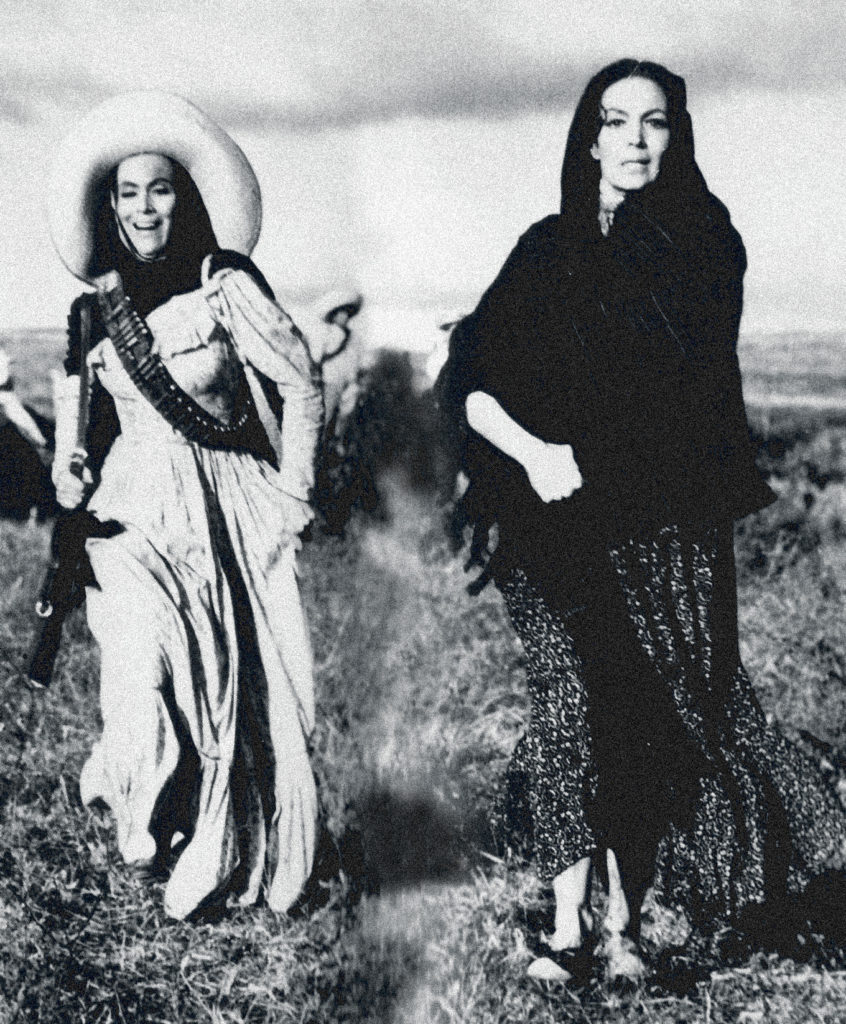
In La cucaracha (The Soldiers of Pancho Villa), she plays the role of a brave woman that joins the troops of Colonel Antonio Zeta (played by Emilio El Indio Fernández) and becomes his wife. Her role requires her to learn how speak vigorously and integrate a popular, aggressive and somehow vulgar vocabulary from which she would hardly detach.
She refuses to perform the nude required by the script because she considers it unjustified. She only agrees to show her naked back in an erotic way.
Sonatas, a Mexico-Spain co-production, faces two stars locked in a histrionic duel: the Spanish Aurora Bautista and María Félix. However, the flawless personality and strong acting skills of the Mexican make her the winner.
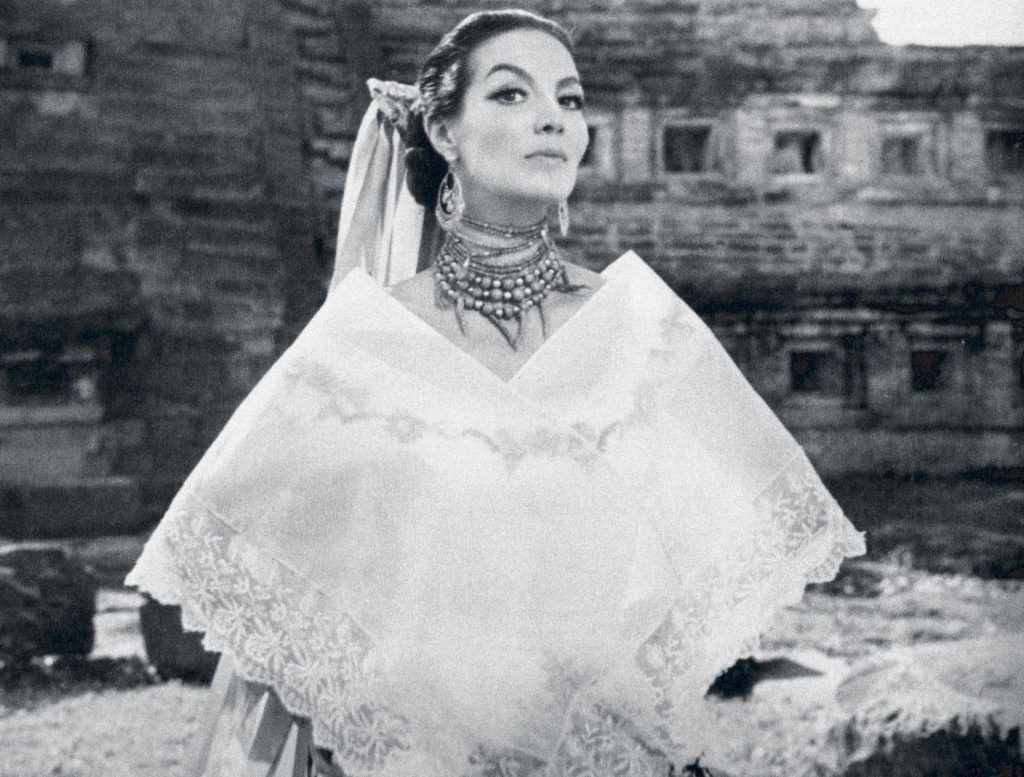
Her presence in European horse racing clubs becomes her way to demonstrate all her triumphs. There is even one stable with more than eighty-seven thoroughbred racehorses that bears her name. The international press baptizes her as The Queen of the Racetracks.
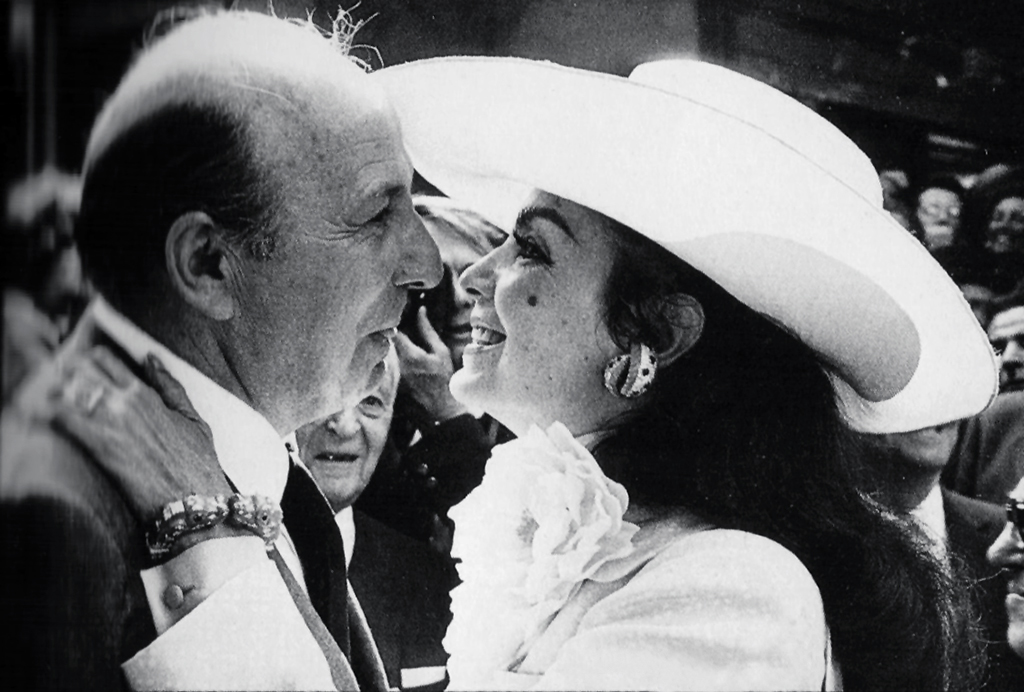
In her pursuit of starring in a master piece, she puts herself completely in the hands of Luis Buñuel, and shoots Los ambiciosos (Republic of Sin) with Gérard Philipe as her co-star. One of the investors is Alex Berger.
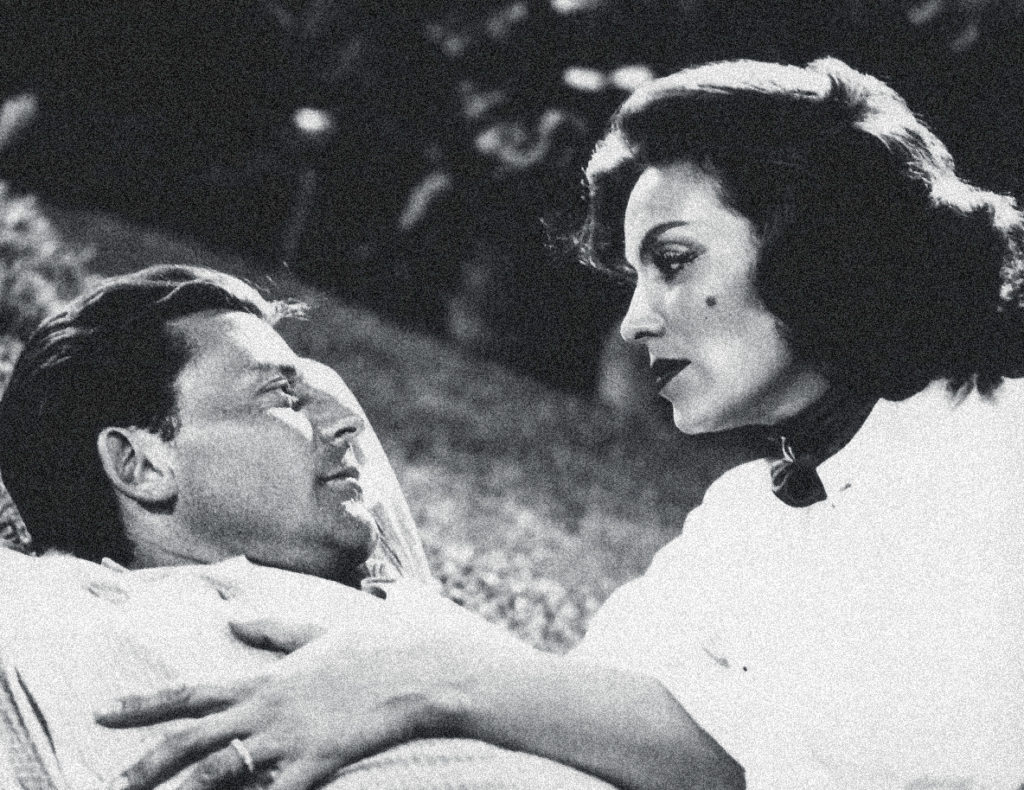
She is already in possession of a considerable collection of art, which would be enriched until her death. To this collection are added her outstanding antiques and porcelain pieces.
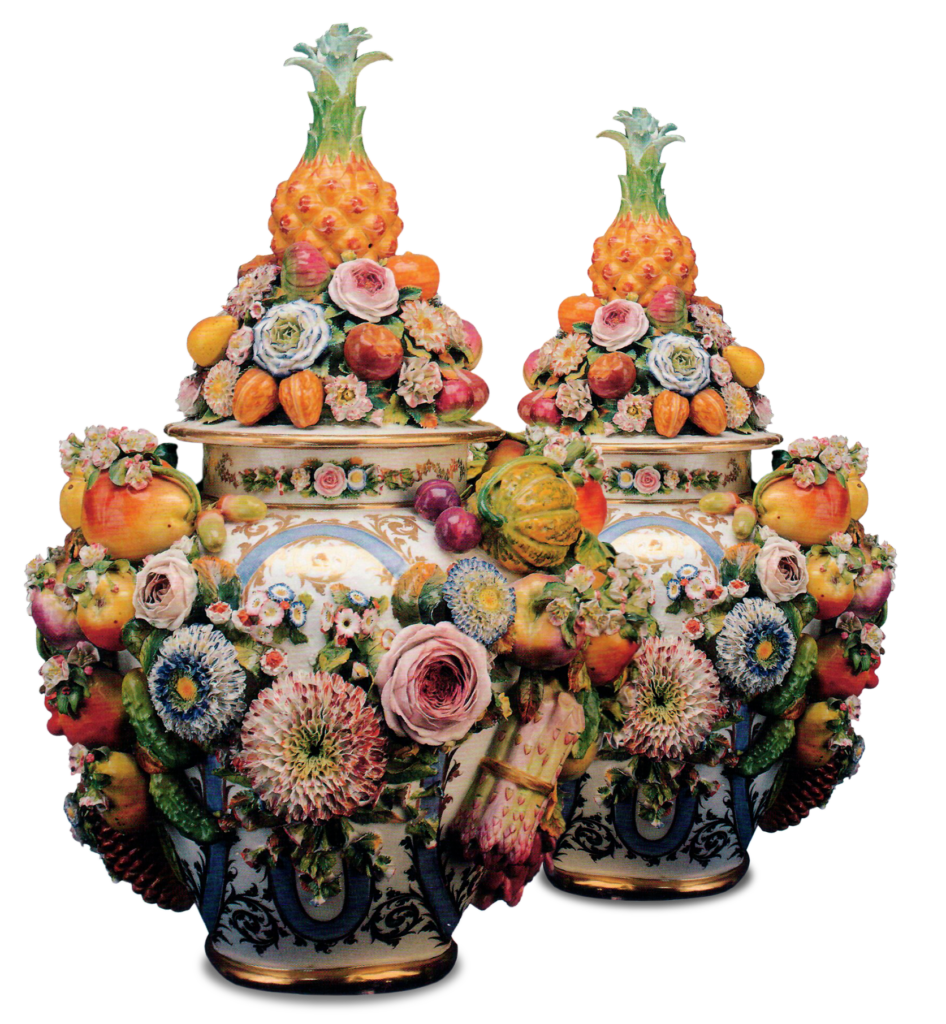

In Juana Gallo, the revolutionary theme again allows her to play a character of high scenic strength. It seems as if screenwriters and directors were committed to use every opportunity they had to dress her as a man: as it happened in The Lieutenant Nun and in The Soldiers of Pancho Villa, and as it would happen in her last shot movie La Generala, she appears on the screen wearing a stylized variant of a beautiful man suit that gets embellished by her expressive eyes.

She lives in the Polanco neighborhood accompanied by her sister-in-law, Reyna, who is in charge of the household, and her mother, Doña Chefa.
In La bandida (The Bandida), she displays a wide range of emotions: she cries, laughs, sings, suffers, insults and fights in what seems to be the most vigorous role of her career. Her portrayal of a prostitute that falls in love shakes once again the double moral standards of the time, even though at the end of the movie the main character loses all arguments, victim of a society that considers that a prostitute has no right to be happy.
The revelation in a fickle dream full of irony and comedy, allows her to make fun of herself by repeating the hilariousness of her presence in the film Reportaje (Report News). The remuneration that she receives for her small part as herself in the film Si yo fuera millonario (If I Were Rich) becomes one of the largest sums paid to her throughout her career.
Her son Enrique studies Political Science at the National Autonomous University of Mexico (UNAM) in pursuit of a diplomatic career.

In the maturity of both her career and life, with 49 years, when filming Amor y sexo (Love and Sex), she agrees to shoot several suggestive bed scenes and a nude one with Julio Alemán. Actually, the original screenplay did not consider such scenes: she was the one to propose them so as to improve one of the prison scenes with a more dramatic tone. Not only does the scene scandalize society by its nature, but also by the fact of raising a loving relationship between a man and a woman older than him.
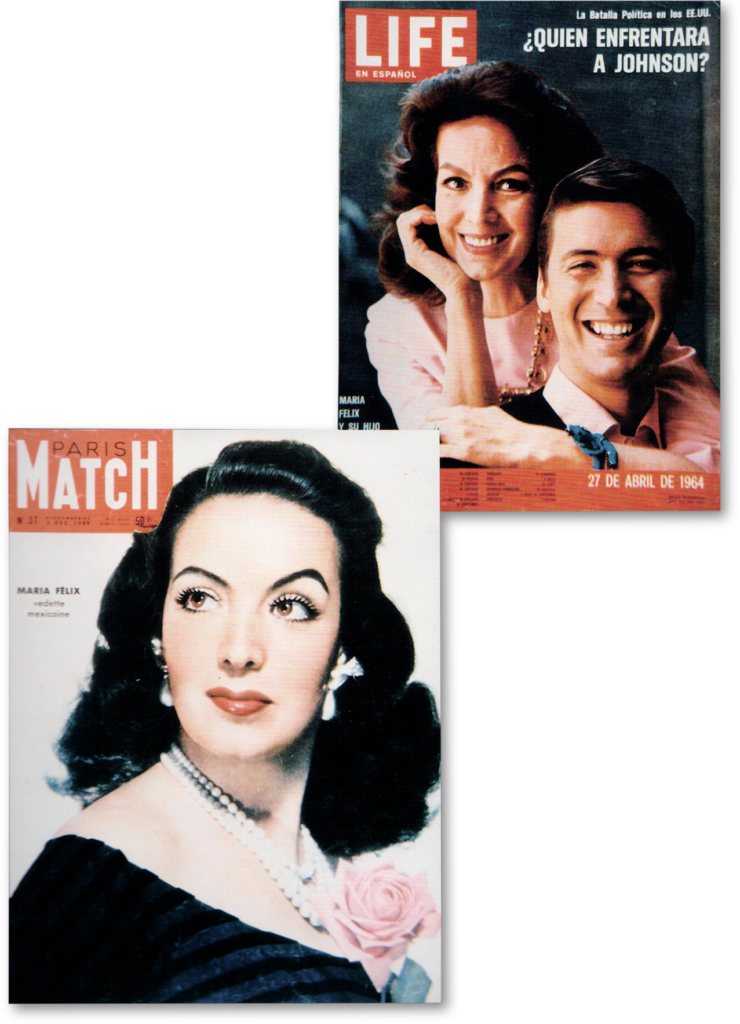
She appears as the cover girl of many specialized magazines worldwide, a fact that talks about her international recognition.
She visits Lima, Peru, on an international tour.
She is interviewed by television presenter Luis Ángel Pinasco for Peruvian television.
The comedy film La Valentina immortalizes her image on the screen as she dances and sings with Eulalio González, El Piporro. Even at almost fifty years of age, her role as a beautiful and jovial bride of timeless appearance is plausible thanks to the myth of her eternal beauty, a legend that would last for many years more.
Various biographical attempts full of inconsistencies circulate, which are all rejected by the actress.

She maintains a solid friendship with Renato Leduc and his wife Leonora Carrington, who paints for the actress the surrealist triptych Sueño de Sirenas (Dream of Sirens).
Her son Enrique debuts artistically in a production by Ernesto Alonso. Shortly after, Luis Buñuel enrolls him in the cast of one of his films.
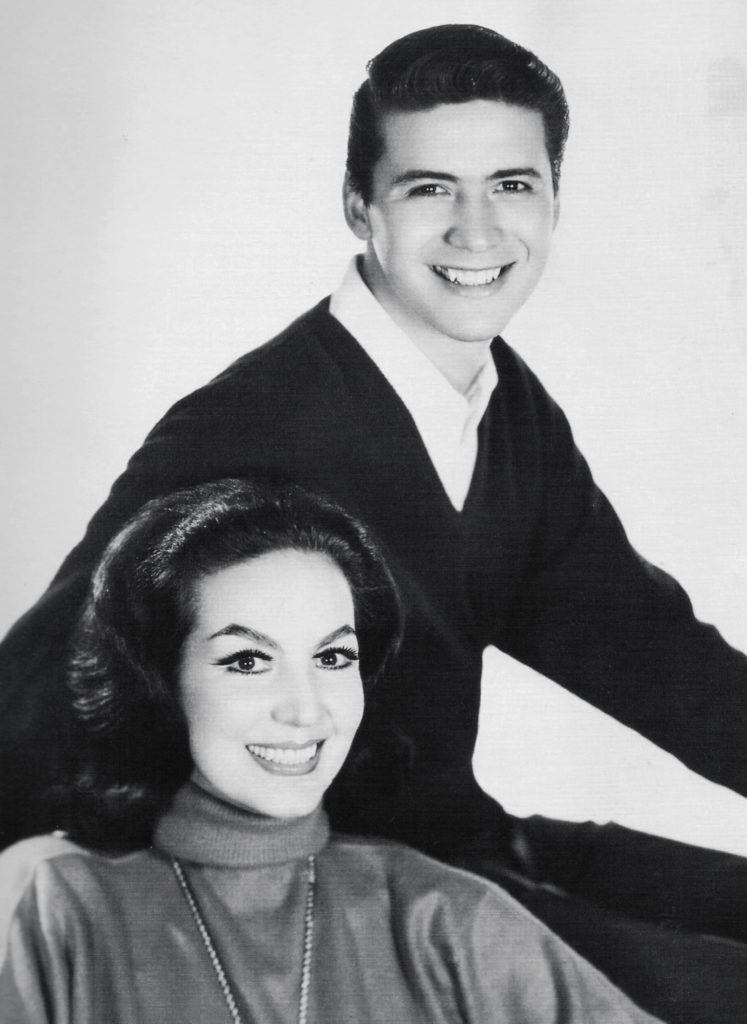
She records the album La voz de María y la inspiración de Agustín Lara (The Voice of María and the Inspiration of Agustín Lara).
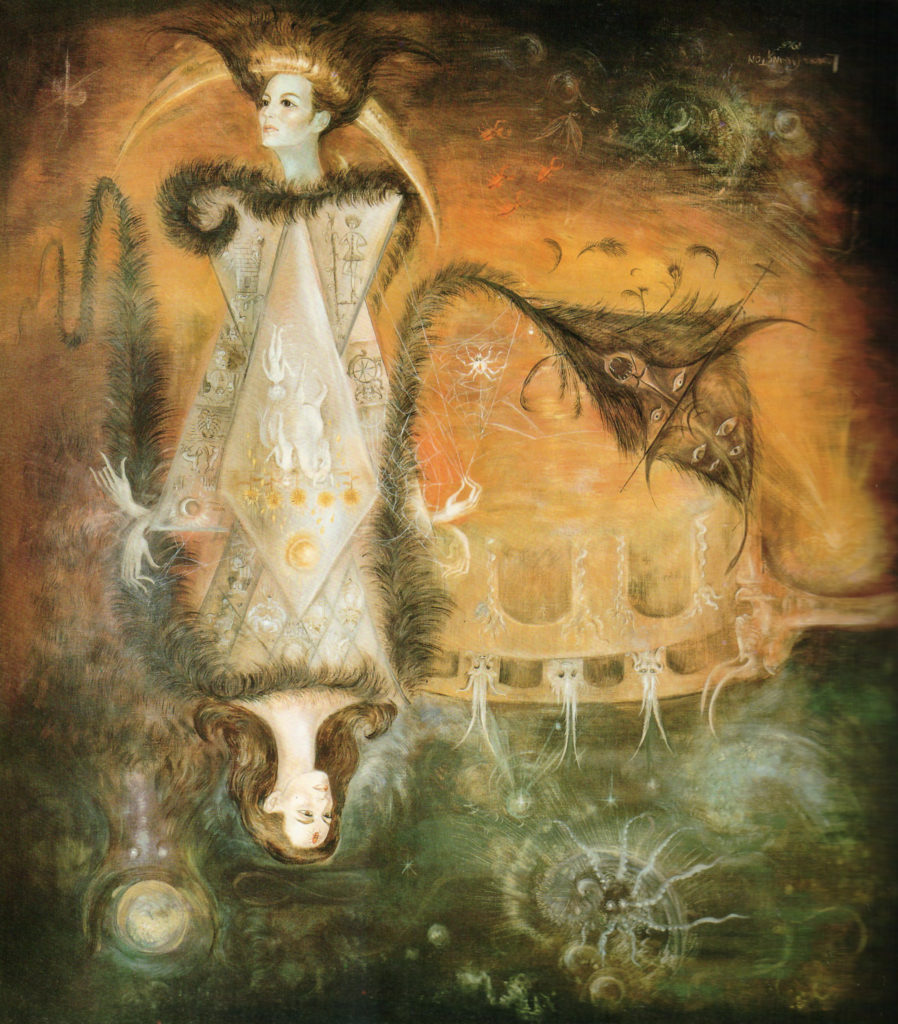
Leonora Carrington paints the large-format painting La Maja del tarot (The Pretty Woman and the Tarot), a portrait of the Diva, which occupies the wall where the portrait that Diego Rivera painted in 1949 was before.
She commissions Cartier to design an exclusive snake necklace in platinum, gold and enamel, with 2,500 encrusted diamonds.
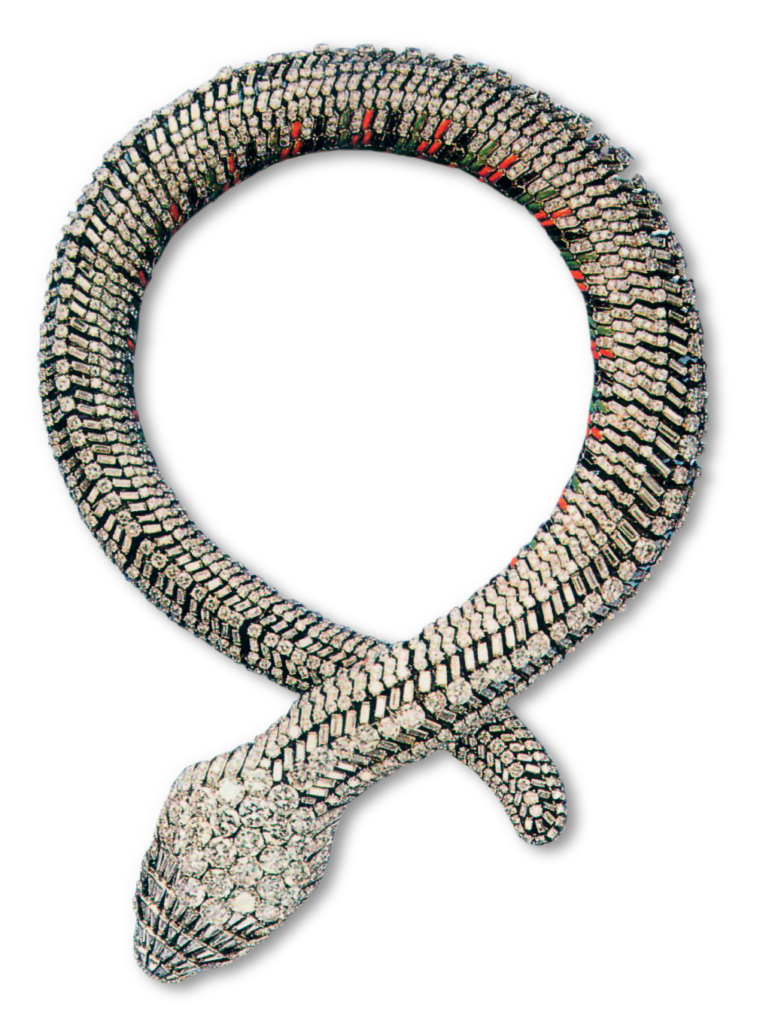

In a symbolic gesture, Alex Berger gives her what she considers to be the greatest present ever received by her: the project for the construction of the Mexico City subway. It is in her house in the Polanco neighborhood where the agreements between the authorities and her husband’s company are carried out.
She is interviewed by Jacobo Zabludovsky and Pedro Ferriz Santa Cruz for the television show Automex Presenta (Automex Presents).
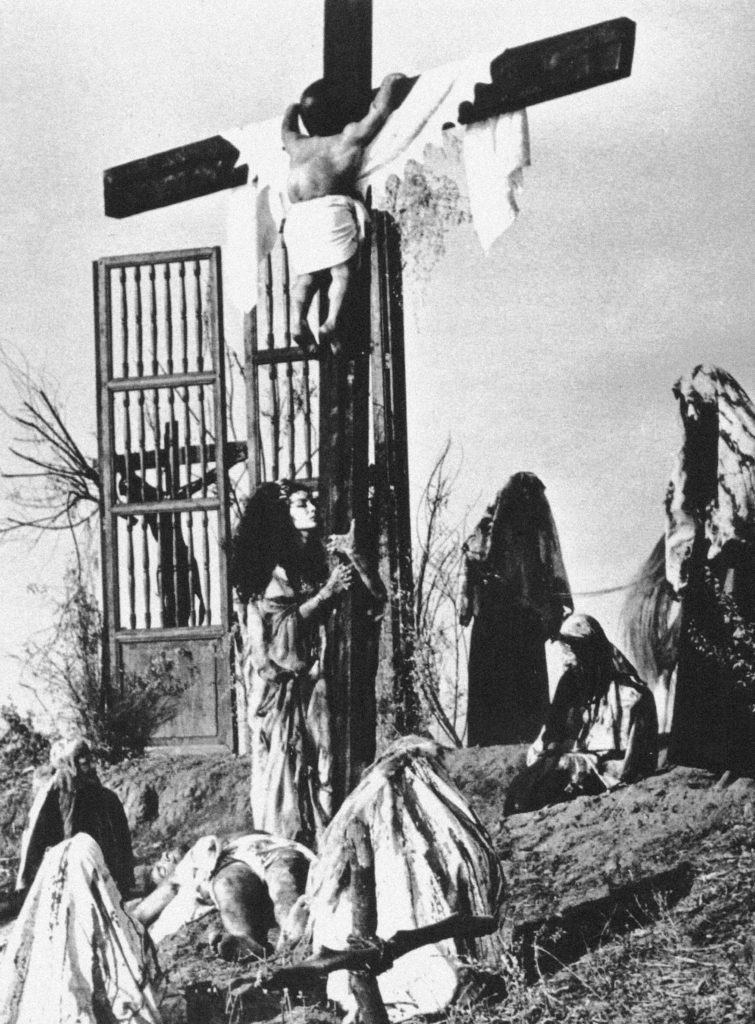
She ends her film career with the film feature La Generala, feeding the public imagination with the idea of a parallelism between the life of the main character Mariana Sampedro and her own history, addressing the impure idea of incest among teenagers and the death of a brother under treason.
She officially retires from the world of cinema with the support of her husband Alex Berger, who is one of the main investors. Apparently, her goal is to find a really meritorious screenplay that would allow her to star in a more powerful film, but in all the decades to come, she would never find it.
She confines her complex personality nurtured by filmic echoes in the privacy of her homes in Mexico City and Paris. Her public appearances are sporadic, and only on television.

She shoots the historical soap opera La Constitución (The Constitution), directed by her friend Ernesto Alonso.
She travels to Caracas, Venezuela, to shoot some episodes of the soap opera Cristina, where she stars in the role of Domenica, aka La Leona.
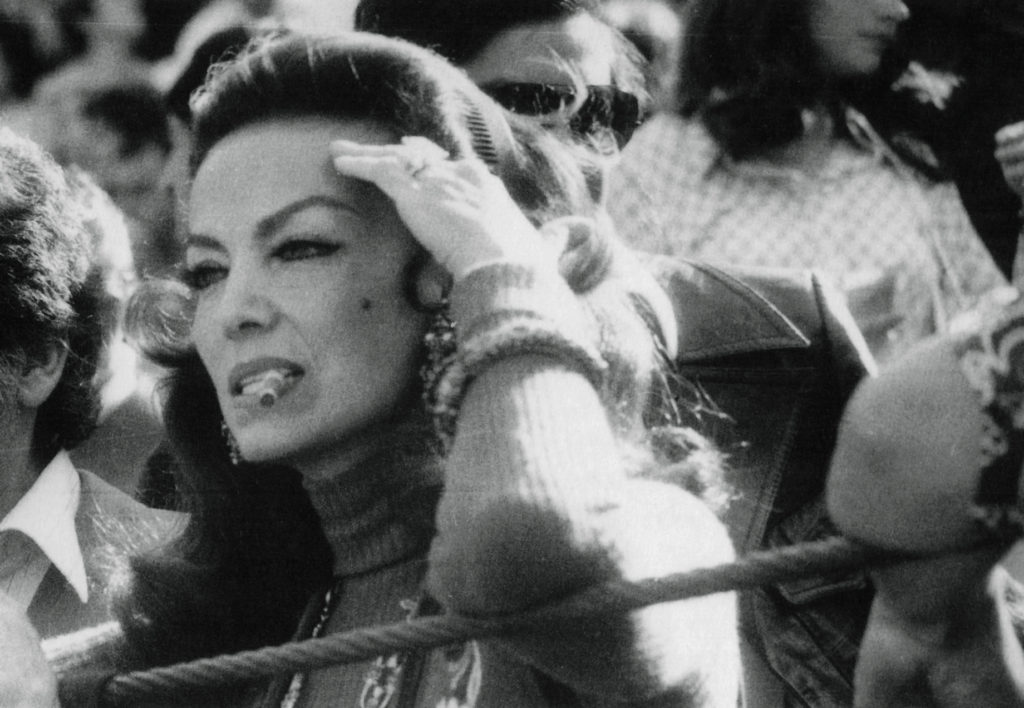
Her presence is consecrated in different scenarios, such as that of fashion, intellectuality, high society, art collection, equestrian world, art and cinematography.
Doña Josefina Güereña dies peacefully at her daughter’s home in the Polanco neighborhood.
In Paris, Alexander Berger dies of lung cancer. Once again a widow and in deep solitude, she deals with a depressive episode at the Mayo Clinic in Rochester.
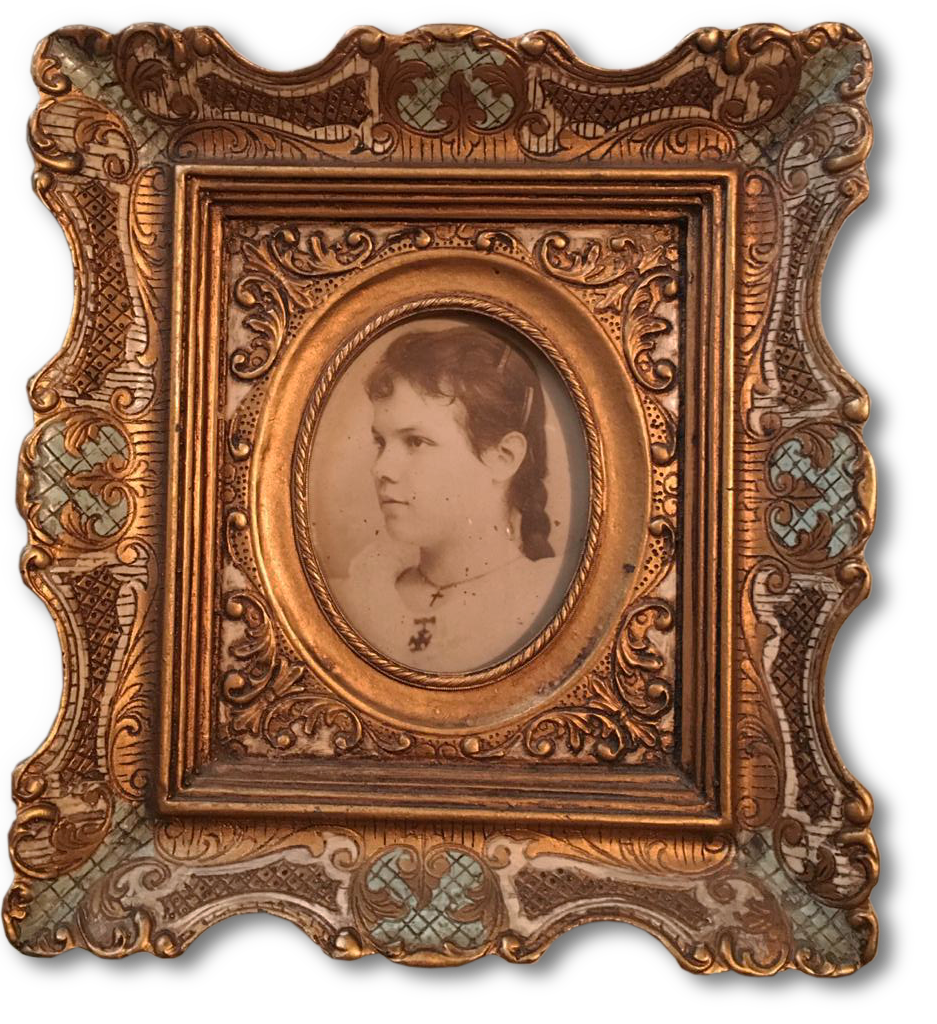

She commissions Cartier to design what would become the most extravagant and emblematic jewel of her collection: a double gold crocodile necklace covered in 1,023 yellow diamonds and 1,060 emeralds.
A young Parisian with whom she had a fleeting and tormented relationship composed the song Je l´aime à morir (I Love Her to Death). Two years later, Francis Cabrel would officially release the song.
He attends the ceremony held at the Aurora Cinema in Ciudad Nezahualcotl, in the State of Mexico, to unveil the street sign that, at the request of the neighbors, bears her name. Carlos Monsivais makes an interesting chronicle about it.
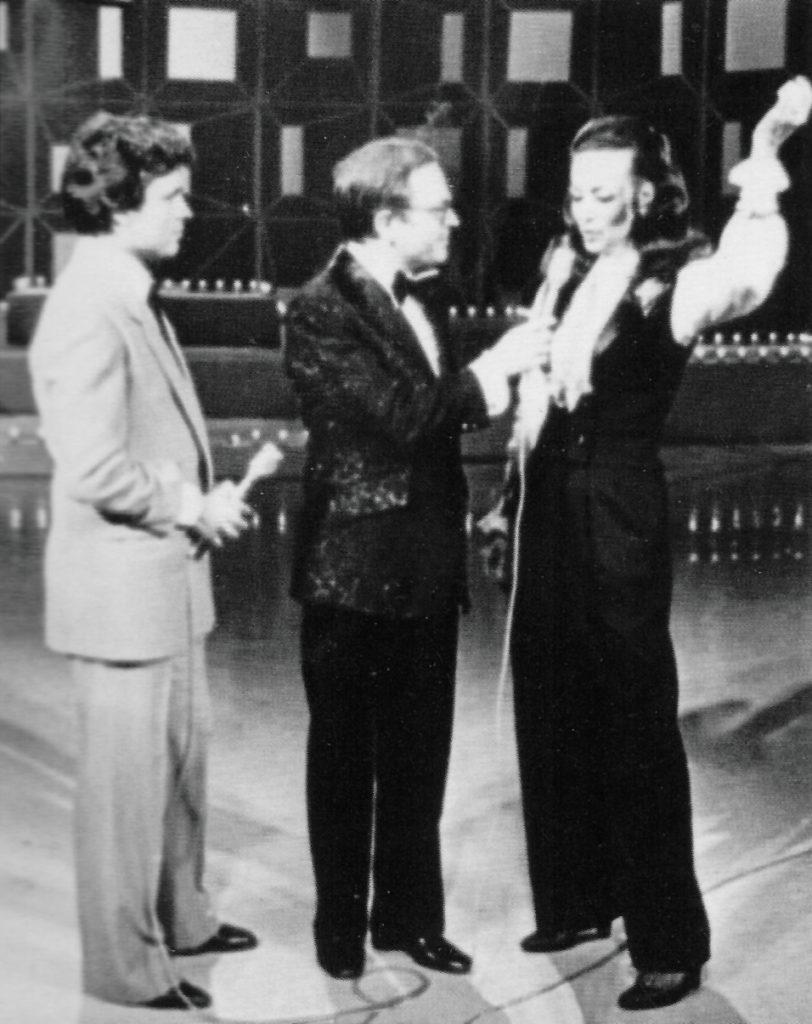
During his appearance on the television show Siempre en Domingo hosted by Raúl Velasco, the singer-songwriter Juan Gabriel dedicates the song María de todas las Marías (María among all Marías) to her.
She receives a tribute to her career at the Ibero-American Film Festival in Huelva, Spain.
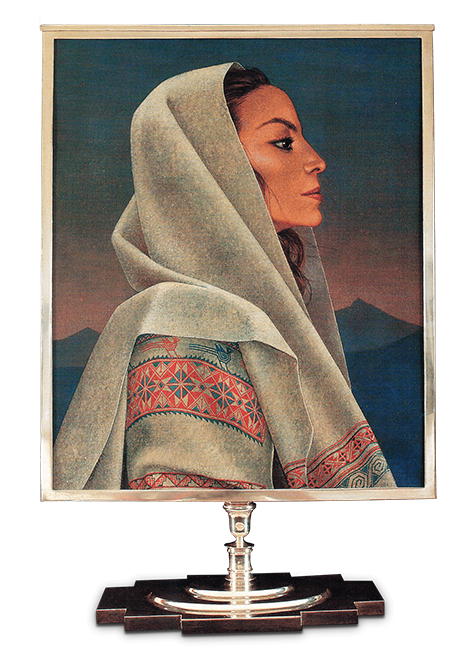
In the library of a Parisian friend it is found a portrait unknown to her in which she appears with an indigenous mantle covering her head. She decides to take ownership of the painting, and with that it begins the search for the painter, to whom she will later on commission a similar painting. In this way she meets Antoine Tzapoff in October. She decides to keep both paintings, and asks Pedro Leites from prestigious silversmithing house TANE to create a rotating silver frame so as to ensemble both paintings together.
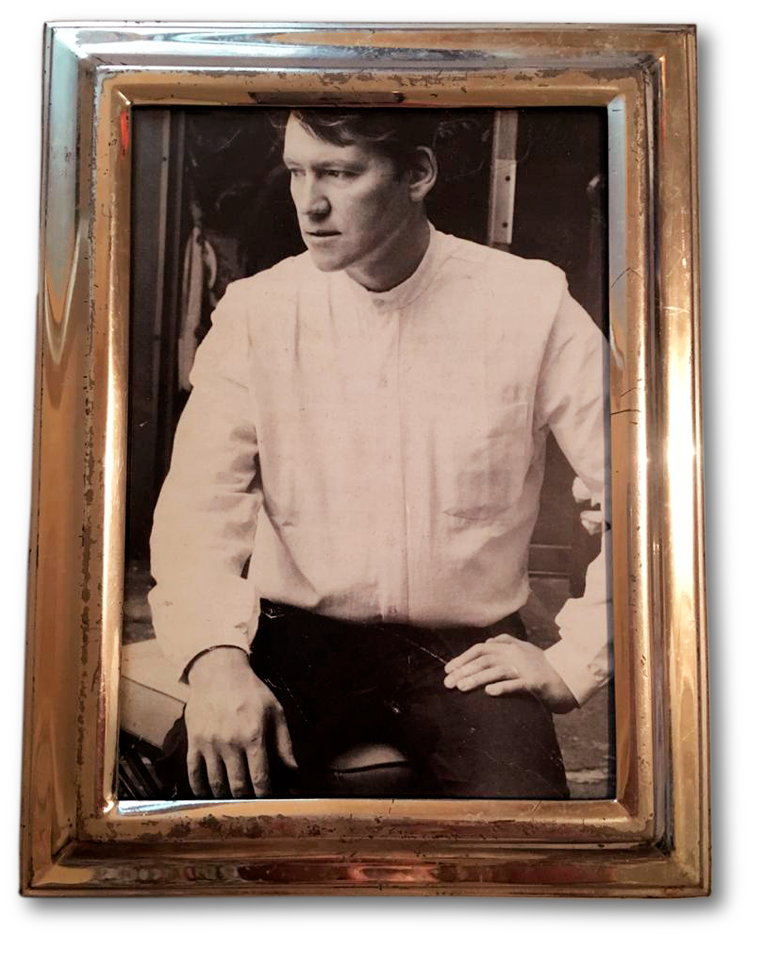
This event joins together two of her more profound relationships in her life: the profound sentimental bond with Antoine, who would dedicate to her the next few years of his painting, and the close proximity to TANE. From the latter she would purchase outstanding goldsmith’s pieces for use in Mexico and France, as well as the fabulous fighting roosters and the emblematic DOÑA DOÑITA, PUMA PUMITA, MARÍA BONITA bracelets.
The Chamber of the Italian Fashion Industry recognizes her as the best dressed woman in the world.
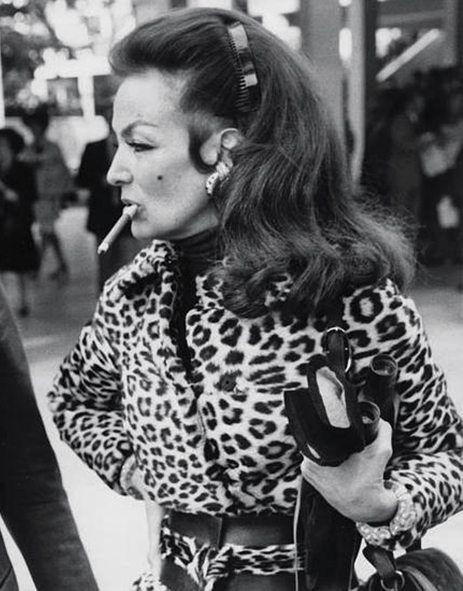
The Mexican Academy of Film Arts and Sciences awards her the Golden Ariel in recognition of her cinematographic career.
She unveils the street sign that bears the name María Bonita in Acapulco.
She acquires in the city of Cuernavaca, Morelos, an Italian-style villa designed by the architect José Mendoza, which she calls Casa de las Tortugas (House of Turtles).
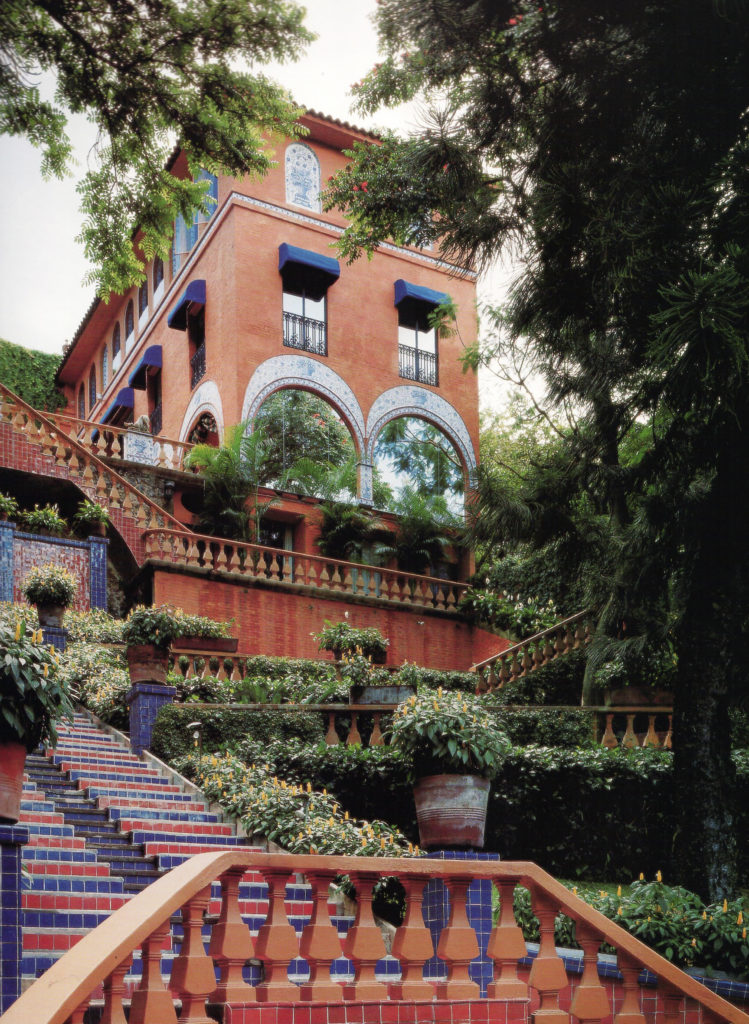
The Association of Cinematographic Journalists of Mexico (PECIME) awards her the Silver Goddess for her international career as an actress.

She launches the first pictorial exhibition of Antoine Tzapoff: Los Indios de México (The Indians of Mexico), at the Palacio de Minería (Palace of Mining) in Mexico City. Throughout the next decade, she would be in charge of touring the exhibition through Mexico, the United States, France and Spain, as a visual testimony of Mexican culture.
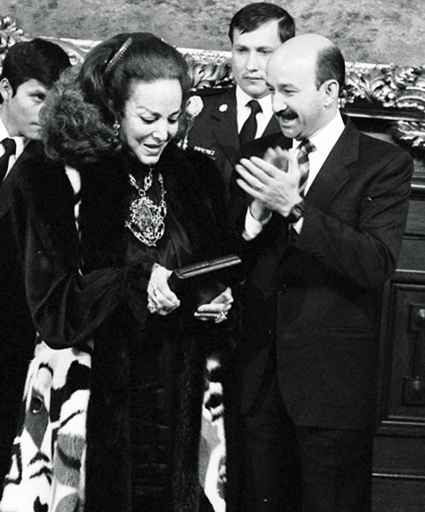
President Carlos Salinas de Gortari honors her with the “Mexico City” Award.
She auctions her collection of furniture and decorative arts Napoleon III in Paris.
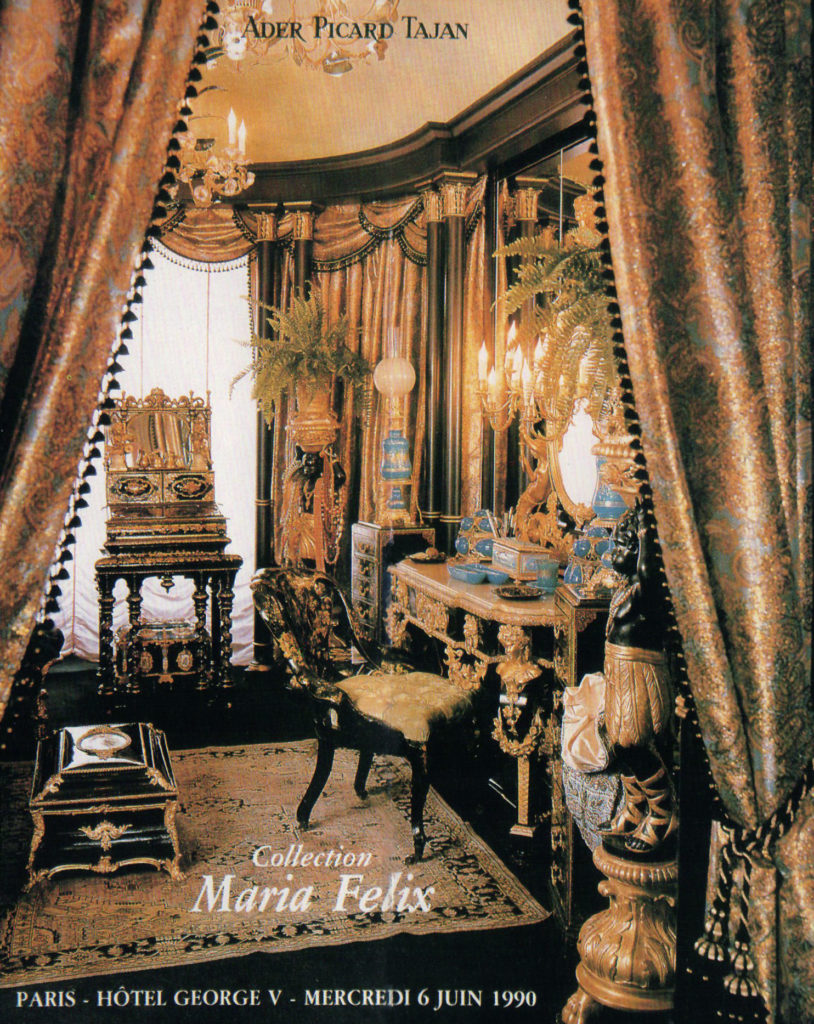
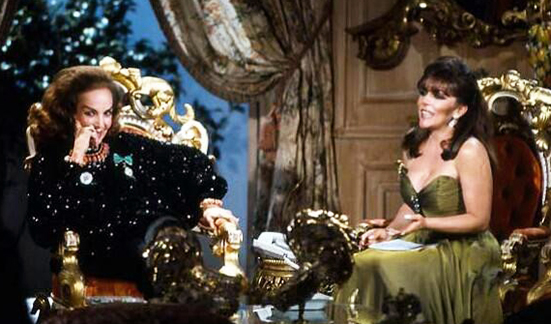
She returns to international television in the program La Movida, hosted by Verónica Castro, who interviews her extensively. For the purposes of the interview, she moves part of the home furniture and her artistic collections to a studio, with which she touches the heart of new audiences and generations. The interview is a true display of beauty and mature intelligence that is accompanied by great guests who pay tribute to her. The interview breaks all audience records and becomes a cult reference for those who follow her legacy.
The National Association of Actors (ANDA) awards her the Medal to the Artistic Merit for the fifty years of her film career.
She is awarded by the National Autonomous University of Mexico (UNAM) for her film career. She receives support from Rector José Sarukhán for launching specialized exhibitions and academic publications.
His son Enrique directs, using her photographic collection, the edition and publication of the book María Félix, with a foreword by Octavio Paz.
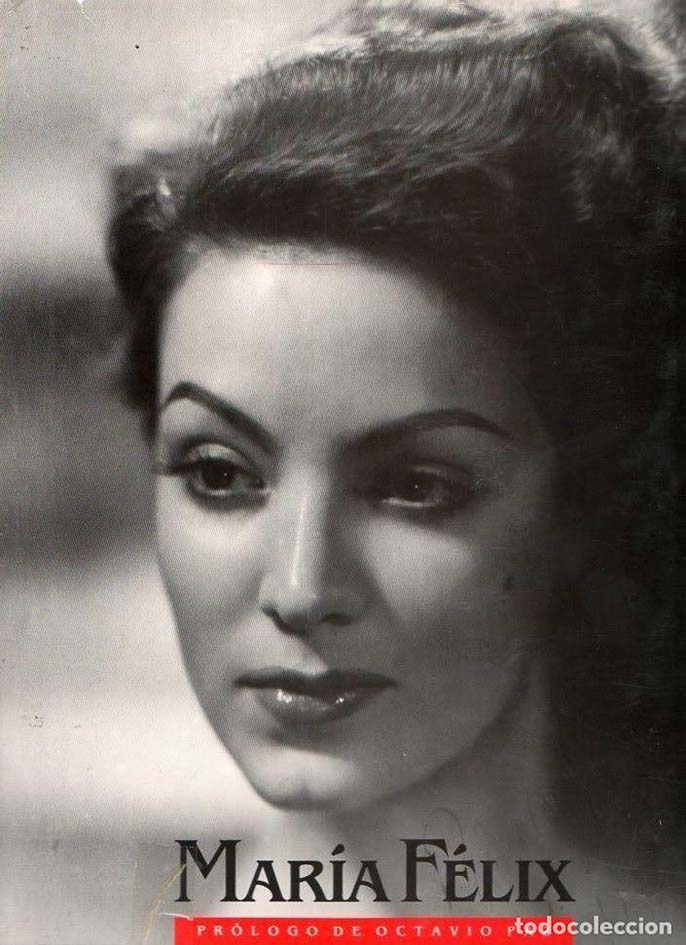
Publication of the book María y sus pintores (María and Her Painters) with a foreword by Rodolfo Rivera.
Publication of the book María en el cine (María in the Cinema) with a foreword by Rodolfo Rivera.
She presents, at the Palacio de Minería in Mexico City, the exhibition María y sus pintores (María and Her Painters), where the public can appreciate for the first time the 29 portraits painted by various national and international artists, as well as some antique furniture from her collection.

The editorial house Clío launches a collection of four illustrated books with her authorized biography: Todas mis guerras (All My Wars), written by Enrique Krauze. Later on, ther would be several editions of these books.
The Mostra de València pays tribute to her during the Mediterranean Film Festival. She is named distinguished guest of the city.
She presents, at the Valencia City Council, the pictorial exhibition Los Indios de México, with paintings by Antoine Tzapoff.
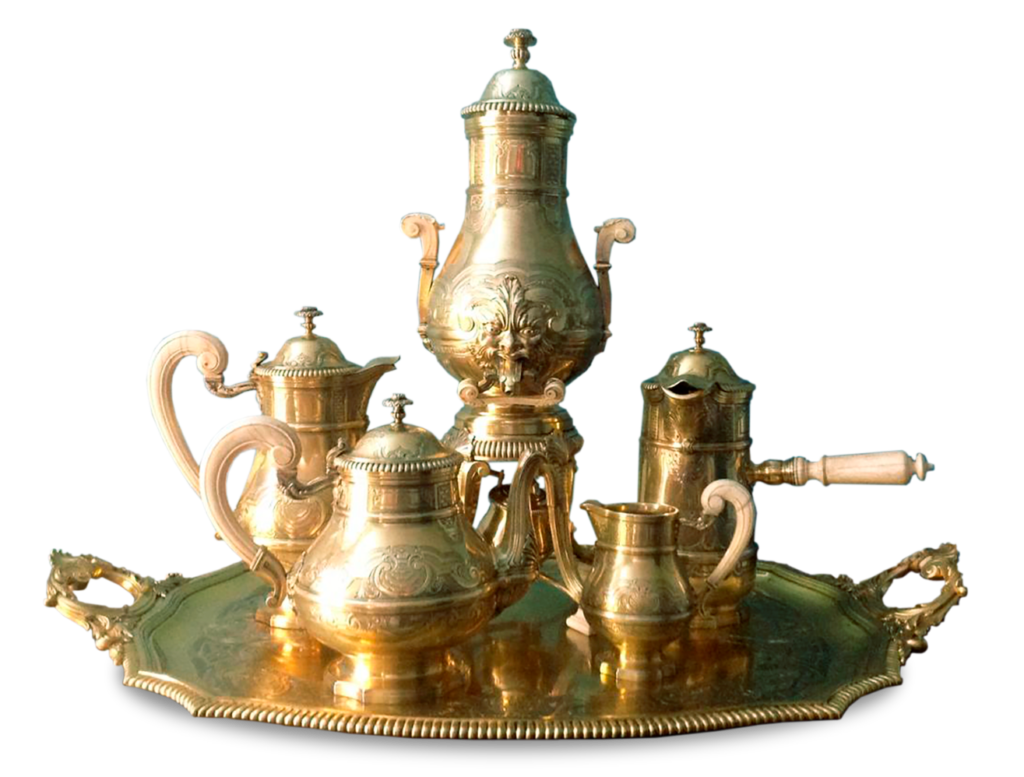
She needs one more driver for her home in Mexico City. Ernesto Alonso recommends Luis Martínez de Anda, son of his gardener, for that job. Luis will complement his work as a driver polishing the silverware during the semiannual departures of La Doña to Paris.
She auctions in Christies, Switzerland, some of her iconic pieces of jewelry.
On May 24, her son Enrique dies of a heart attack.
Luis Martínez de Anda permanently moves to her house in the Polanco neighborhood.
In Paris, she is appointed Commandeur de l’Ordre des Arts et des Lettres. This is the highest distinction and award granted by the Government of France to its citizens and foreigners for their work in promoting culture. She becomes the first Latin American actress to receive such award.

She reinvents herself and appears again on television, this time in a long interview with the journalist Ricardo Rocha. The interview, aired under the name of María Félix: una conversación (María Félix: A Conversation), would address several aspects of her life while she was living in different cities around the world.
Sentimental distancing with Antoine Tzapoff begins.
She is once again interviewed by Verónica Castro, this time for the last episode of the television show La Tocada. She makes strong statements in favor of women and their social empowerment. The show includes a mariachi band that plays and sings to celebrate her life.
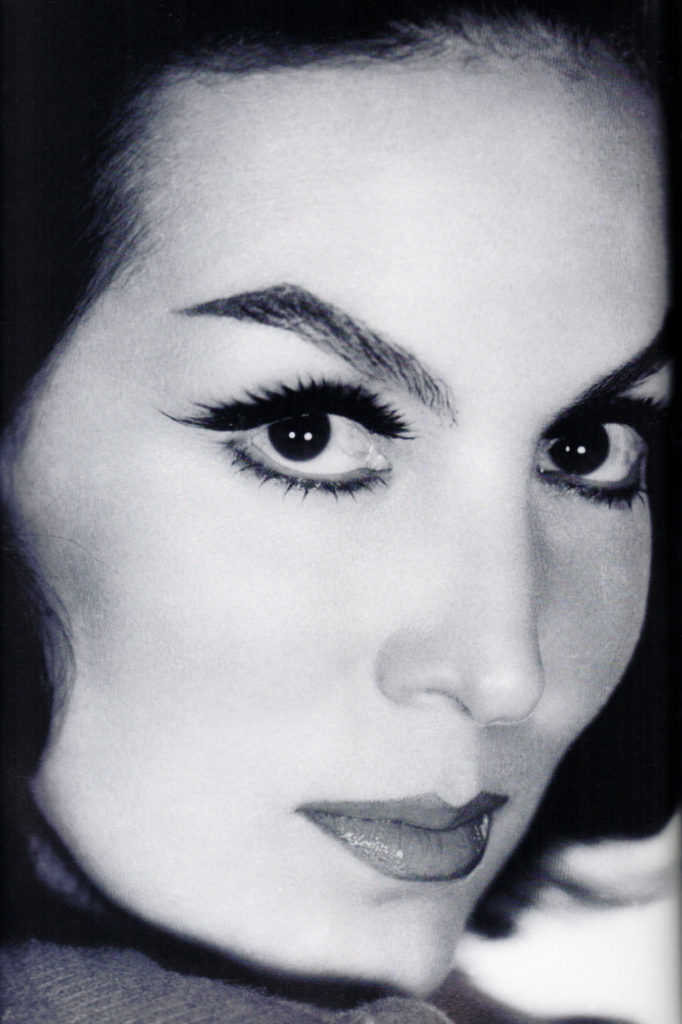
In memory of her son Enrique, she publishes the photographic book Una raya en el agua (A line in the water), with a foreword by Octavio Paz. A commemorative folder with impressions of the most famous portraits made for her by Antoine Tzapoff accompanies the publication.
She donates part of her extensive book collection to the General Archive of the Nation of Mexico.
On April 7, she receives a tribute at the International Film Festival of Madrid, Spain.

She sells her apartment in Paris, moves her collections to Mexico and begins a second remodeling of the Casa de las Tortugas, making it her greatest creation, full of excellent taste and artistic knowledge.
Luis Martínez de Anda becomes her personal assistant.
She records and presents her album Enamorada (In love) in the old Casa de los Azulejos (House of Tiles), in Mexico City.


During the inauguration of the temporary exhibition El Arte de Cartier (The Art of Cartier), presented at the Palacio de Bellas Artes (Palace of Fine Arts) in Mexico City, she meets again with the diamond snake, the couple of crocodiles mounted on a necklace and the pieces of jewelry in the form of a panther that once belonged to her.
Due to her great talent as an actress, she is made, in Paris, Officer of the Legion of Honour of the Government of France, a military decoration established by Napoleon.
She is invited to be the godmother of the Franz Mayer Museum Antiques Fair. Once she inaugurates the exhibition, she spends a significant amount of time seeing the pieces displayed.
She shoots a documentary for French television for which Cartier lends the diamond snake. The necklace becomes an iconic visual statement of the moment.
On July 9, she signs her last will and testament, in which Javier Téllez, assistant to her son Enrique, and Antoine Tzapoff appoint as beneficiaries of reduced economic amounts. She names Luis Martínez de Anda as beneficiary of the rest of her fortune.
She attends a concert at the Auditorio Nacional (National Auditorium) in Mexico City. This would be her last public appearance.
On April 8, on the eve of her eighty-eight birthday, she dawns lifeless at her home in the Polanco neighborhood.
The news of her death, shock the world. Major newspapers and magazines around the world dedicate their covers to recognizing her career and exalting her place in international culture.
Mexico says goodbye to the Diva with a tribute at the Palacio de Bellas Artes (Palace of Fine Arts), which is attended by large numbers of fans who gather in long lines.
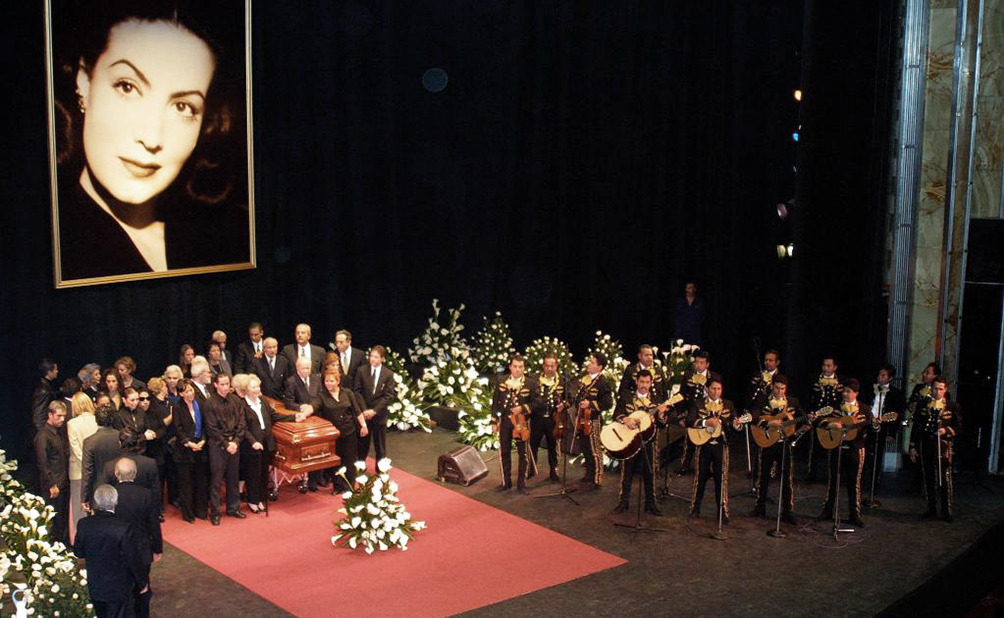
She is buried next to her son and parents in the French Pantheon in Mexico City.
Her lawyer and executor of the will, Francisco Javier Mondragón, announces Luis Martínez de Anda as a universal heir.
Her brother, Benjamín Félix, challenges the will and files a criminal complaint against the heir.
On August 29, the investigation into the alleged murder of the Diva takes the agents of the Attorney General of Mexico City to exhume her remains. Her death of natural causes is confirmed. Her family accepts defeat.
Luis Martínez de Anda moves to the apartment that belonged to Enrique, in the Polanco neighborhood.
The documentary María Félix: Todas mis guerras (María Félix: All My Wars) is shoot as part of the television series México Nuevo Siglo, directed by Arturo Alejandro Pérez Velasco.
The first exhaustive inventories and commercial appraisals of her material and artistic heritage are made.
Assignment and acceptance of the inheritance by the heir.

Cartier pays the first tribute to the memory, personality and style of one of its main clients with the launch of the La Doña wrist watch. She becomes the only actress to be distinguished with the creation of a luxury goods collection (watches, bags, earrings, feathers) named after her. The presentation of the collection takes place in Mexico, where only a select group of guests has the opportunity to see, for the last time, all the artistic pieces that would surprisingly go on auction.
On July 17 and 18, Mexican society and the world of international collecting meet in New York to participate in the La Doña Auction, organized by Christies. The auction raises more than seven million dollars. The heritage and work of a life is separated.
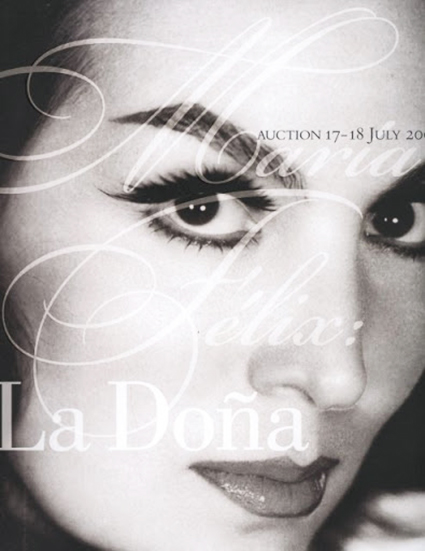
Sale of the apartment that belonged to Enrique Álvarez Félix.
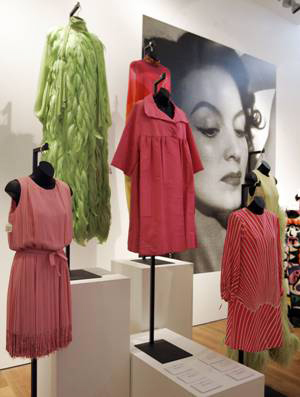
Venezuelan fashion designer Nicolás Felizola presents the María Bonita exhibition in Miami, Florida, which becomes a fashion icon. The exhibition includes a wide collection of cinematic costumes and couture gowns that once belonged to the actress.
The historian Guillermo Tovar de Teresa acquires several books from the actress’s personal library. After writing a text about how this action means the rescue of a part of Mexican culture, auction the books in the so-called Rescue Auction, organized together with the Morton Auction House; part of the amount collected is donated to social works.
Leïla Menchari, in charge of the decoration of the Hèrmes headquarters in Rue du Faubourg Saint-Honoré, dedicates the spring window display to the actress as a tribute and in remembrance of their friendship.
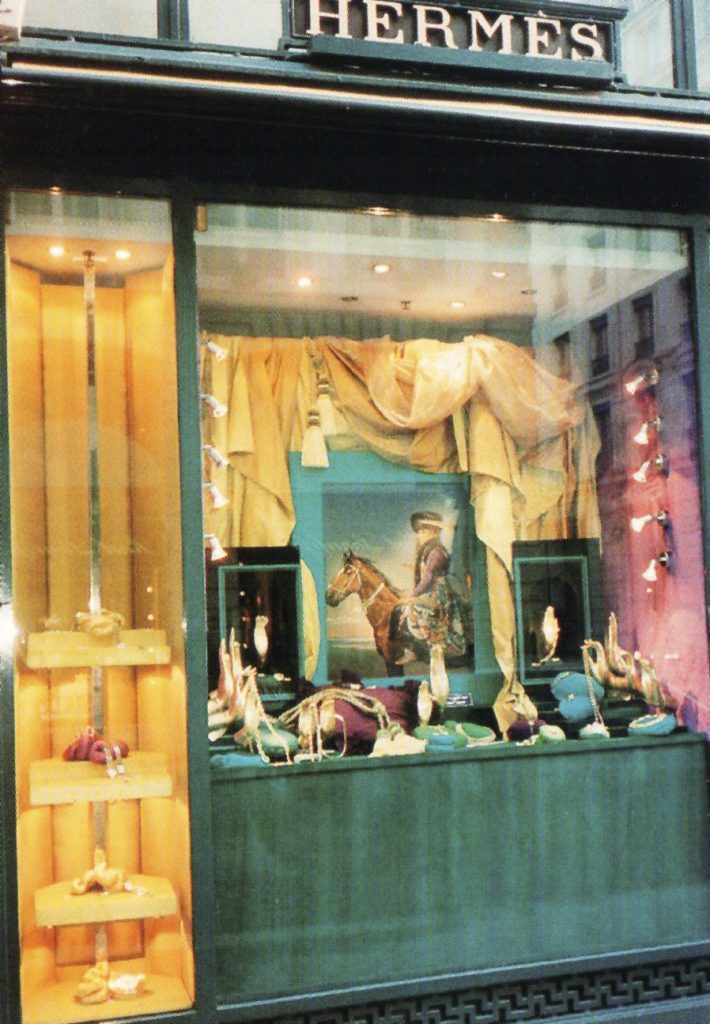
Sale of the Casa de las Tortugas.
Nicolás Felizola presents in New York, as a thematic axis of the PINTA’s Latin American modern and contemporary art fair, a space dedicated to María Félix, displaying her costume collection, as well as some recent fashion creations inspired by the life of the actress.
A first set of La Doña’s belongings appears on the market. Its sale means the beginning of the formation of specialized collections.
Several objects that belonged to her are suddenly found in Mexican Auction Houses, something that raises interest. Antique silverware and emblematic costumes are available for shoppers at Monte de Piedad Auction House in Mexico City. Jewelry pieces are sold anonymously in various specialist shops in the Polanco neighborhood.
Her heir decides to sell all the personal and artistic assets of the actress.

The sale of the artistic collections of the actress continues: now it is the turn of the pictorial exhibition of Antoine Tzapoff, Los Indios de México, which is accompanied by portraits that were in the Casa de las Tortugas, as well as in her houses in the Polanco neighborhood and Paris. In a few weeks, more than sixty paintings are sold, satisfying market demand.
Sale of the house at 610 Hegel Street.
The centenary of her birth is commemorated.
A part of Mexican history is lost during the demolition process of her house in the Polanco neighborhood. Jacobo Zabludovsky raises his voice against the demolition.
The date does not go unnoticed thanks to various small-scale tributes; many of them are organized by her fans.
The stage of professionalization of her legacy begins with the formation of the funds of several of her collections.
Under a historical view of an academic nature, a foundation that bears her name is legally established in order to spread the memory and cultural legacy of the actress. The first efforts are led by Walter López Rivera, Hanzel Ortegón, Gonzalo Rodriguez, among others.
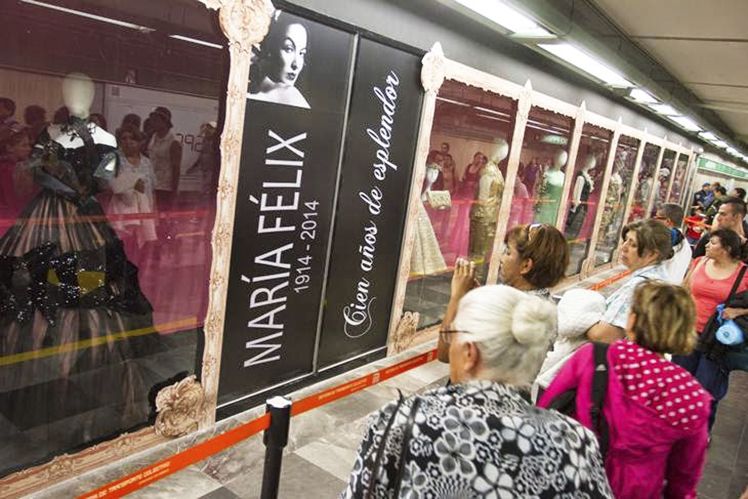
On April 8, the Foundation is formally launched with the presentation of the exhibition María Félix: 100 años de esplendor (María Félix: 100 Years of Splendor), in the facilities of the Mexico City subway –the glorious outcome of that project that she considered not only as a personal gift from her husband, but also as a gift for her country. More than eight million people have the opportunity to see for the first time a selection of her film costumes and personal gowns.
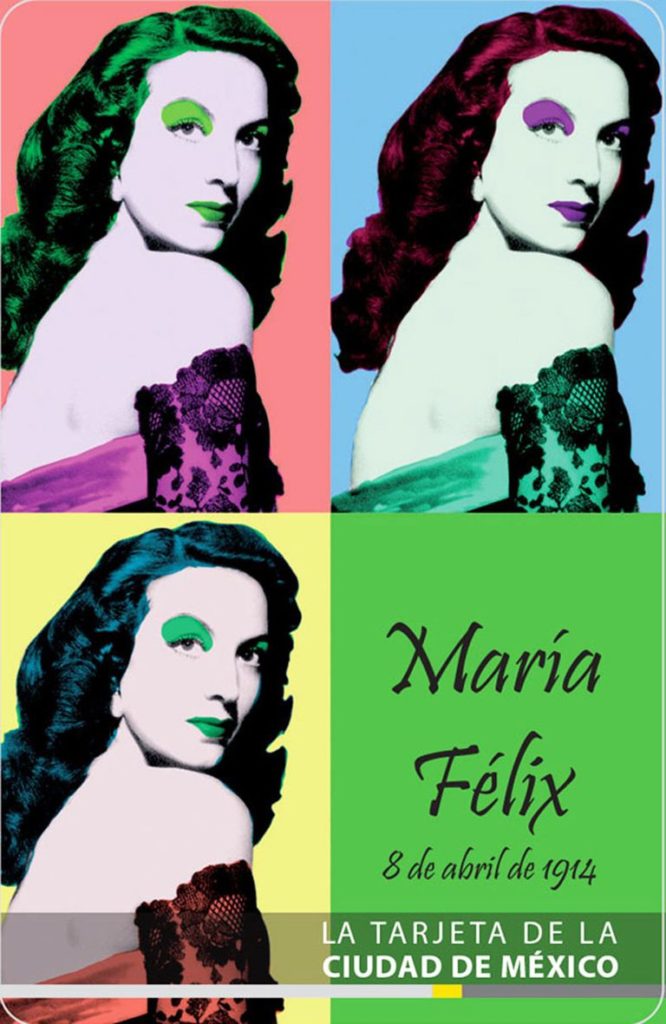
The Foundation, together with the Ministry of Culture of the Government of Mexico City and the Metro Collective Transportation System, issue ten million commemorative subway tickets alluding to the centenary of her birth, as well as one hundred thousand rechargeable subway cards with the designs of Juan Alberto Flores Rojas. From this date on, a subway train decorated with her face and name will circulate daily on line 7 (Barranca del Muerto-Rosario) of the Mexican City Metro system.
Thanks to the initiative of the association that would later be consolidated under the name of Fomento Social María Félix, A.C., created by Walter López Rivera, is rescued an old square for which La Doña had donated a bust. The square is rehabilitated and, together with the City Council of Cuernavaca, Morelos, it is inaugurated as the first square in the country named after her.
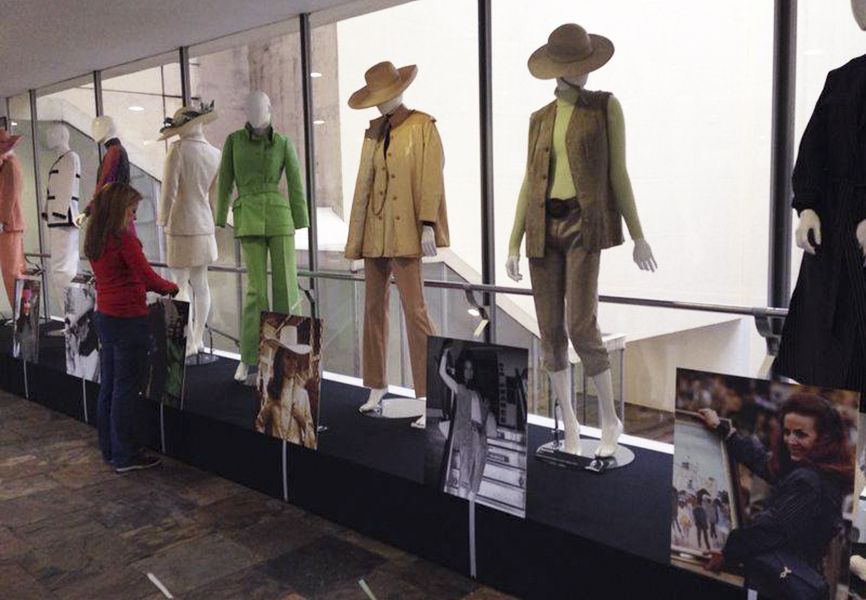
In homage to her love for horse racing, the Foundation, together with the Hipódromo de las Américas, establishes and grants the María Félix Award to the special race of this year.
The Cineteca Nacional joins the tributes to the actress and presents an exhibition with forty-five images by photographer Héctor García. The exhibition travels through various venues and film festivals in Mexico before going to London.
The President of the National Council for Culture and the Arts of Mexico (CONACULTA), Rafael Tovar y de Teresa, opens the María Félix bookstore within the Cineteca Nacional.
At the head of the Foundation, Hanzel Ortegón presents the exhibition María Félix: Belleza cautiva (María Félix: Captive Beauty), at the cultural center Casa de la Primera Imprenta de América (House of the First Printing of America) of the Autonomous Metropolitan University of Mexico (UAM). The exhibition includes a selection of the actress’ film costumes, as well as documents and accessories, and emphasizes her international film career.
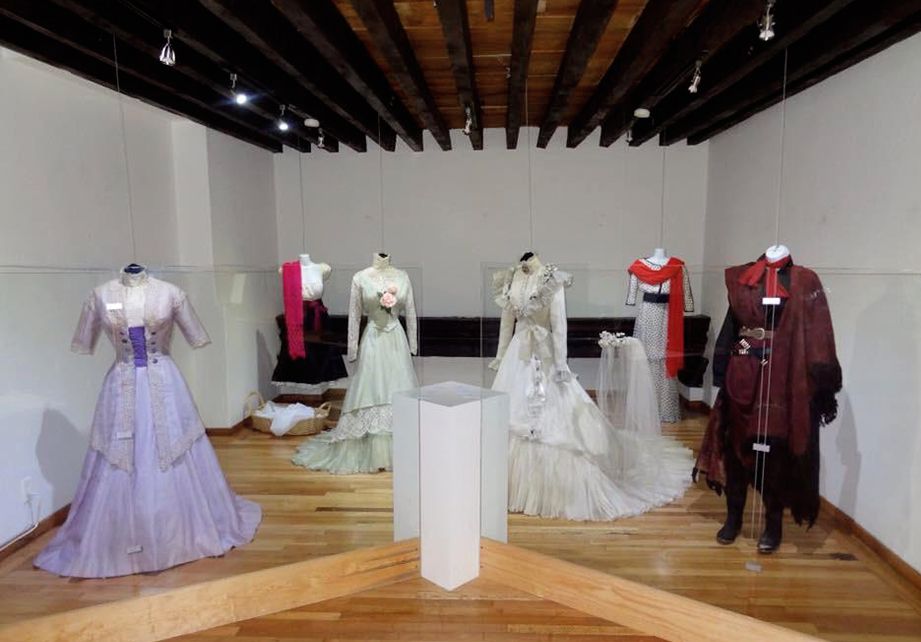
The name María Félix becomes a trend in social media thanks to several specialized pages and analysis and discussion forums. The pages Los Angeles de María by Ricardo Castro Corrales and Todas mis guerras by Horacio Jacobo Zacarias are noteworthy, since they would become a reference in what concerns the life of the Diva.
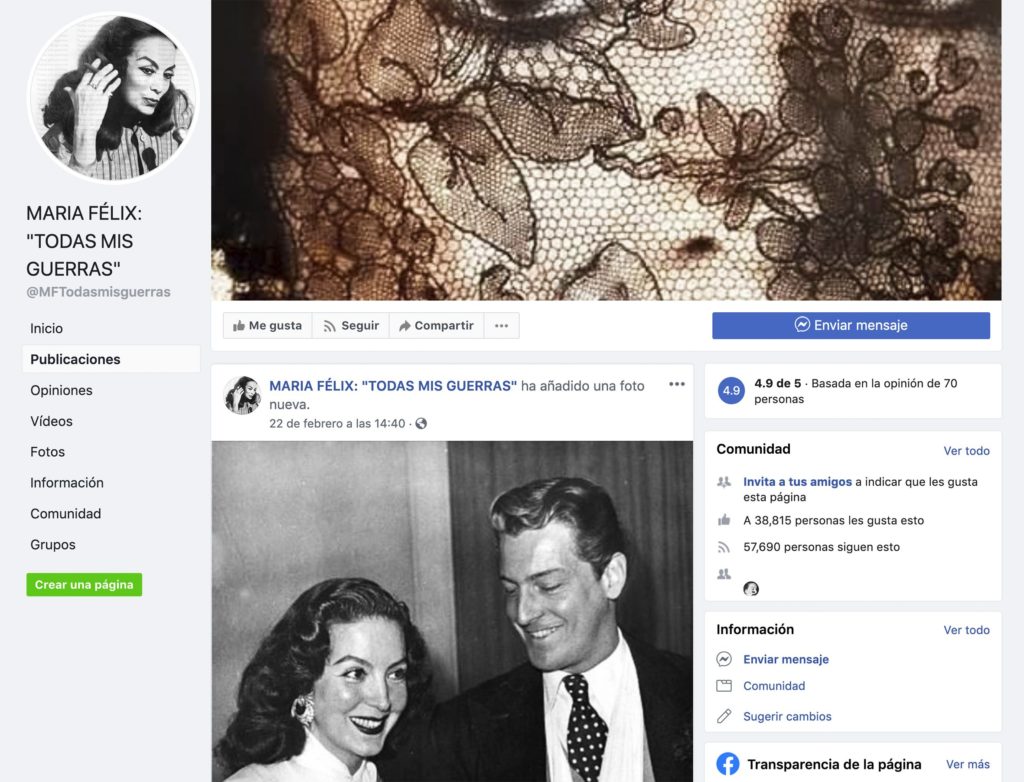
At the head of the Foundation, Hanzel Ortegón presents the photographic exhibition Los días y las horas de María. Instantes sobre plata (The Days and Hours of Mary. Moments Engreved on Silver), at the cultural center Casa Rafael Galván of the Autonomous Metropolitan University of Mexico (UAM). The exhibition includes a selection of sixty unpublished and intimate pictures from María Félix’s personal archive.
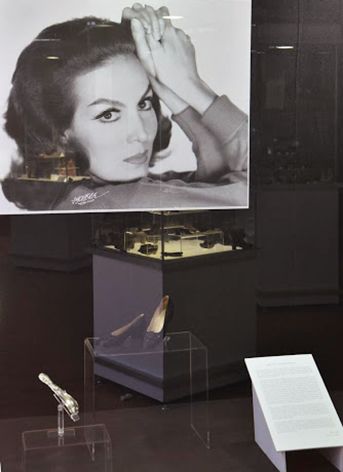
Hanzel Ortegón presents the exhibition Los suburbios del cuerpo (The Suburbs of the Body), a space in permanent tribute to María Félix, at the El Borceguí Footwear Museum.
In order to assist and address artistic, cultural and philanthropic needs through alliances and projects for the benefit of various sectors of society, the Social Development María Félix, A.C. is created in Mexico.


The creation and legal-nominative establishment of the organization Estate of María Félix SA de CV, directed by Walter López Rivera, finally rectifies the legal vacuum that was generated after the death of the actress, which had allowed the indiscriminate use of her image, the use of false information that negatively impacted her cultural heritage in the history of Mexico, and other actions that morally deteriorated her figure. The organization Legado María Félix is an international authority in charge of taking the necessary actions for safeguarding the proper use of all images and information related to the professional and personal trajectory of La Doña.
Google honors her 104th birthday with a Google Doodle created by artist Paulette Jo.
The Museo de Noreste (Museum of the Northeast) presents the exhibition María Félix: La Diva y su vestuario de cine (María Félix: The Diva and her Film Costumes) in Monterrey, consisting of one hundred and thirty pieces of her wardrobe.
For the second time, Cartier pays tribute to the actress by launching a jewelry collection based on the iconic crocodile necklace. The creators of the original jewelry piece are in charge of the new collection, which includes a necklace, a bracelet, a ring and earrings sumptuously decorated with emeralds.
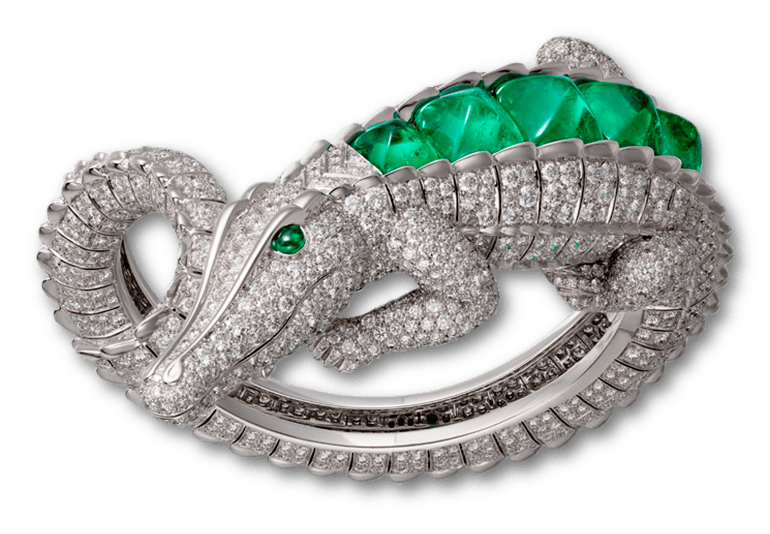
The collection is presented exclusively to the magazine Quién, in an event where the arduous conservation work carried out to preserve the Casa de las Tortugas and the collectors’ items within it, for seventeen years after the departure of the actress, is emphasized.

